Capital:
Tokyo
Currency
Yen
Best time to visit:
Spring (from March to May) and autumn (from September to November) are the most pleasant times to leave. In summer, humid heat is sometimes annoying and at the end of August there is also the risk of typhoons. In winter it snows in Hokkaido and on the coast, but there are many interesting offers, especially for Kyoto and, although your teeth are chattering in Honshu, autumn and winter are perfect for reviving your tan in Okinawa.
In a word:
Sugoi (cool)
Vaccines
None
Warnings:
- During meals, remind your children to never leave chopsticks stuck in rice: it is a gesture associated with funerals
- For the cities, get a good map written in Japanese and English.
At the table:
Japanese cuisine is varied and tasty. Children will be thrilled with yakitori-ya (restaurants serving grilled chicken and vegetable skewers), ramen-ya (specializing in Japanese noodles) and, perhaps, even sushi-ya (specializing in sushi). savory pancakes) and omuraisu (omelette stuffed with rice)
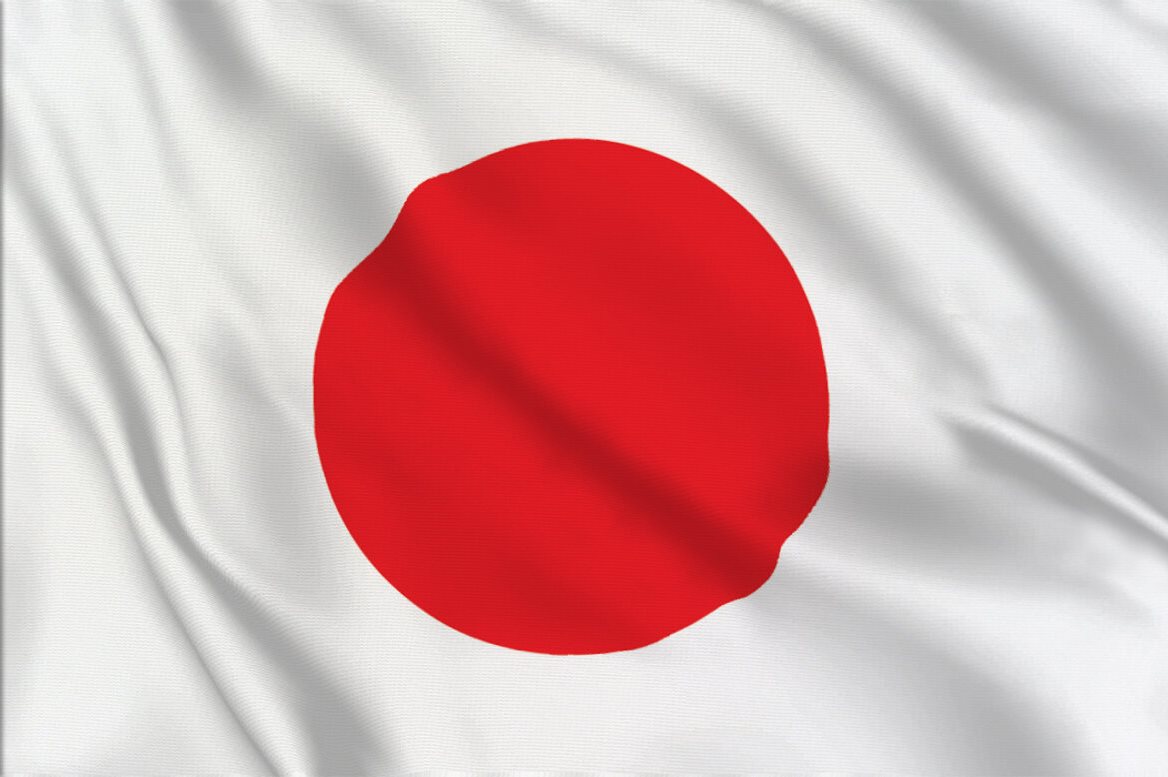

Essential experiences:
Lose unconsciousness after an onsen immersed in the forest completely naked; Meet wonderful maiko around the typical alleys of Kyoto; Admire the snow macaques relax in the thermal pools of the Japanese Alps
In this great adventure we reached Hiroshima from the Korean port of Busan, by ferry, from there on board the shinkansen, the bullet trains that travel at 300 km per hour we slowly climbed the long Japanese island. It is essential to use the Japan Rail Pass which is a discounted and multi-use ticket, valid for travel on all JR national trains in Japan, including the Shinkansen and Narita Express "bullet trains". It is possible to buy it only from abroad (online) and from non-Japanese and it is an excellent source of savings considering the skyrocketing prices of Japan.
We have used different means of transport: from trains to buses to hitchhiking; slept in hostels, ryokans and often guests of the premises thanks to couchsurfing and tasted typical Japanese cuisine in traditional restaurants but also at 7eleven, thanks to the excellent trays of freshly prepared sushi.
Here we tell you about our direct experience in the Kingdom of the Rising Sun, everything that has happened to us and that we have lived hoping to leave you some useful travel ideas!
Our suggested itinerary (24 days) | |
four days: | Fukuoka, Hiroshima, Osaka |
one week: | Nara, Kyoto |
three days: | Matsumoto, Nagano, Jigokudani NP (visit to the snow macaques) |
three days: | Tsuruoka, Dewa Sanzan NP, Nikko |
| one week: | Tokyo |
The Kobee Line ferry takes us to Fukuoka from Busan, South Korea in three hours! It is so comfortable that I would have liked the trip to last longer.
Same desire shortly after when, in the majestic "Shinkansen Hirari" we reach, in one hour, the city of Hiroshima.
This land is surprising and fascinating us from the first moments ...
We took the train and ferry this morning to the island of Miyajima, one of the main attractions of Japan. In 5 minutes of navigation we find ourselves in front of the O-Torii Gate which welcomes us with the vermilion red of its structure.
We visit the Itukushima-Jinja with great interest, a sort of temple founded at the end of the 6th century. What really enchants us is the Senjo-Kaku, a colossal 1600 pavilion enriched by a brightly colored five-story pagoda.
The whole island is inhabited by "omnivorous" fawns that eat everything ... including our map!
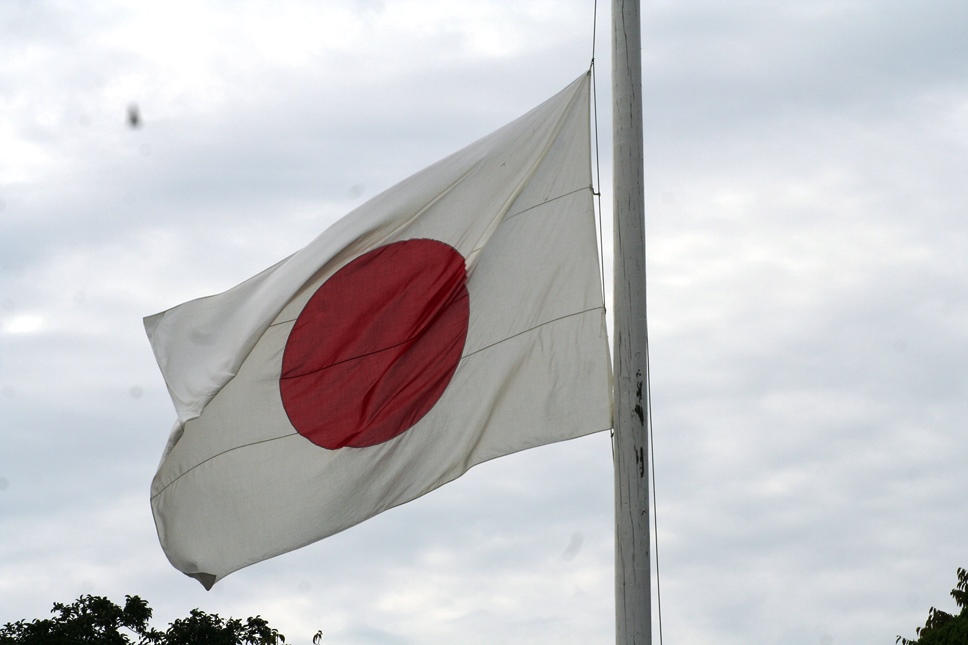
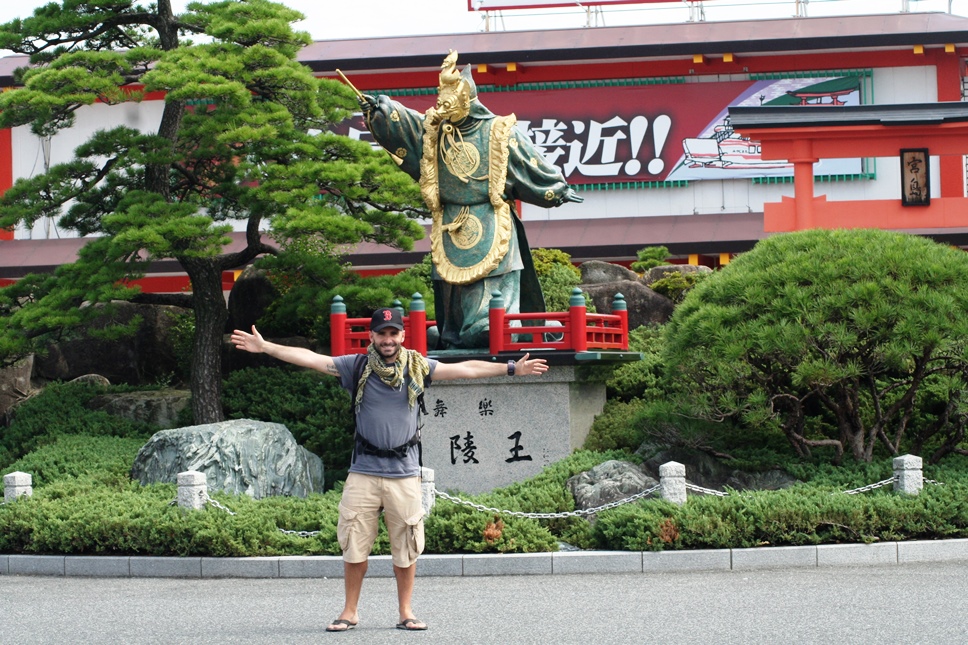
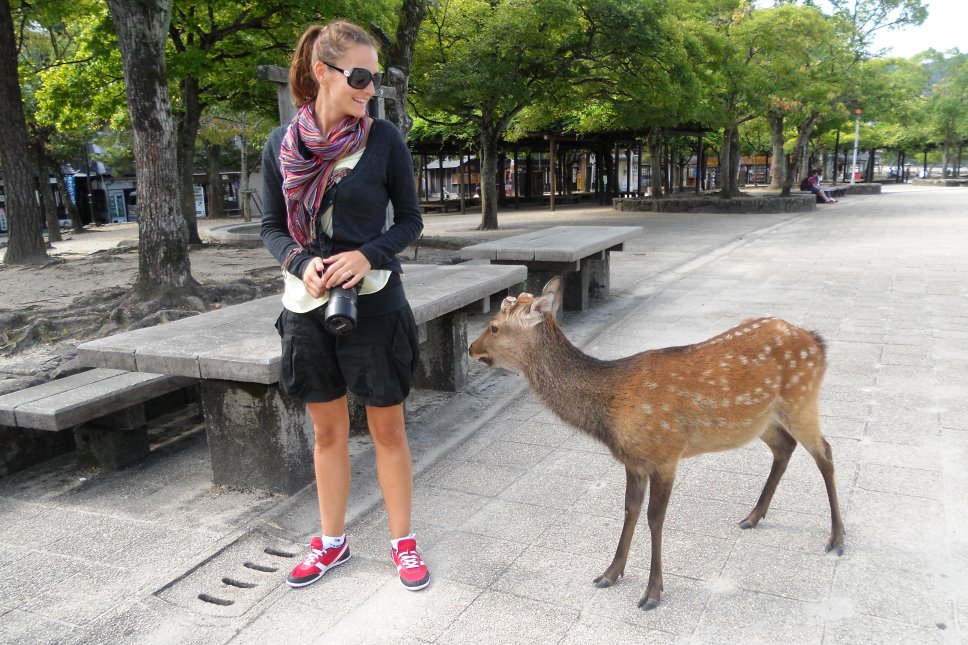
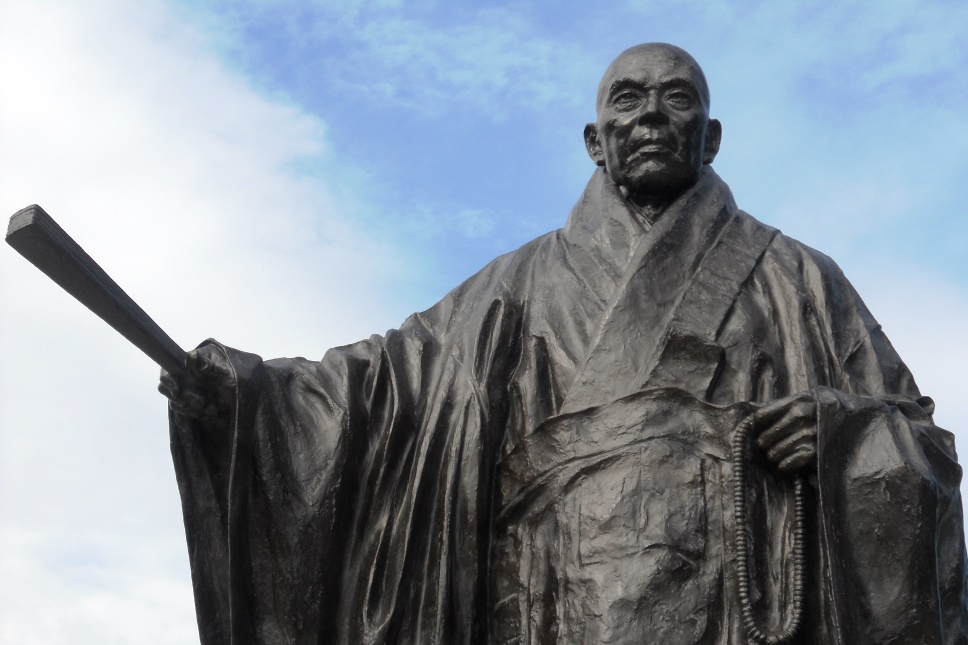
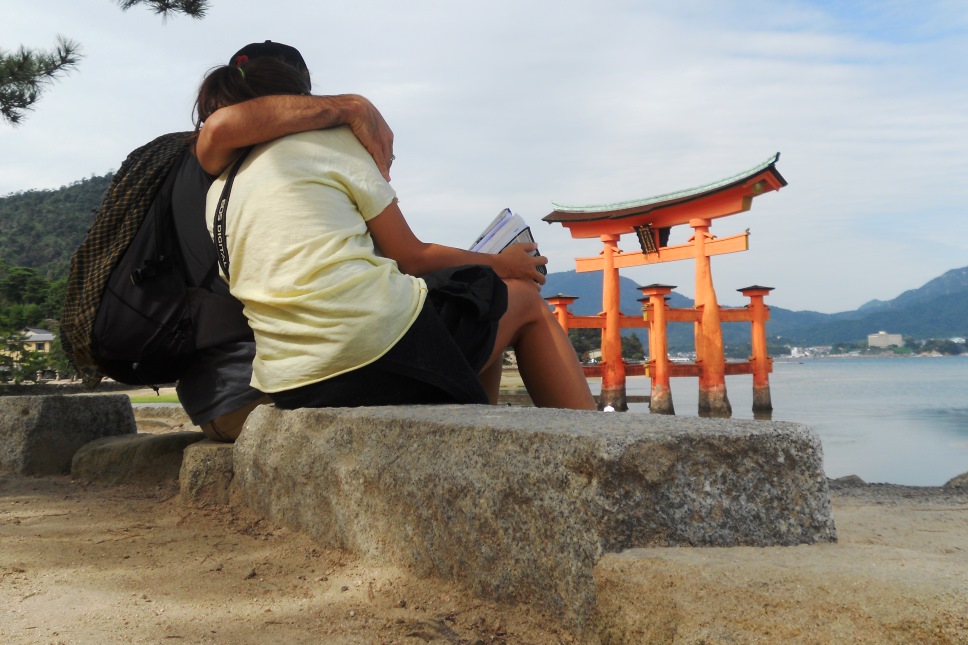
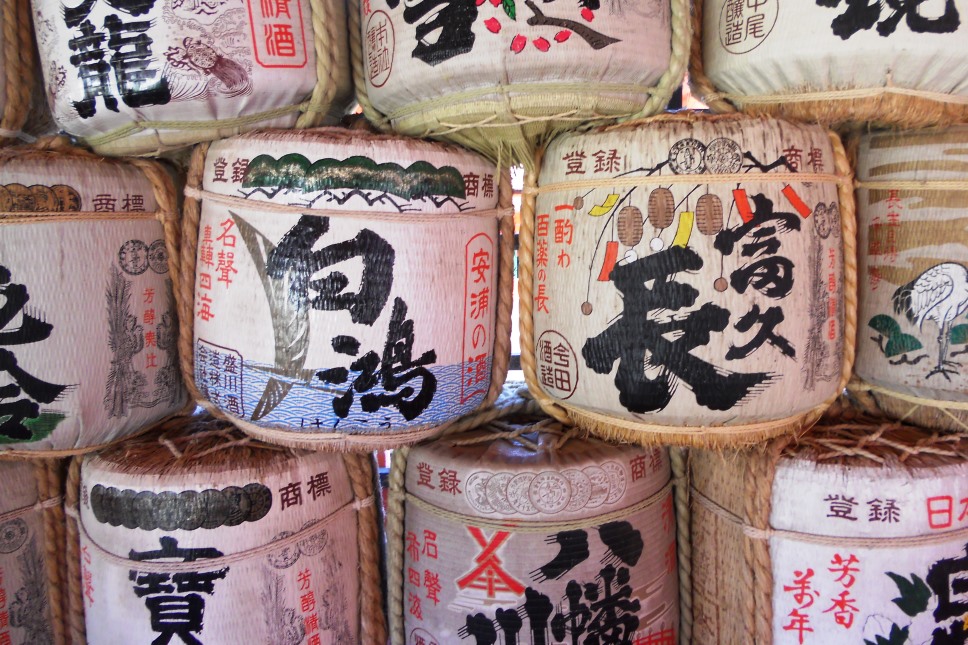
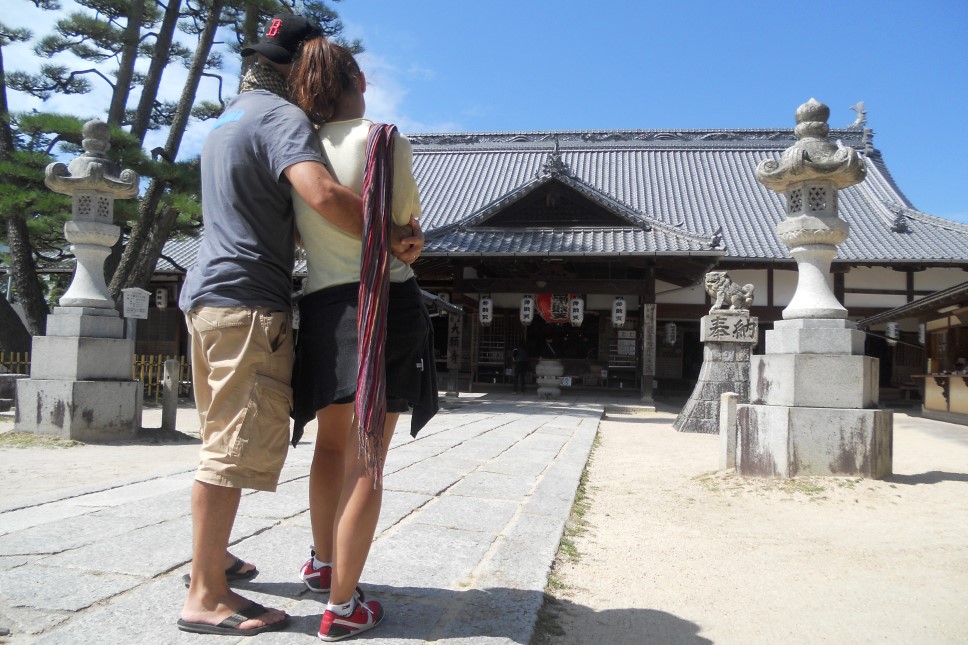
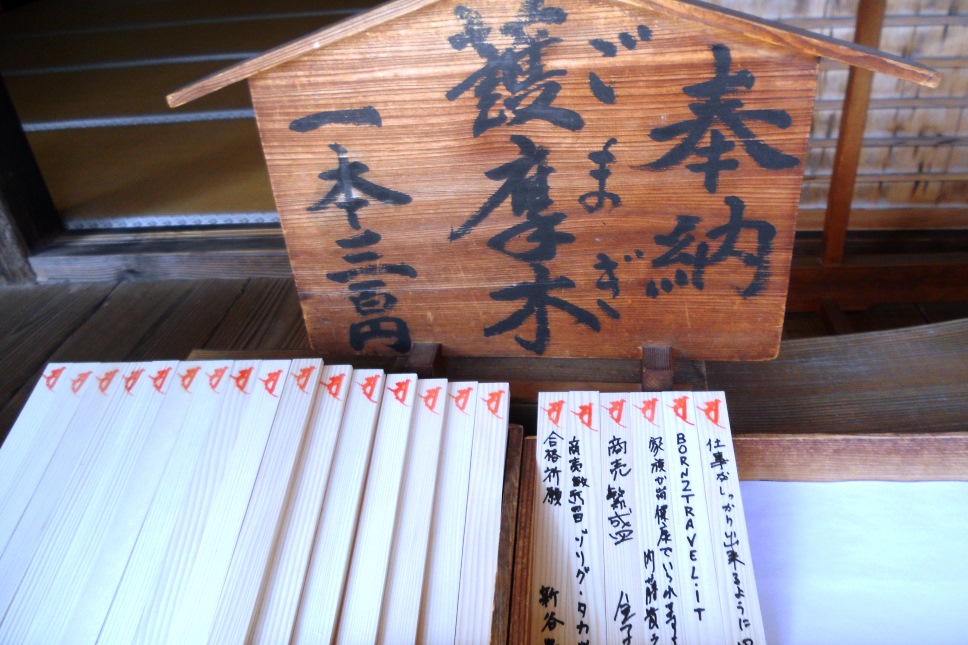
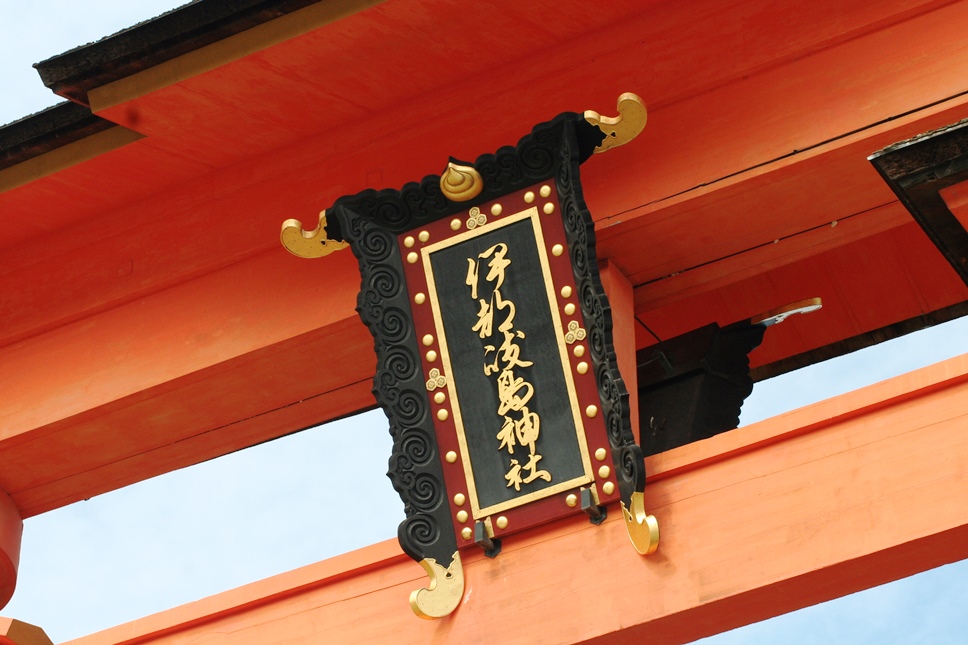
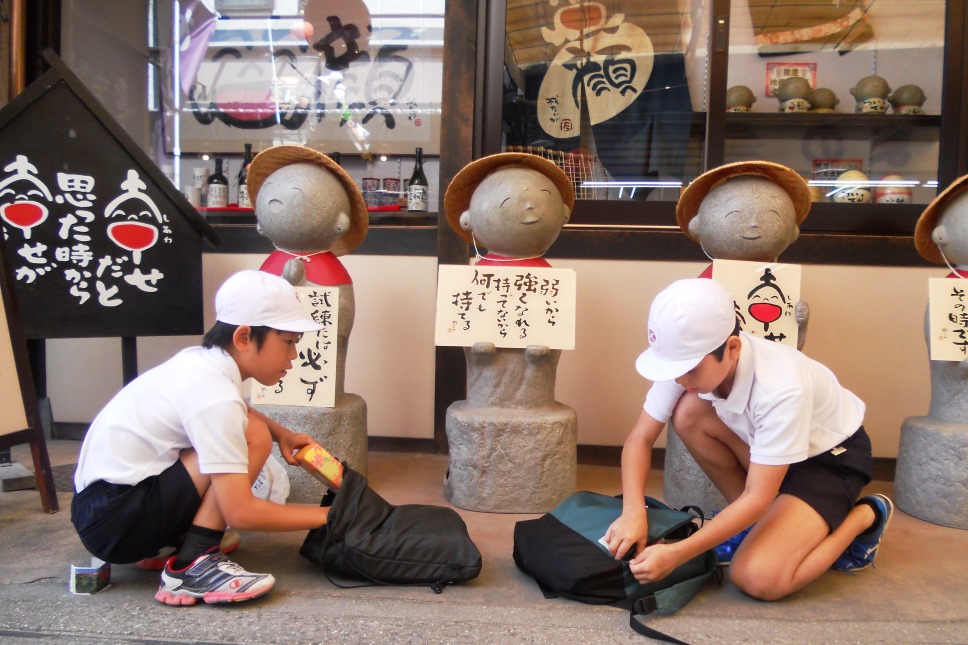
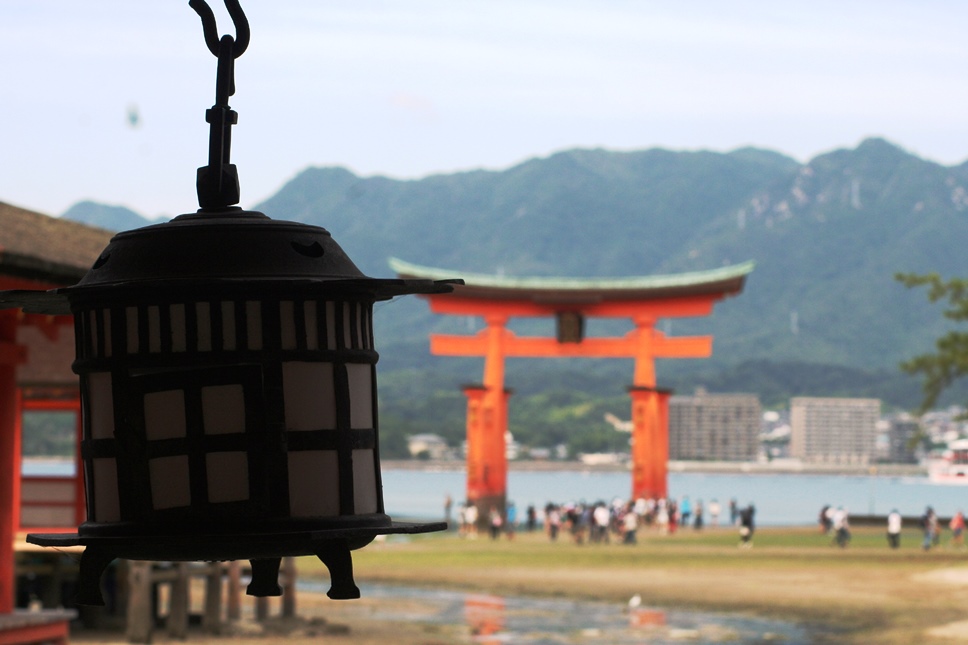
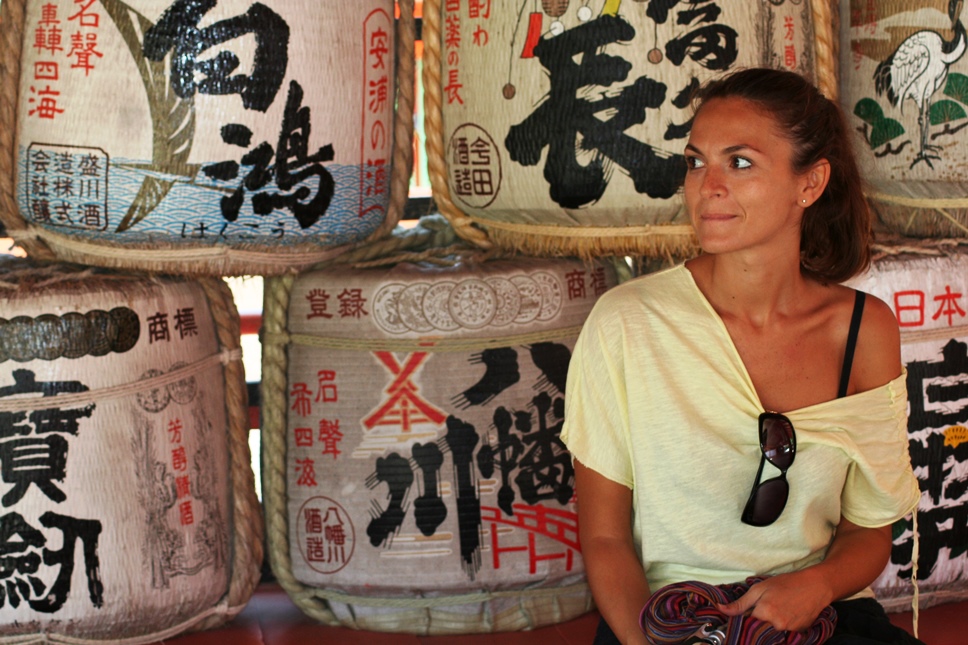
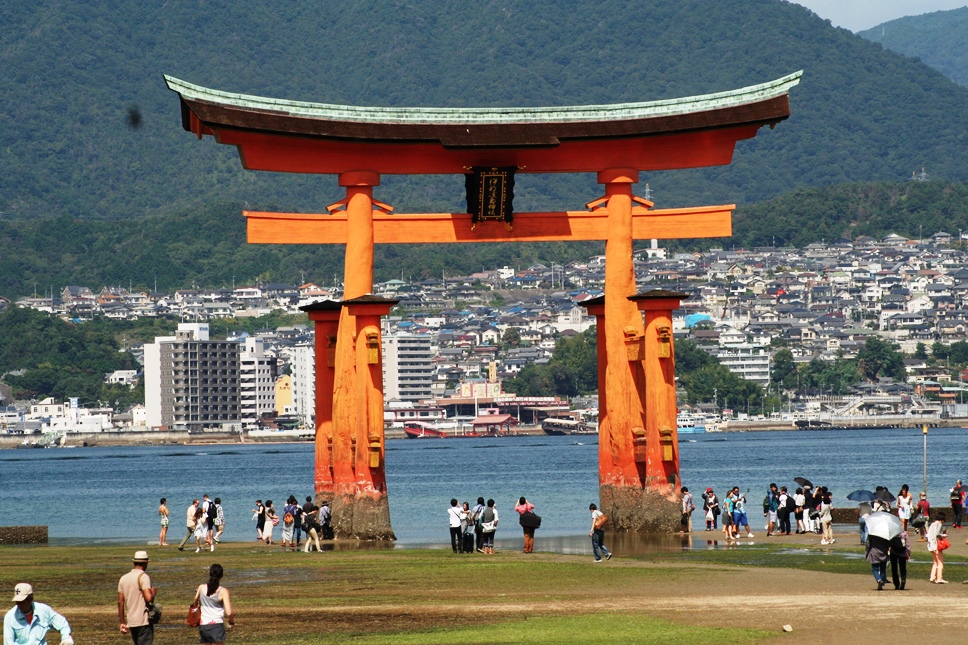
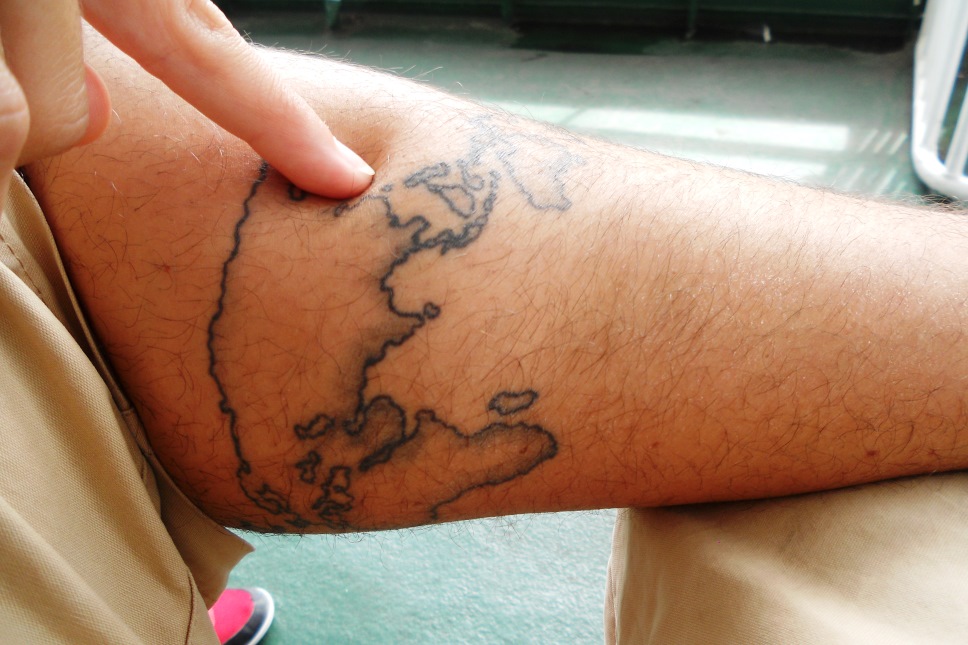
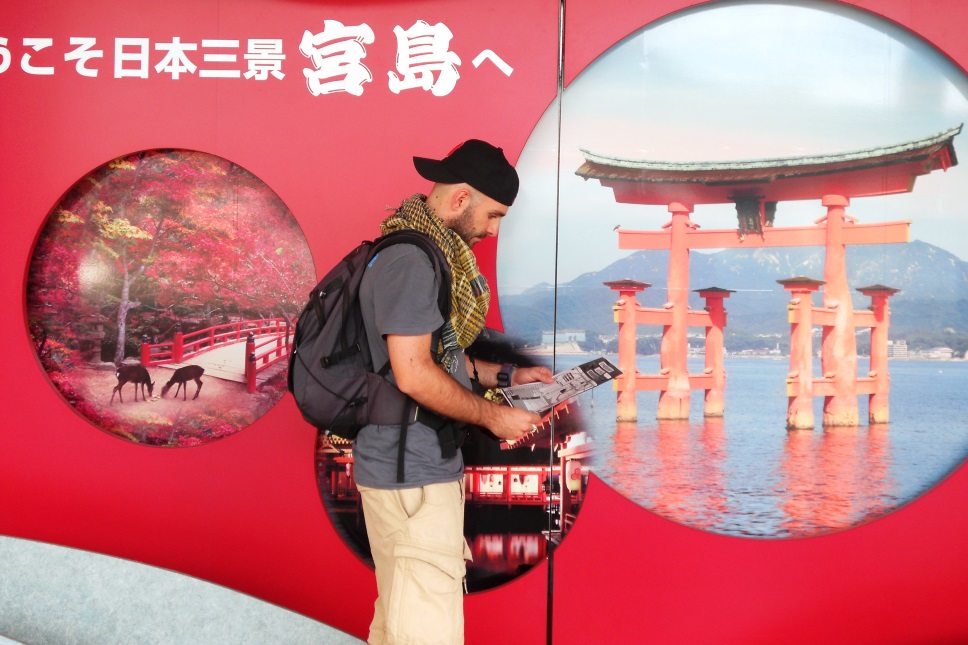
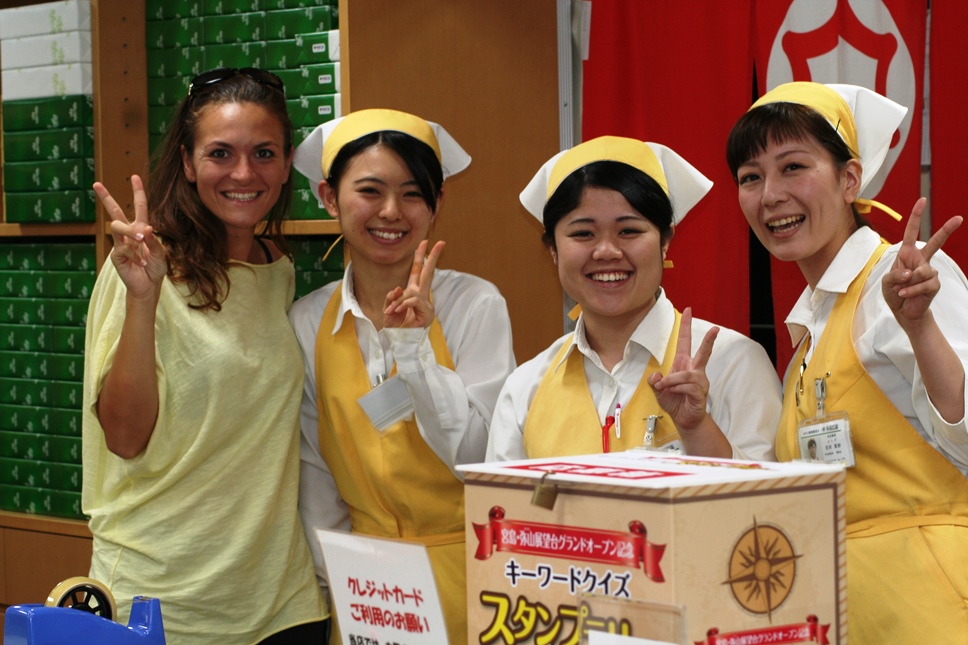
We decide to return to Hiroshima to visit the "atomic bomb" area.
From a distance we immediately notice the dome symbol of the devastation that has affected this city and its inhabitants; now there is only the skeleton of the building and a lot of quiet.
We visit the Parco della Pace, the Cenotaph with all the names of the confirmed dead; the flame of peace that will be extinguished only when the world's last atomic weapon is destroyed.
Next to it is the monument for the peace of children adorned with hundreds of colorful origami in the shape of a crane in memory of an 11 year old girl: Sadako Sasaki who, in 1955, fell ill with leukemia and decided to build 1000 paper cranes, he thought he would heal at the end of his venture ... he died just before ... since then, many Japanese have created colorful origami in the shape of a crane to hang on his memorial.
Every man should visit this place because I doubt anyone could bring up such evil again. Sometimes man can be so cruel that it scares me.
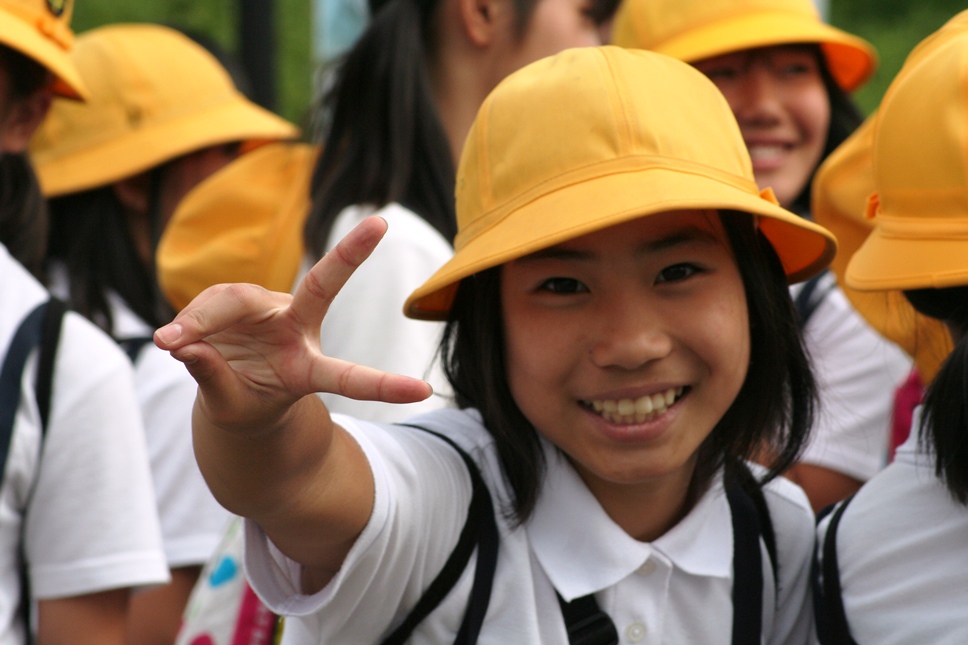
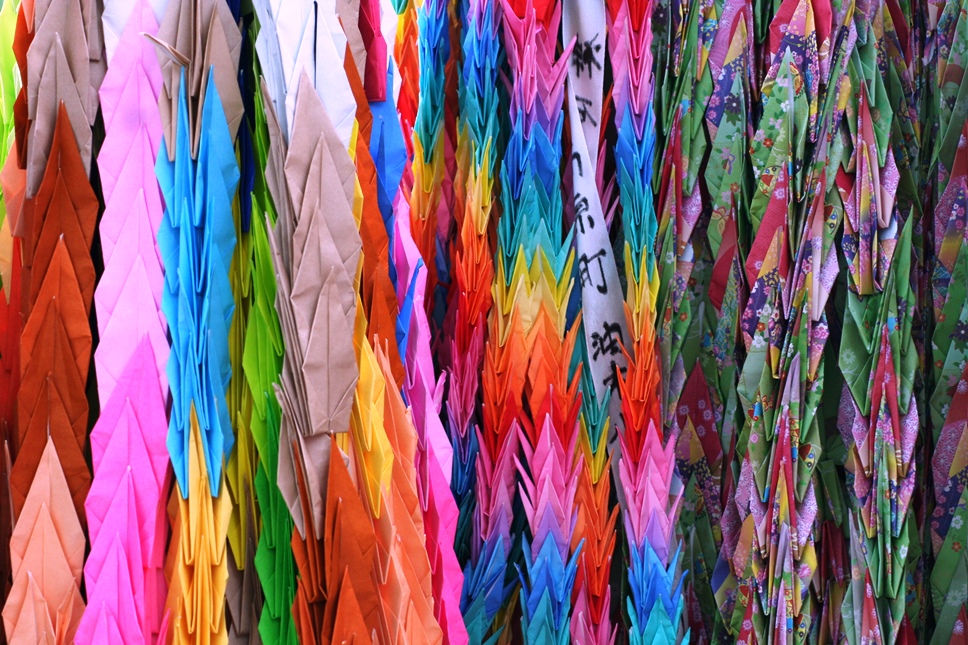
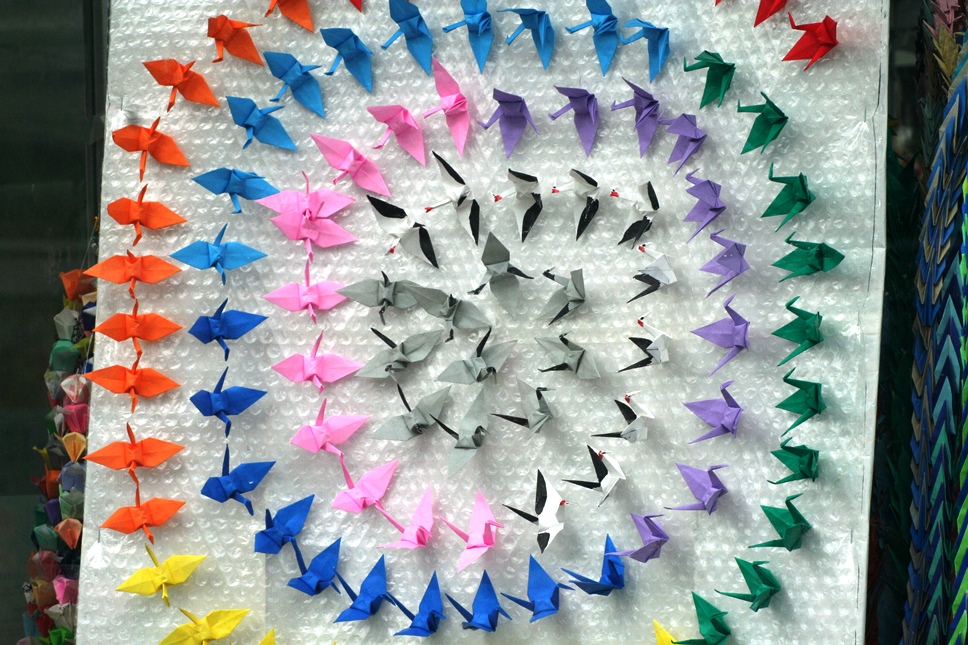
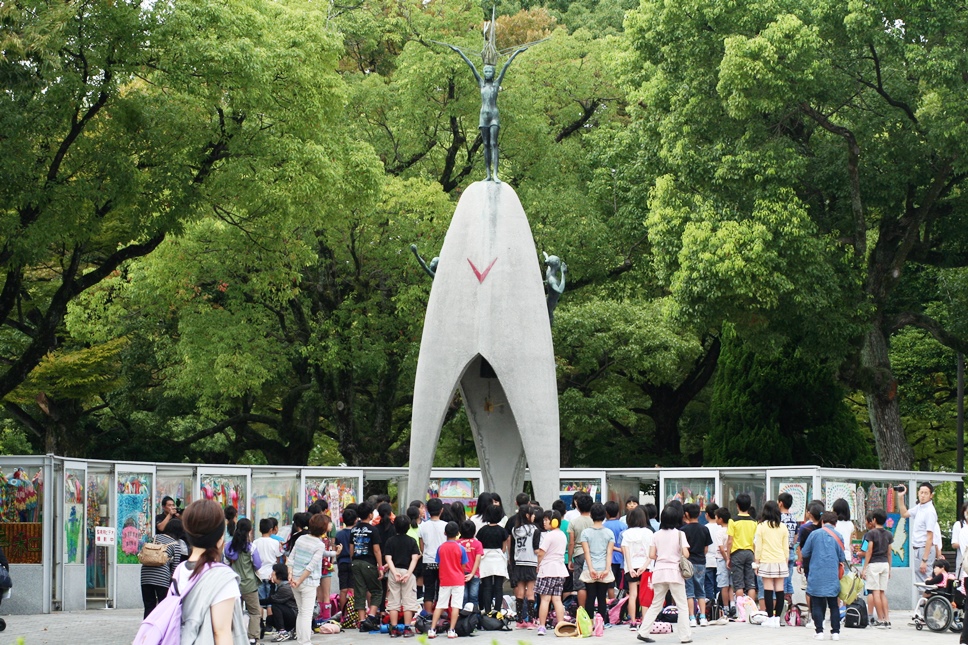
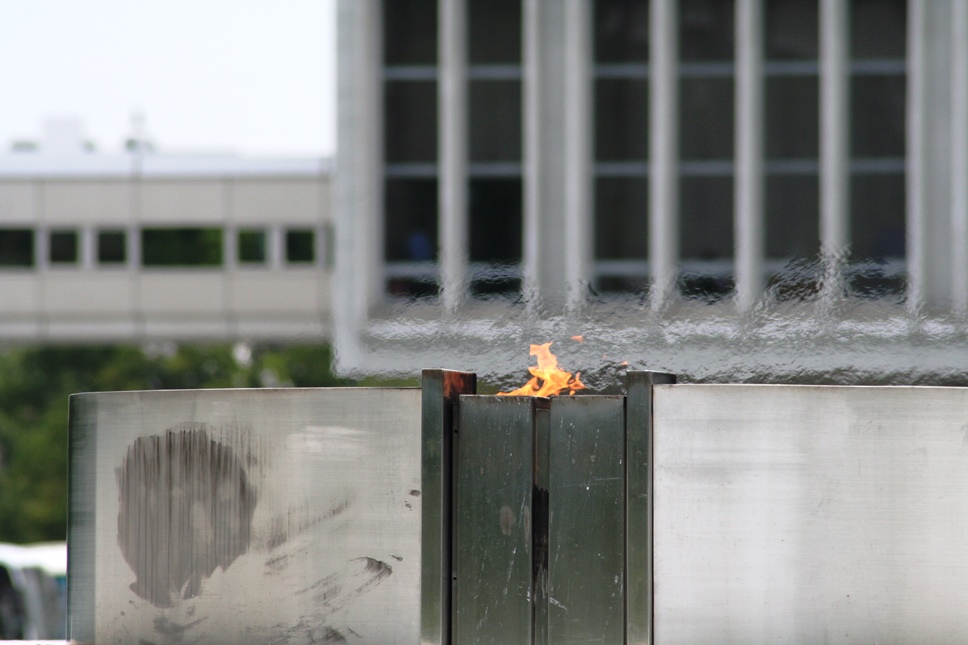
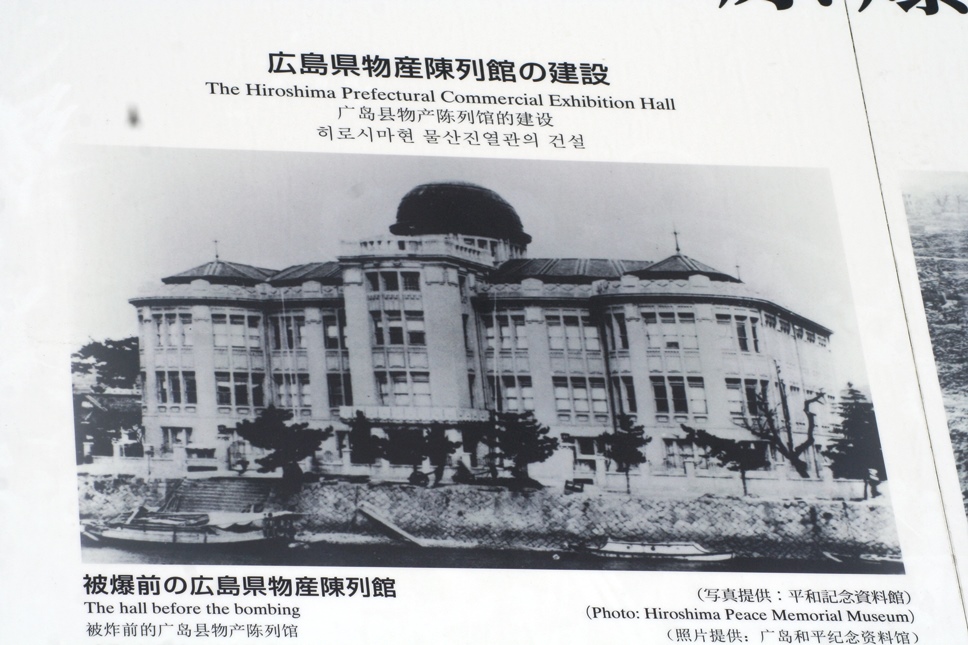
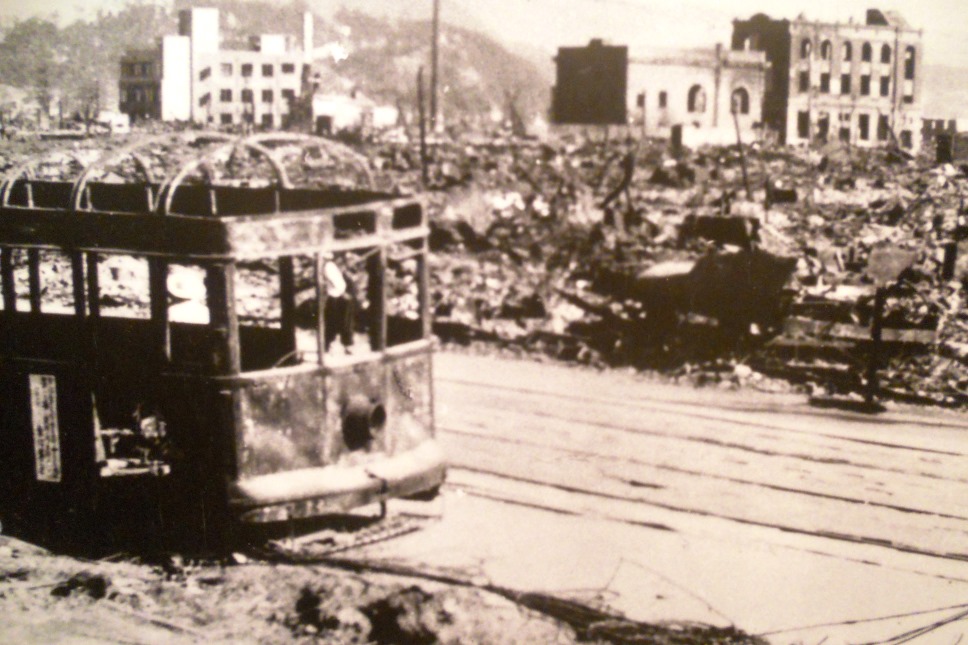
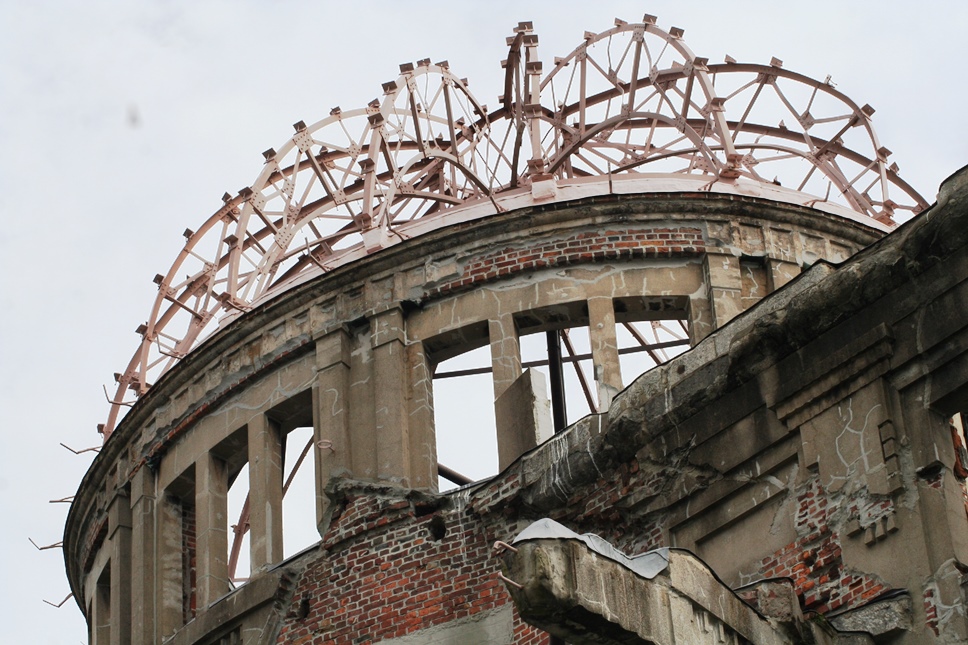
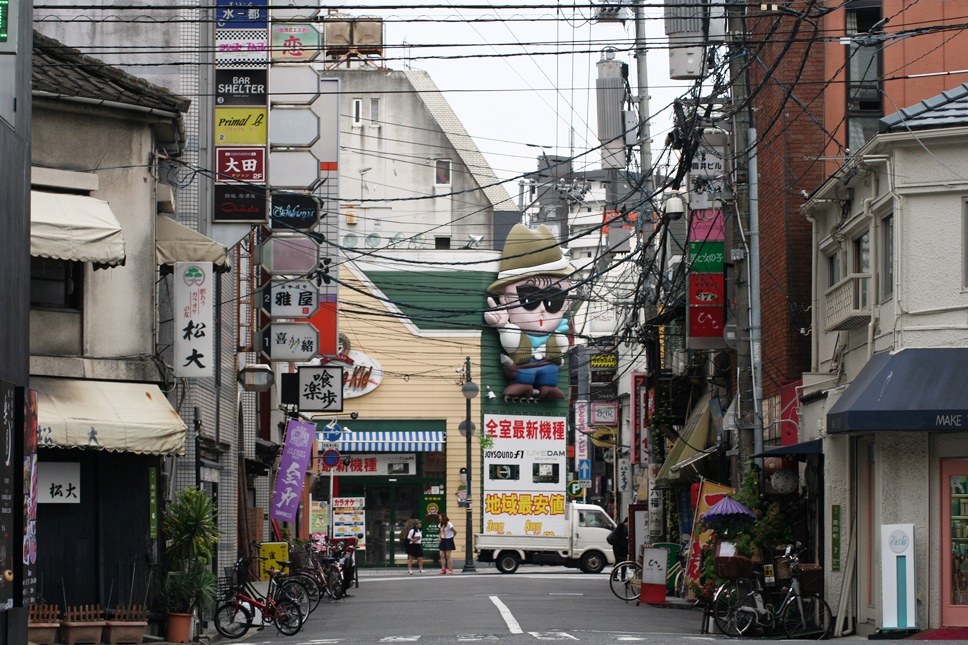
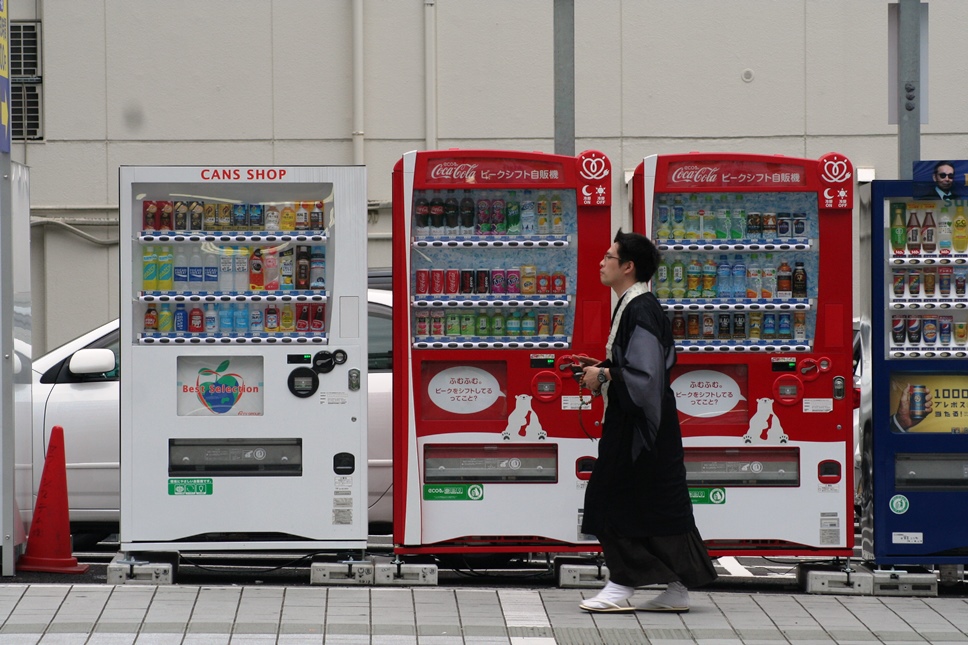
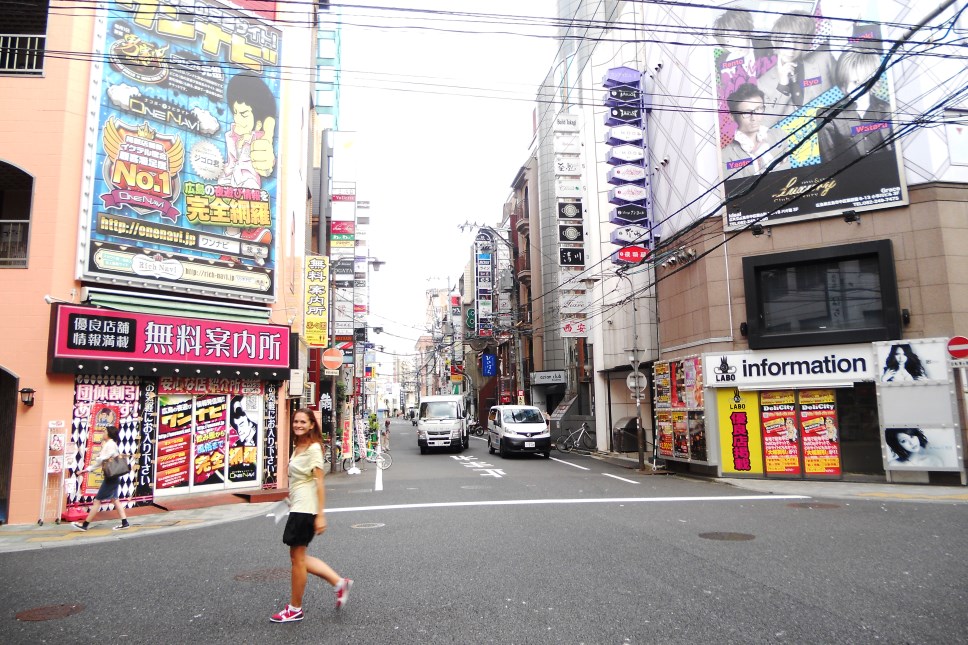
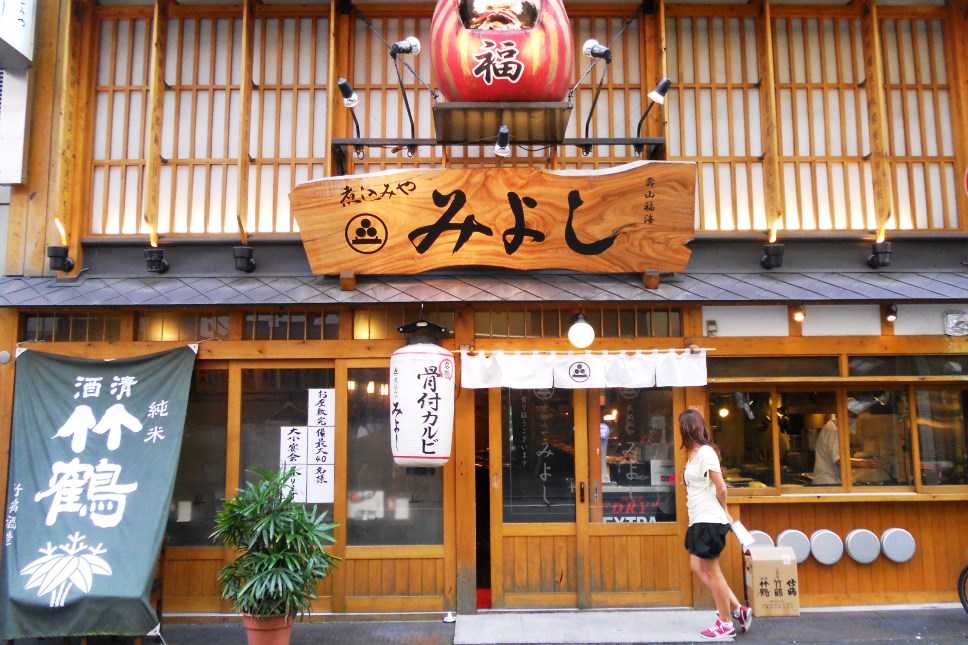
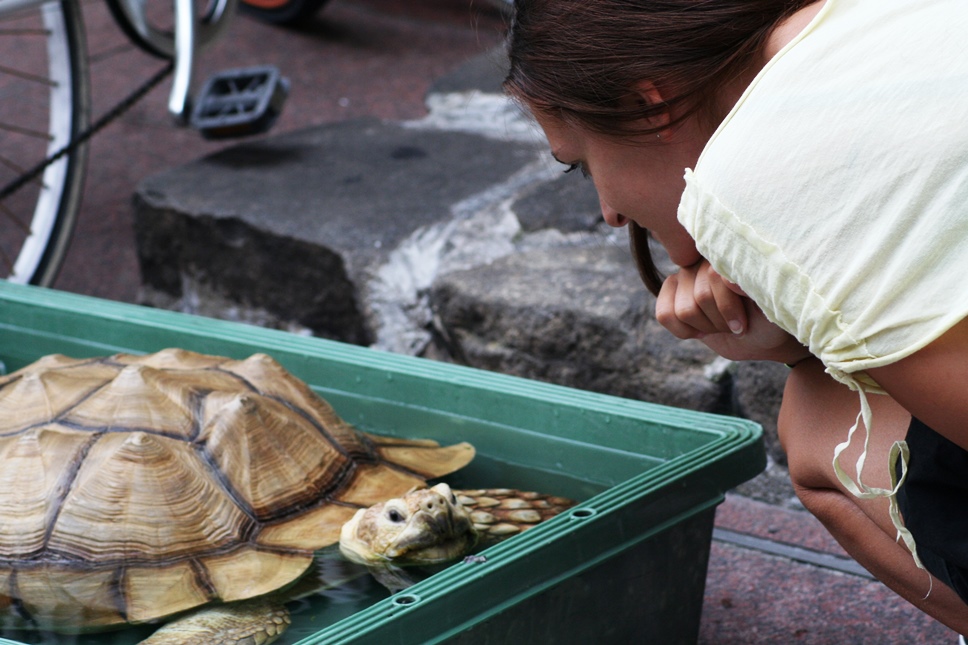
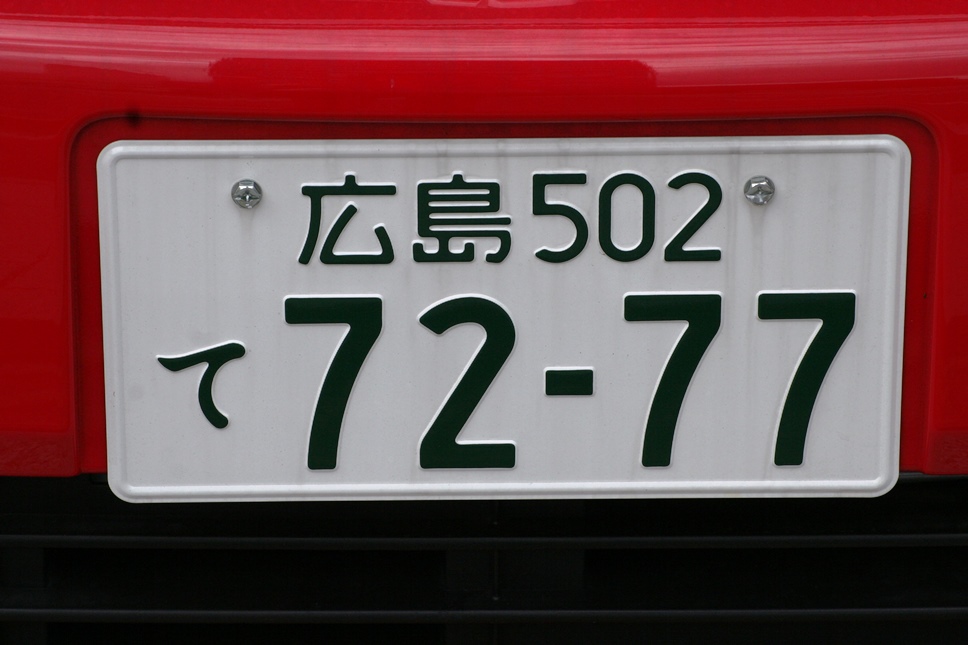
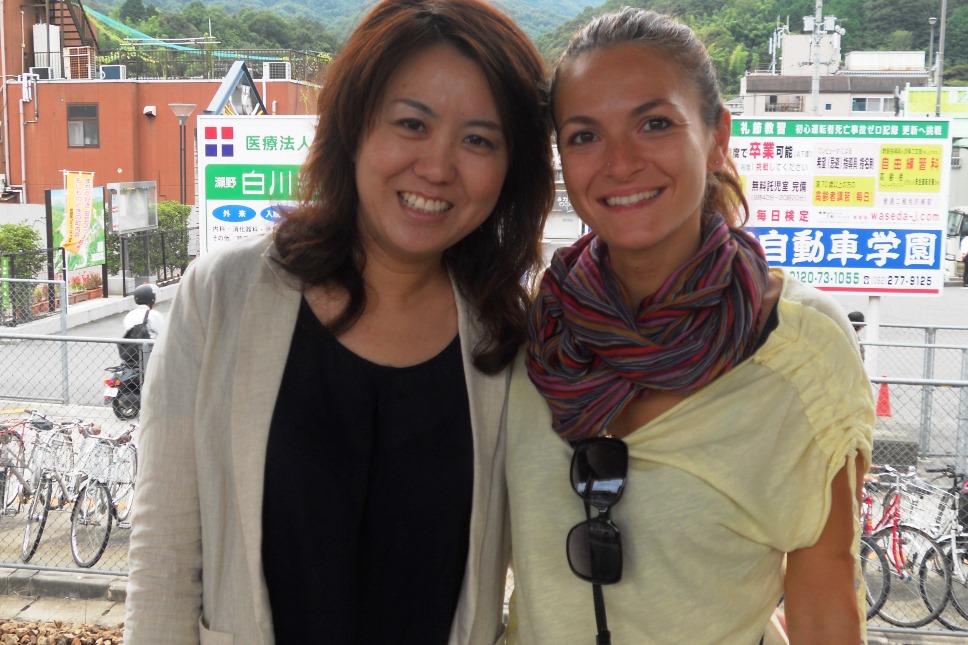
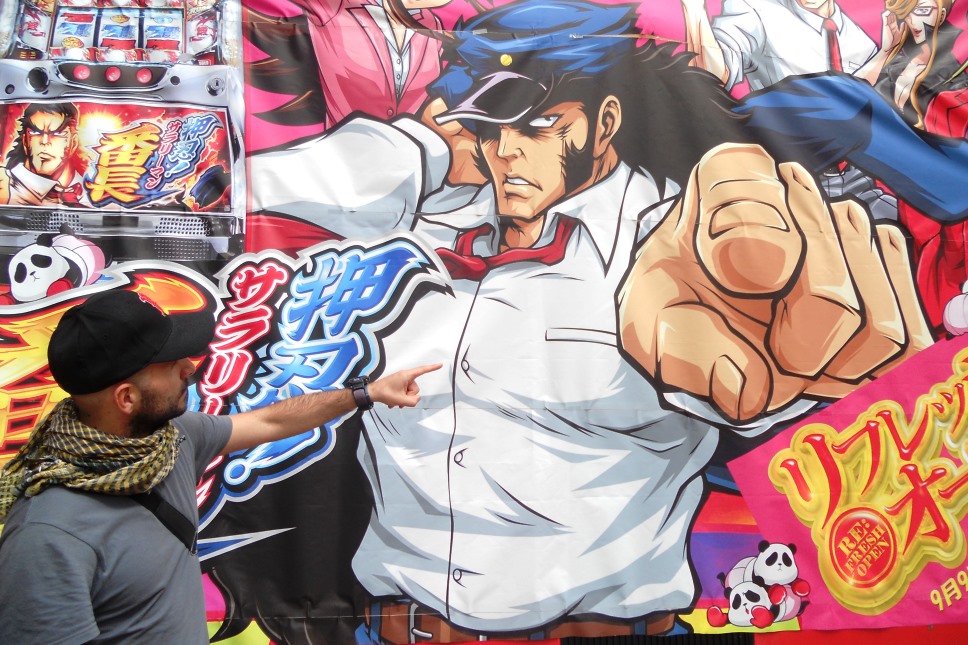
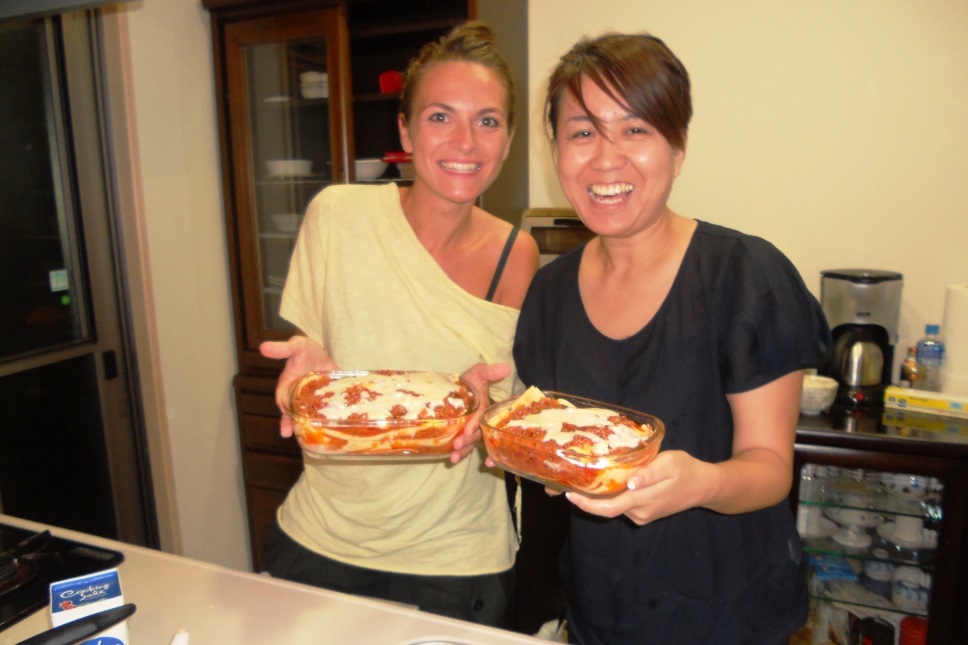
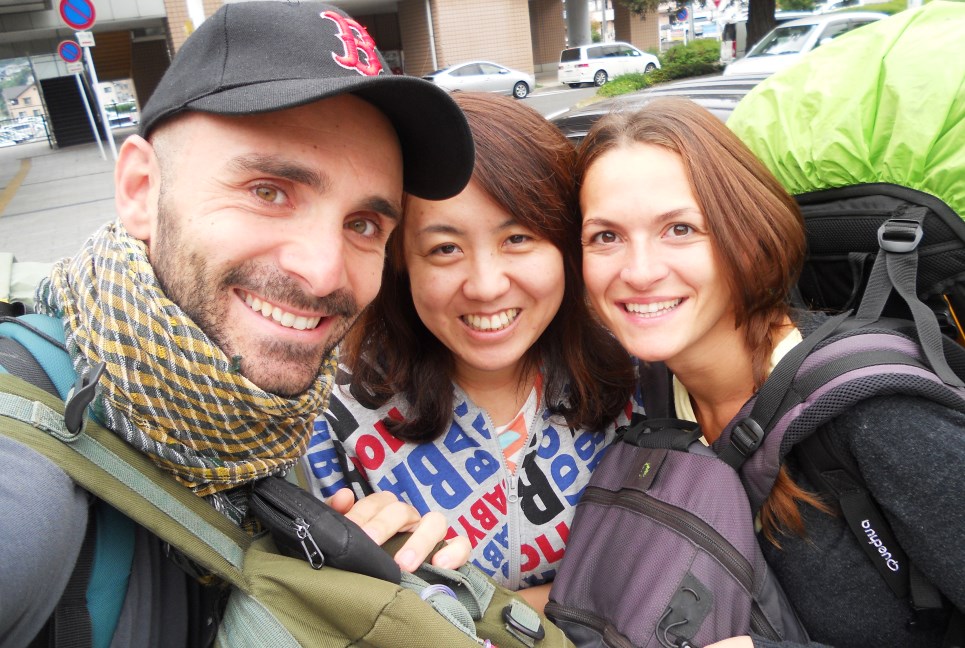
We enter the immense, chaotic and shimmering Osaka.
We get to our Japanese-style hotel, but very dilapidated: room 2 by 1.5 meters and futon on the ground and shower on another floor (you need to take the elevator to wash yourself!)
The "day pass" of the subway allows us to move without stress everywhere and we take the opportunity to wander aimlessly!
The suggestive Osaka castle; on the top floor you have the opportunity to take a 360 ° look at the entire city! Inside we observe with amazement the few finds of the castle, especially the old samurai swords that take us back in time, to dates so far from those of today's hyper-technological Japan.
Umeda Sky Building. A modern "Arc de Triomphe" but with a far too futuristic appearance.
We meet the first elderly women wrapped in very precious kimonos and who, once again, set our imagination in motion ...
We get to the highest "Ferris wheel" in the world but it is already late and we are cooked!
We end up eating rice, meat and vegetables in a kite-sushi style restaurant in the JR Osaka area.
Are you going back to the hotel? Useless! The nightlife of Namba and Dotamburi has just begun ... but not before having tasted a plate of Takoyaki, octopus meatballs in batter, typical dish of the area!
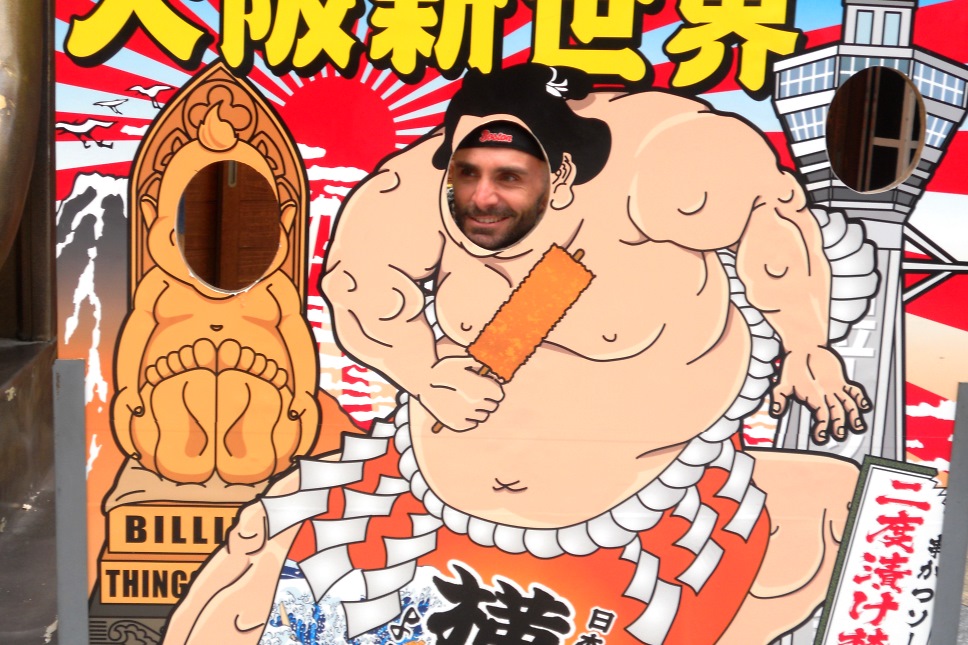
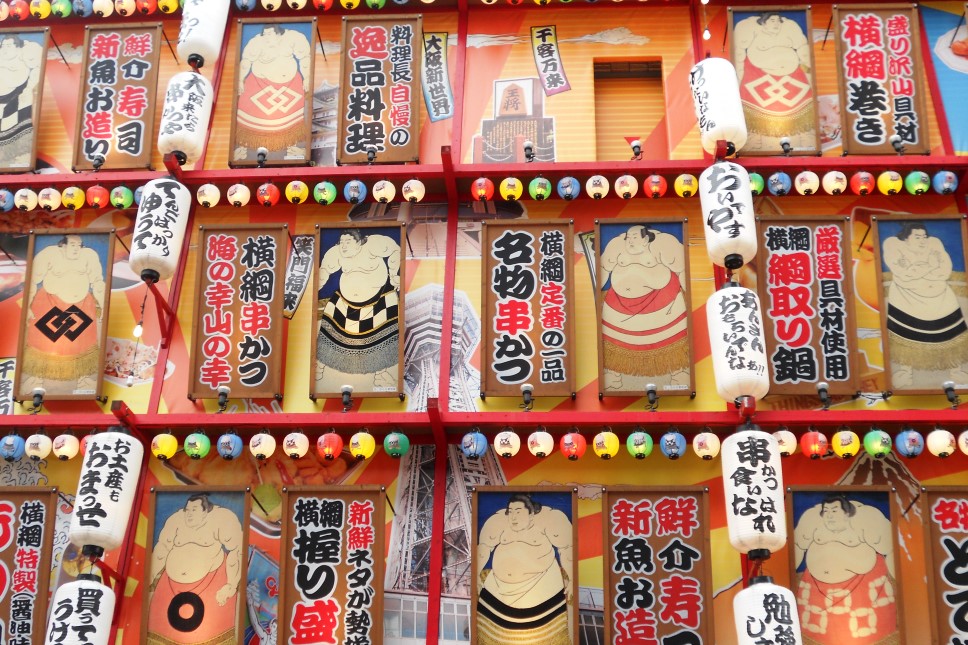
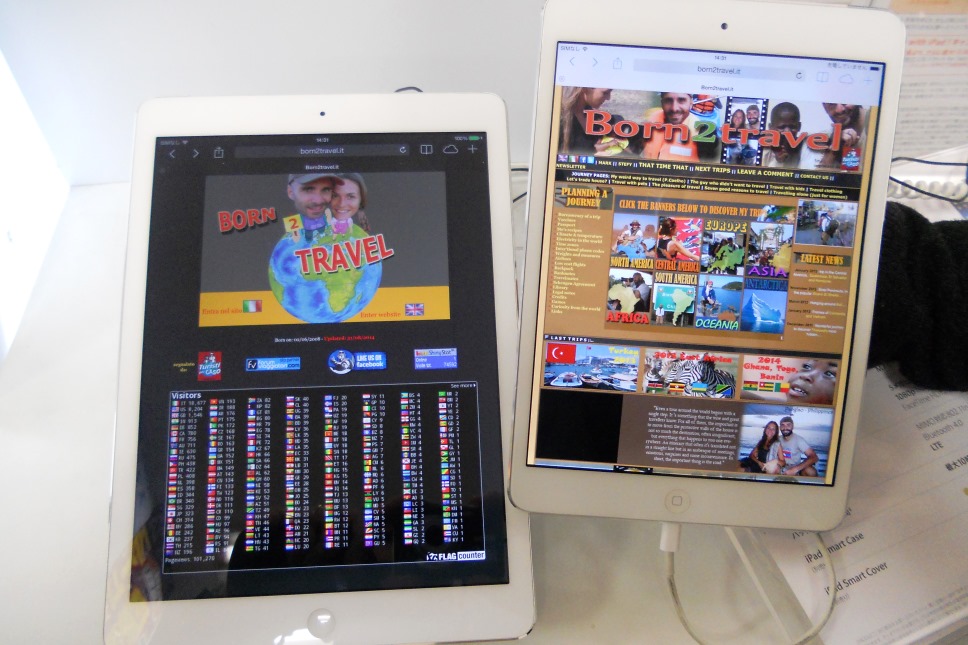
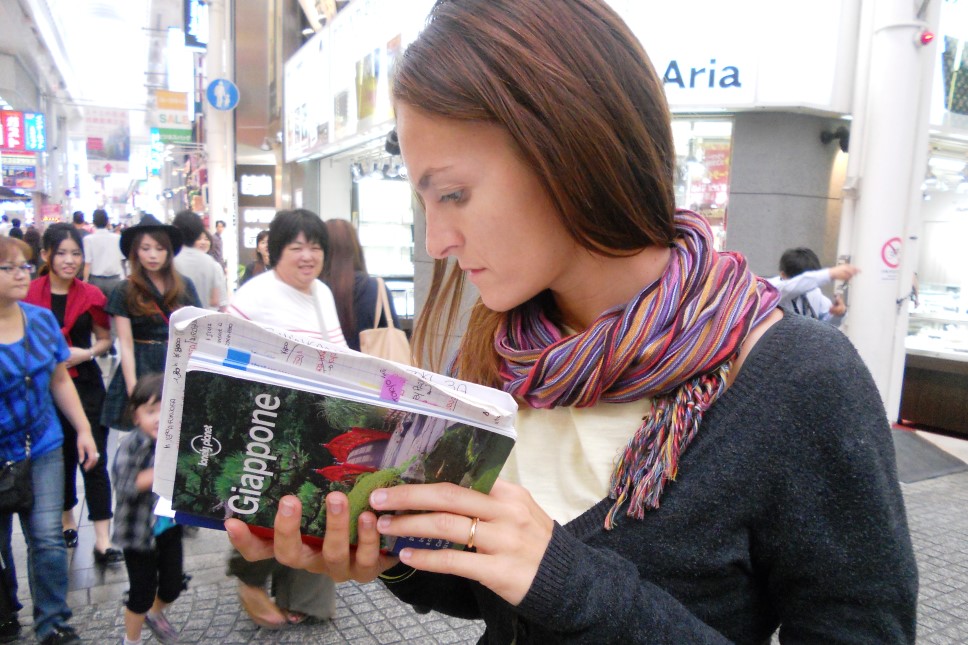
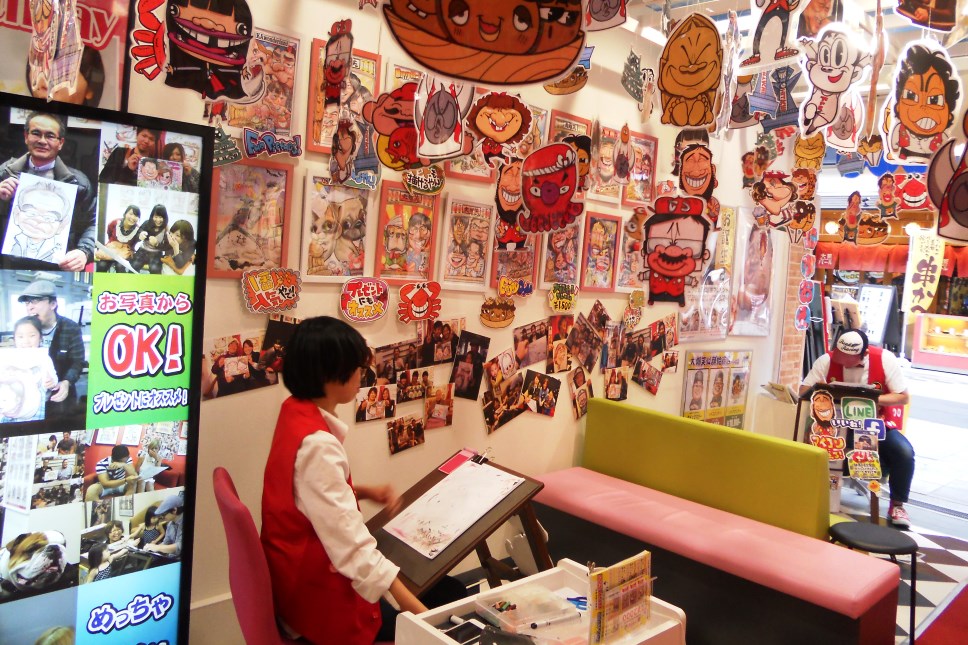
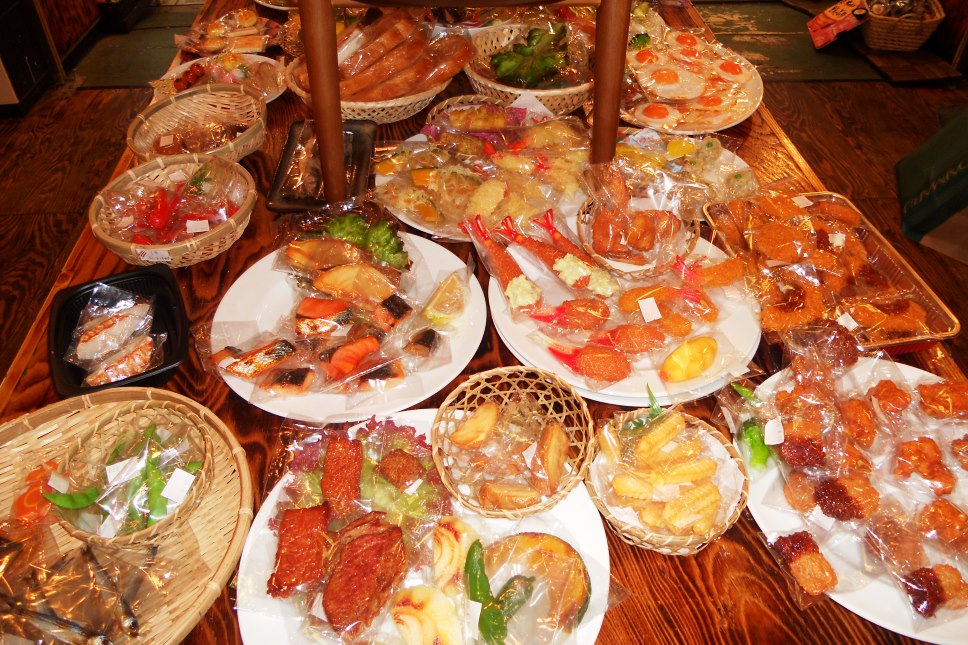
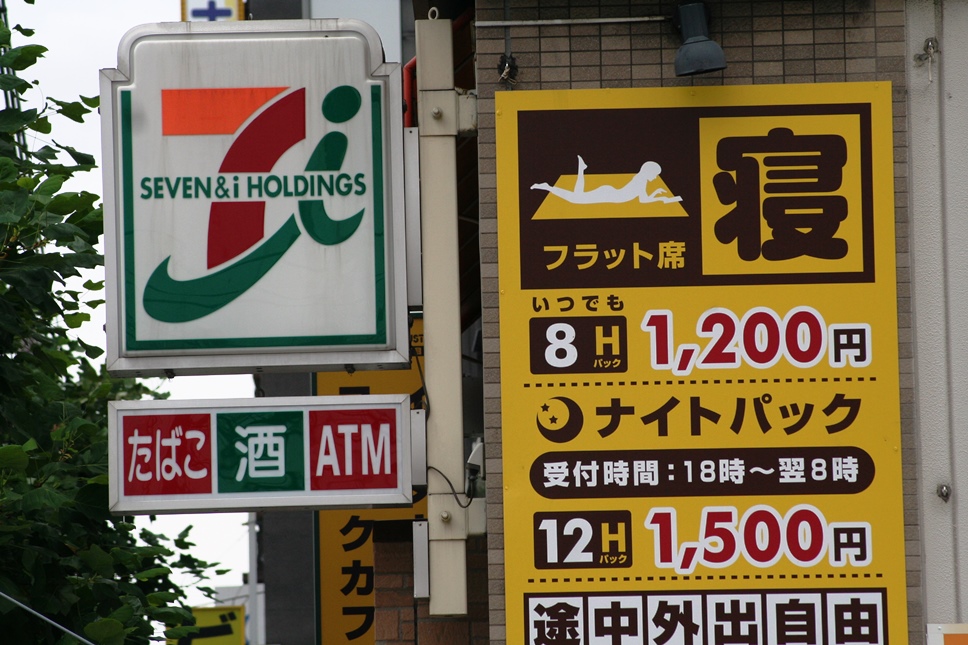
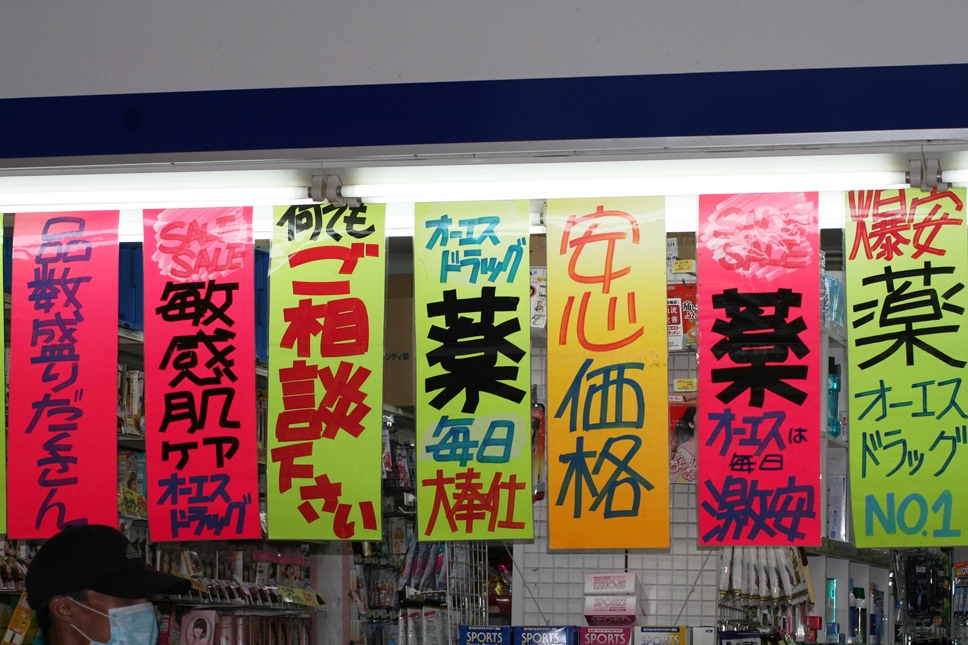
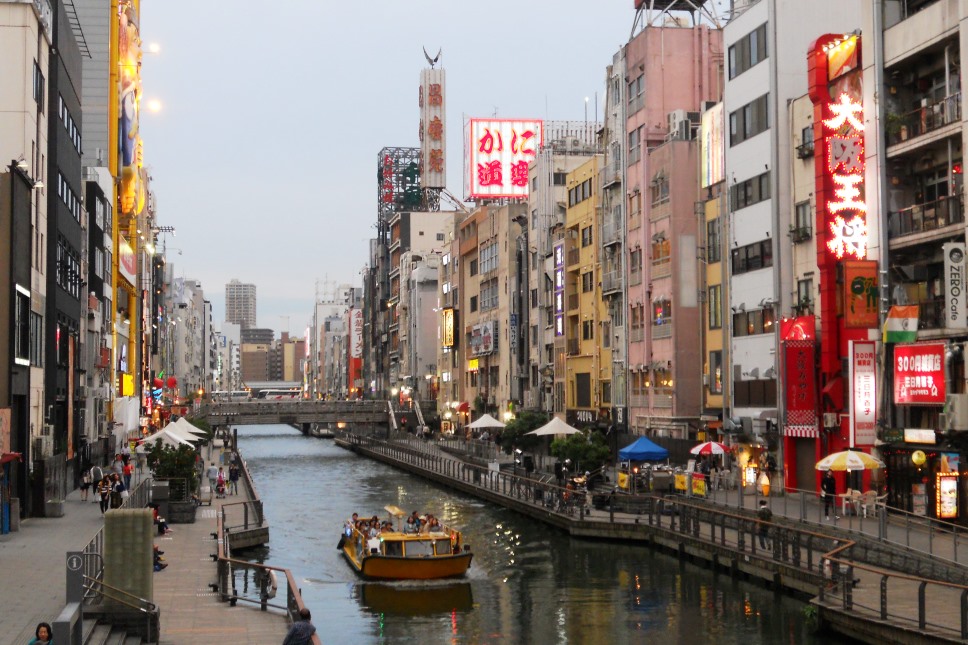
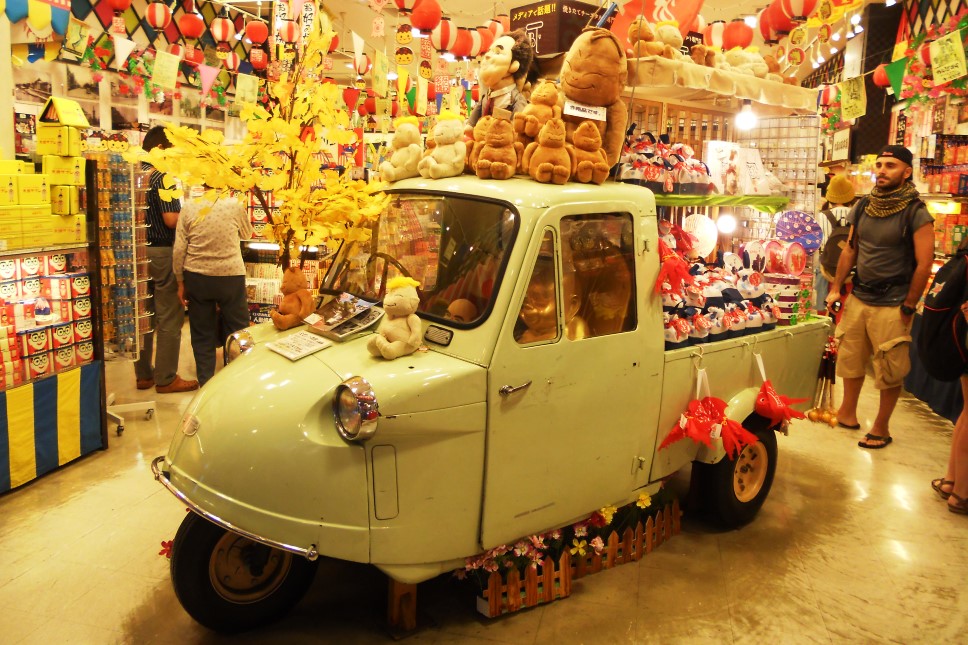
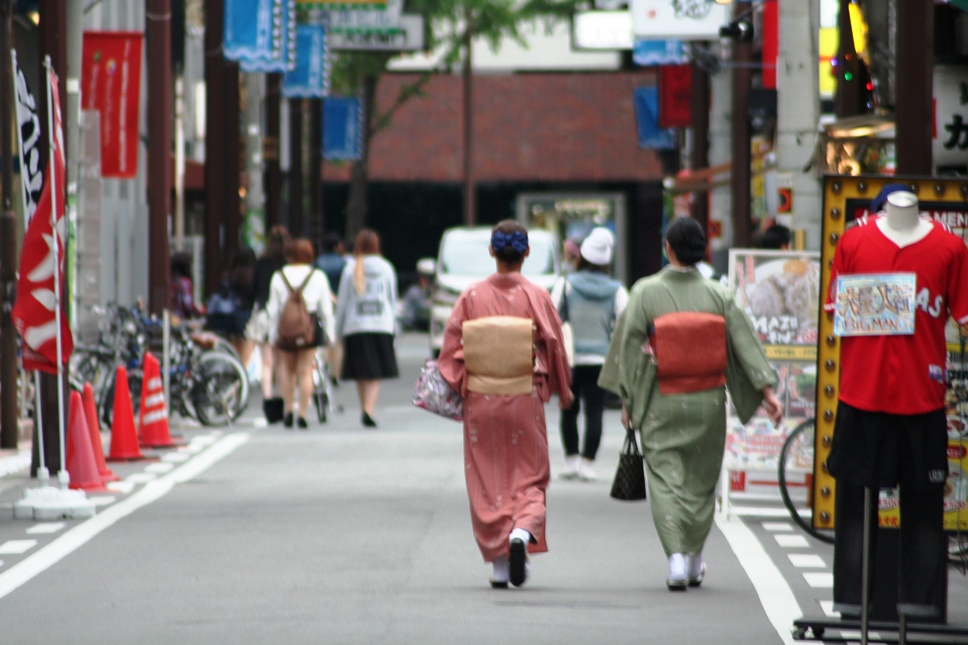
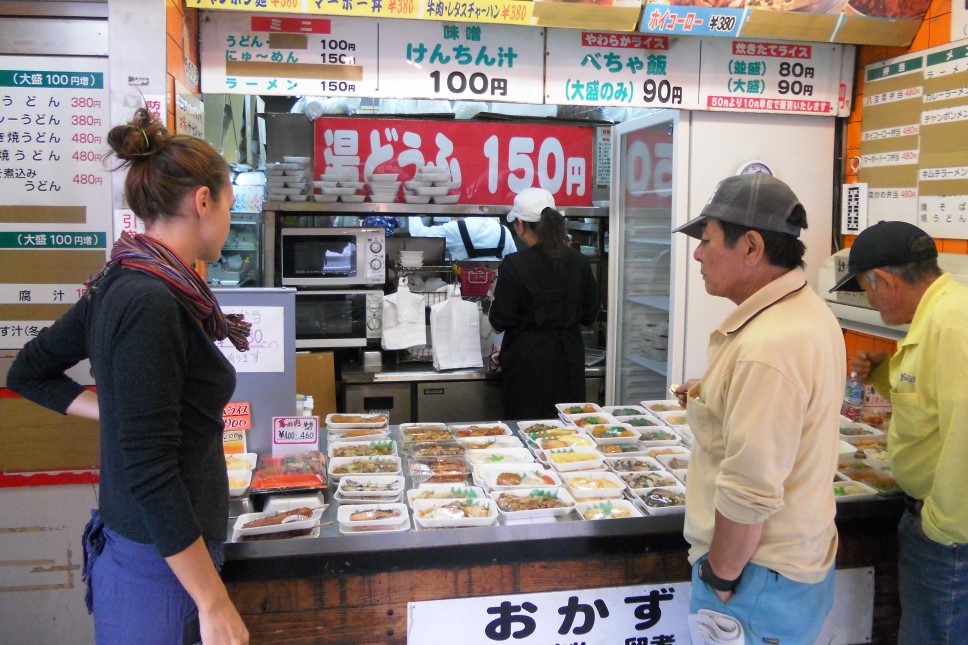
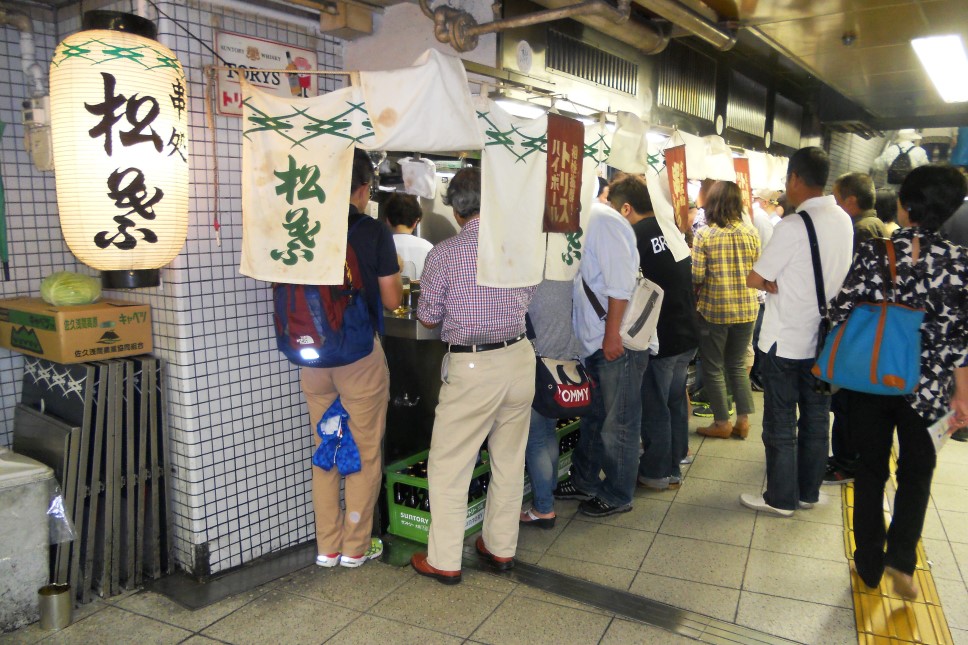
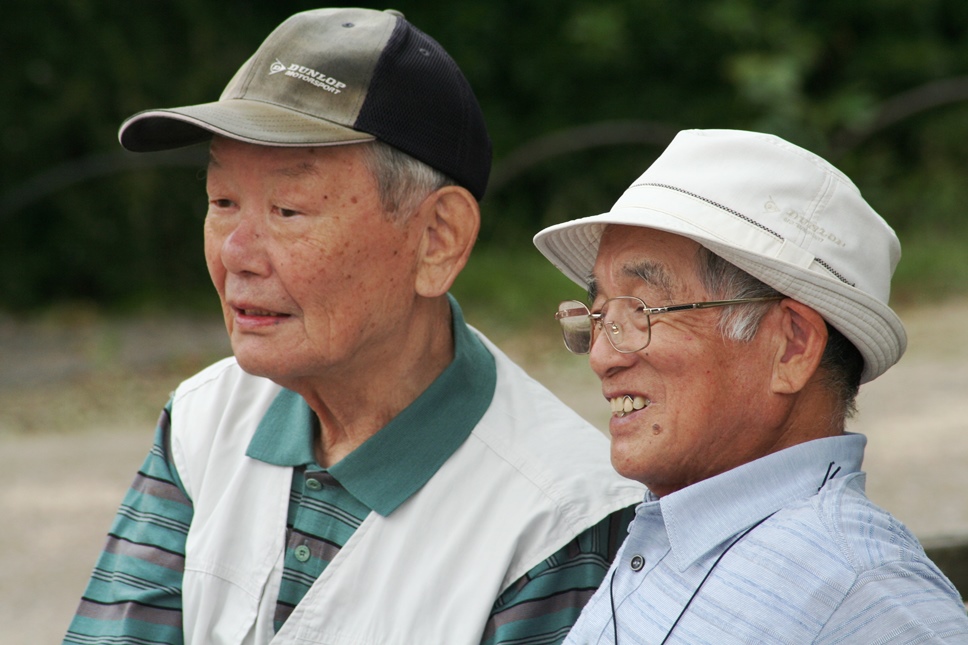
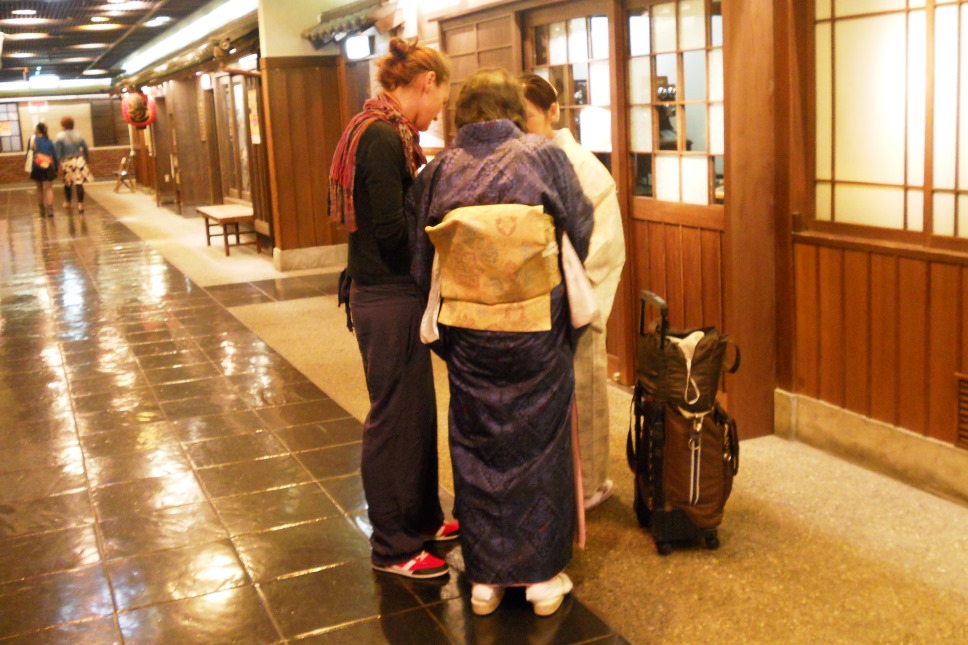
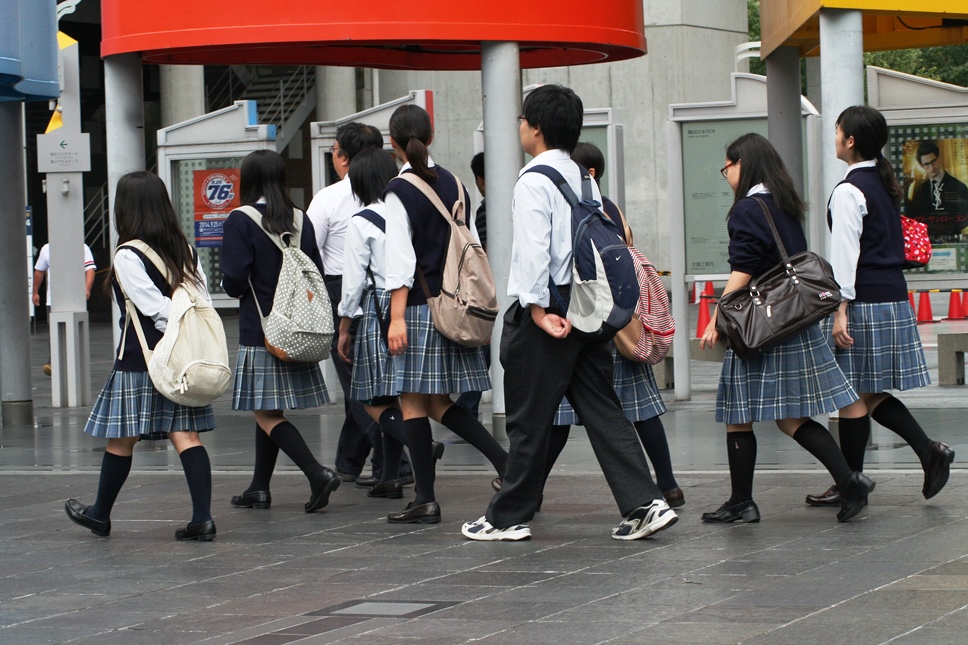
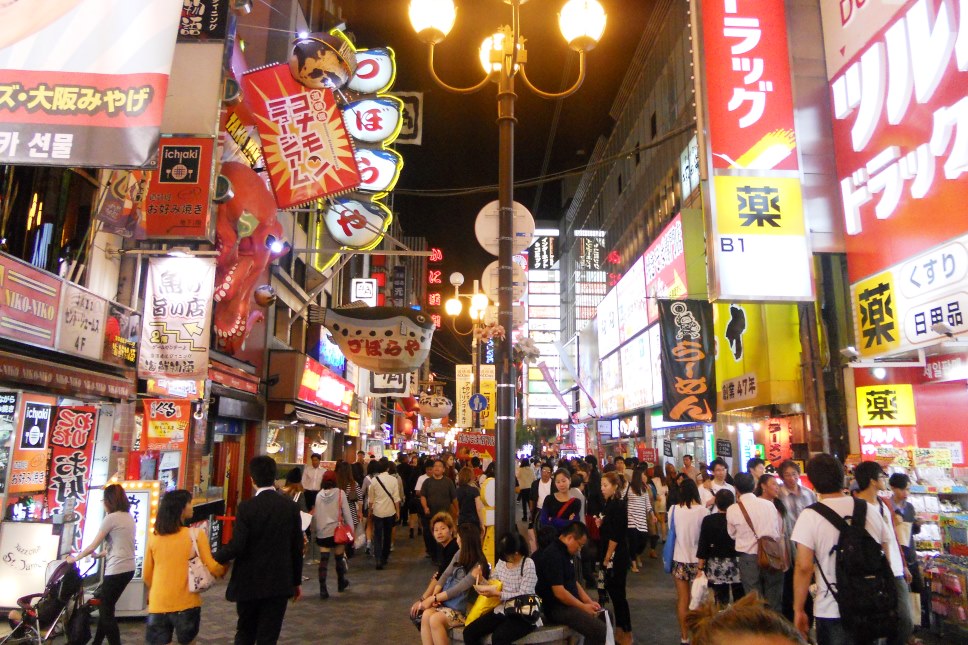
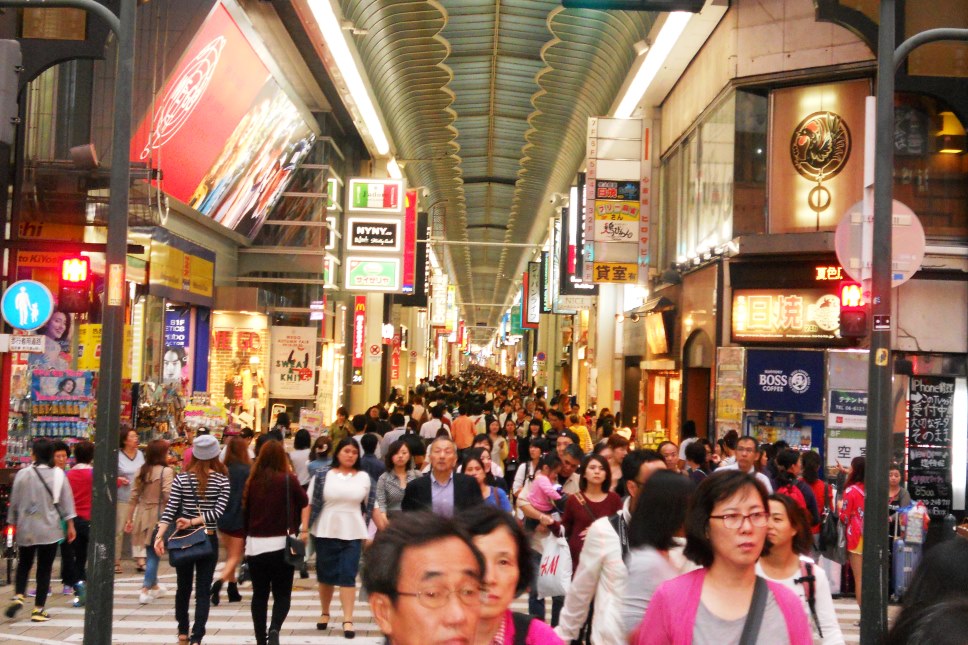
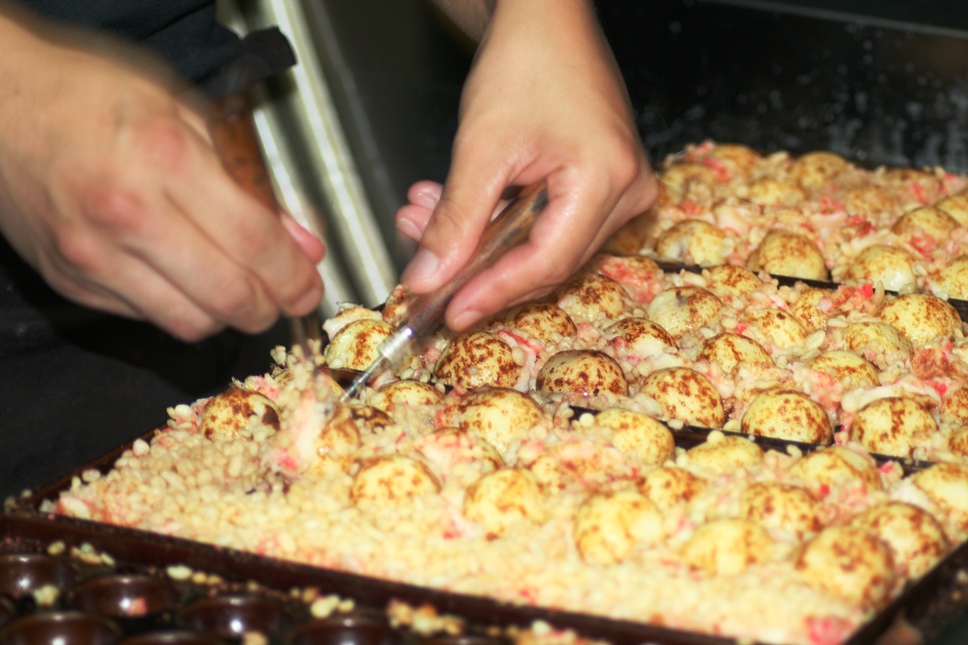
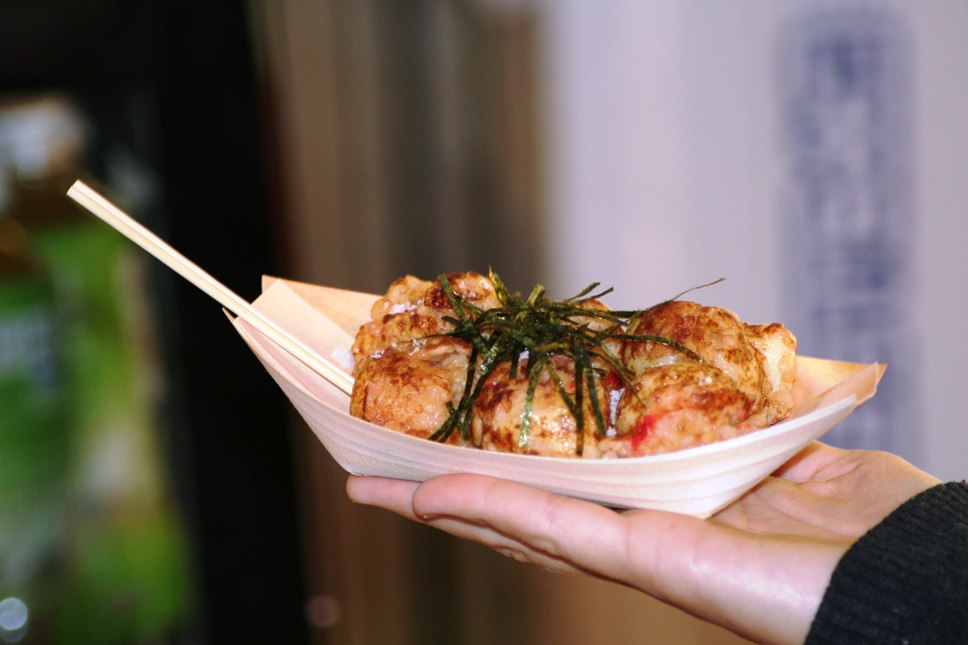
A couple of hours by train and we are in Nara.
Our room will be ready only in the afternoon; then we decide to go directly to the area of "Nara Koen", where there are the most important sites of this town with ancient charm!
We have a fantastic day! We visit the "Kufukuku-Ji" a Buddhist temple with inlaid and imposing pagodas.
Everything around us seemed ancient and it was enough to close your eyes for a moment to see a little of that distant life living next to us.
We passed through the Sangatsu and Nigatsu temples where we enjoyed a spectacular view of the city. We end our journey in Todai-Ji Temple where there is the famous "Big Buddha Daibutsu", one of the largest bronze statues in the world, built in 746 AD, 16 meters high and consisting of 130 kg of gold.
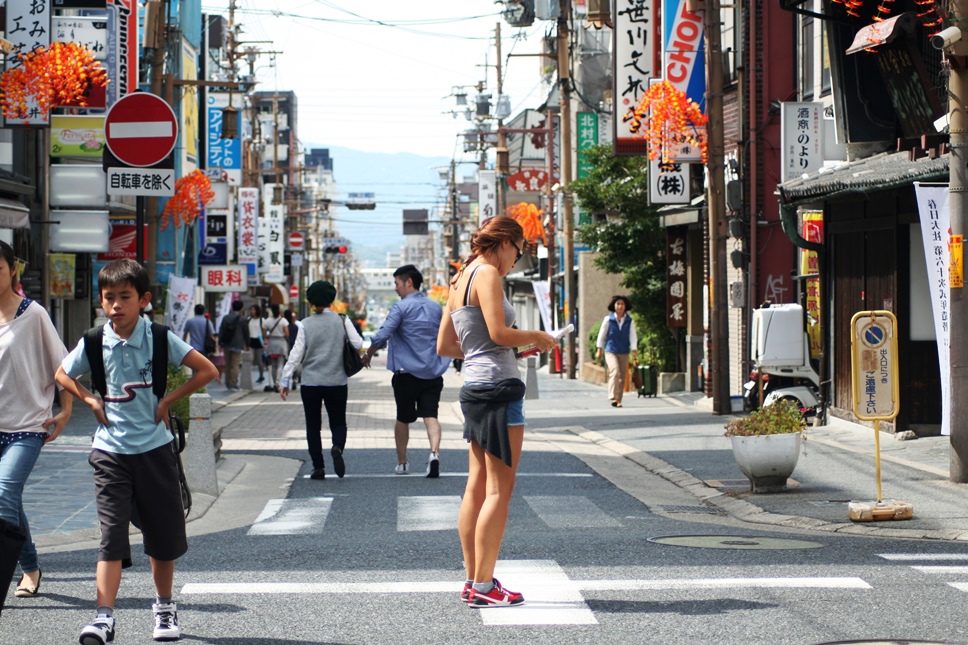
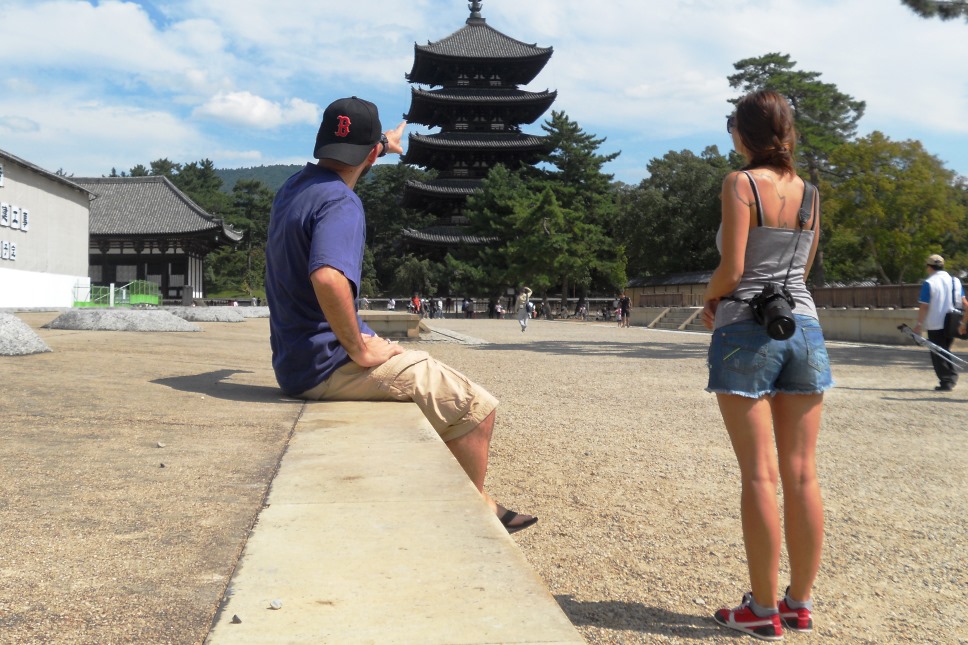
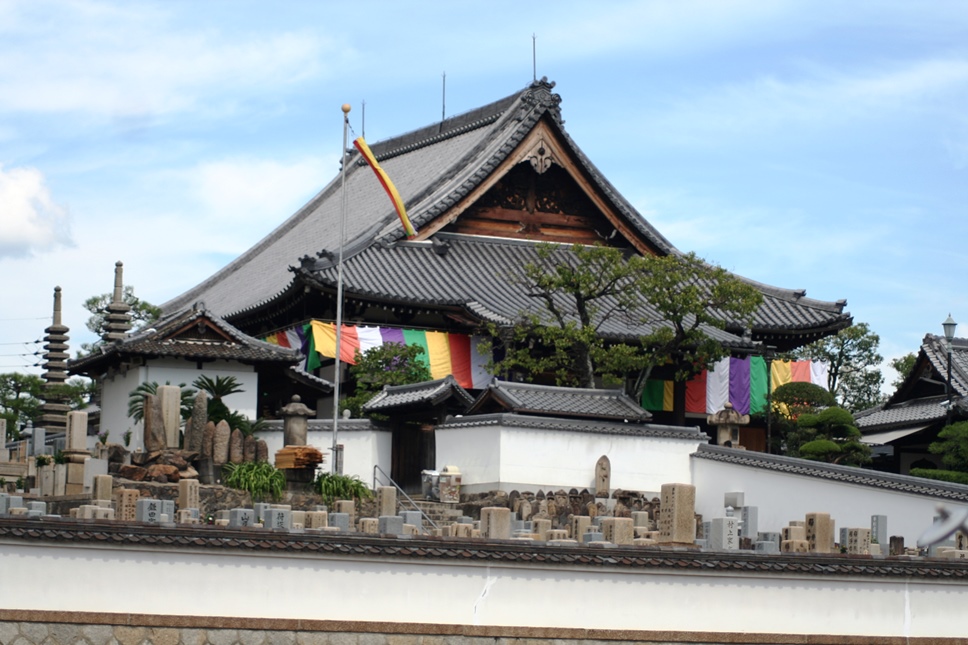
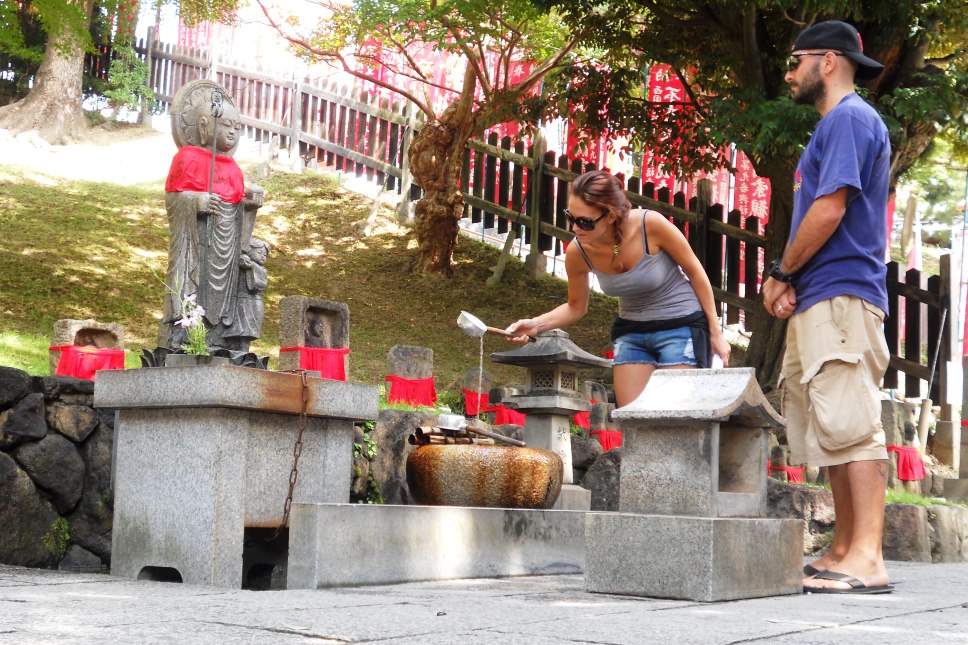
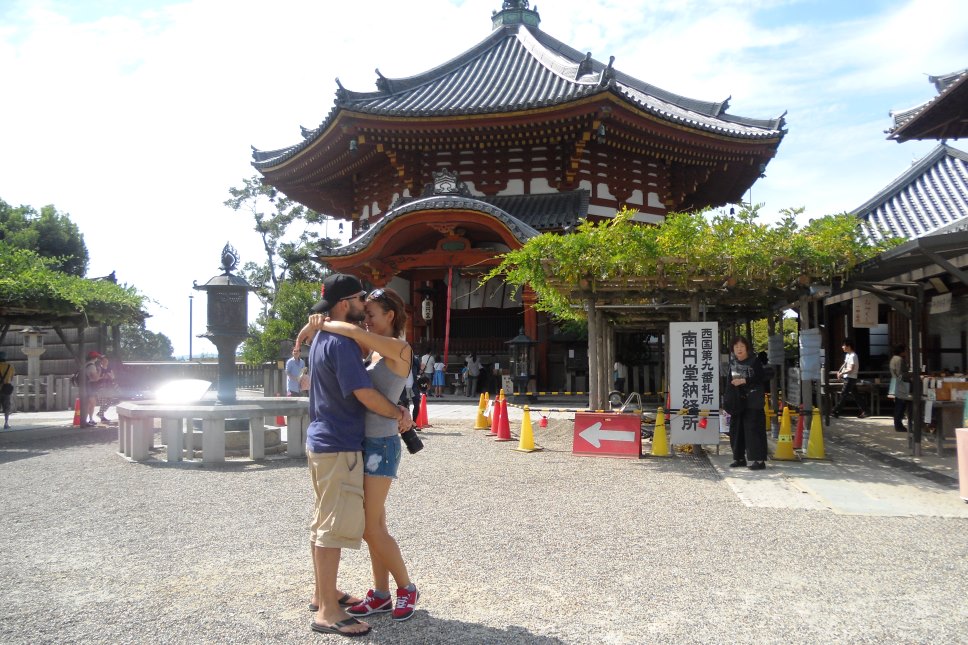
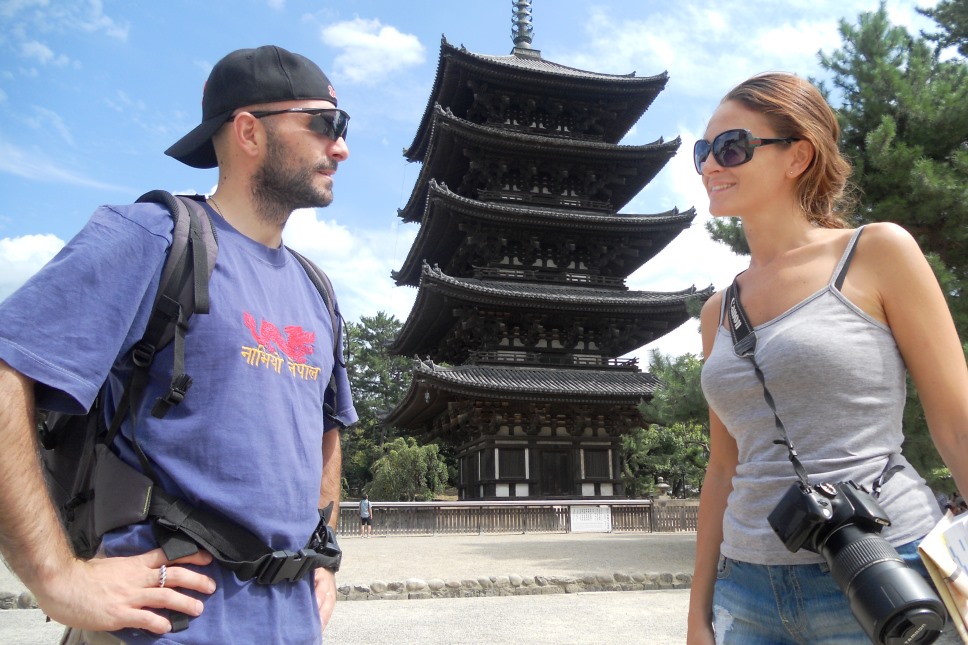
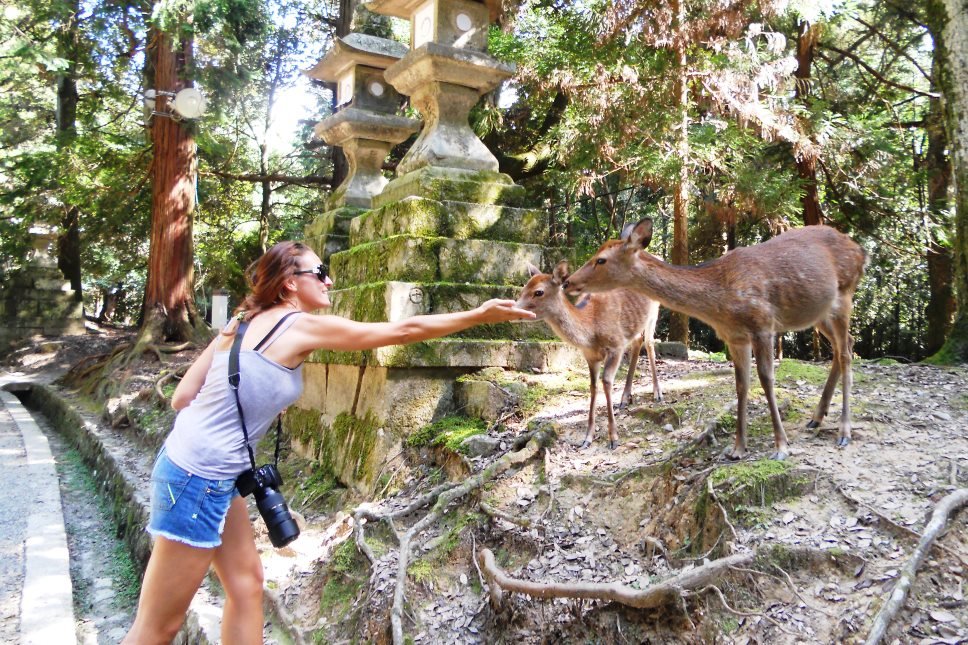
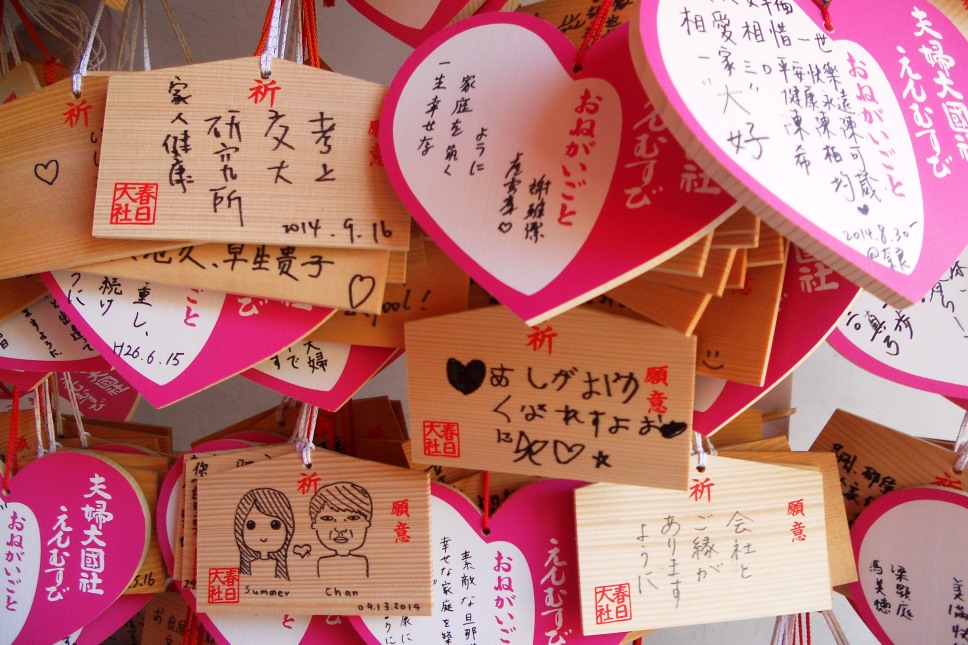
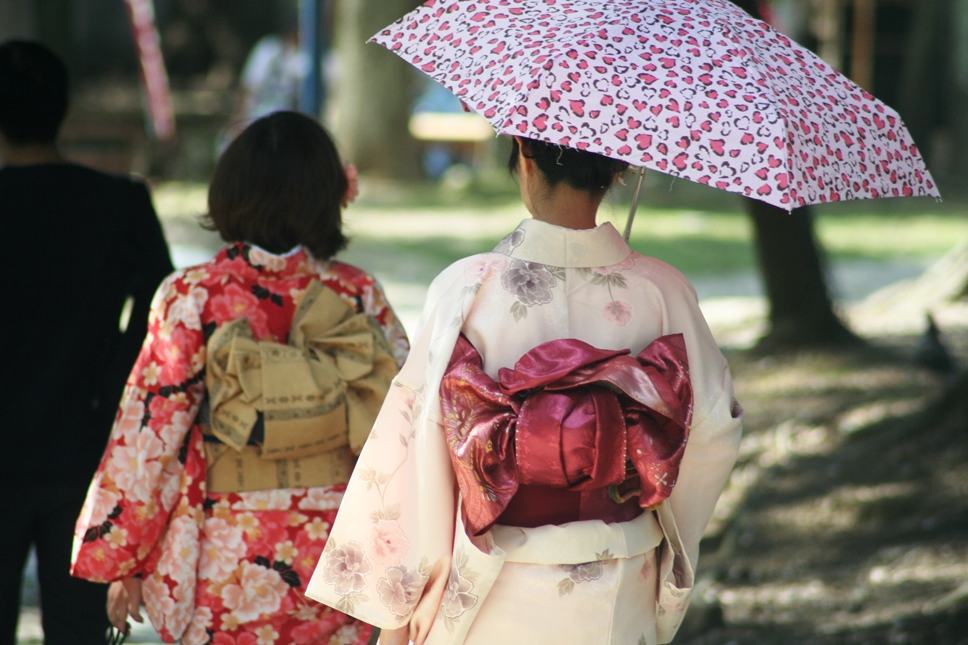
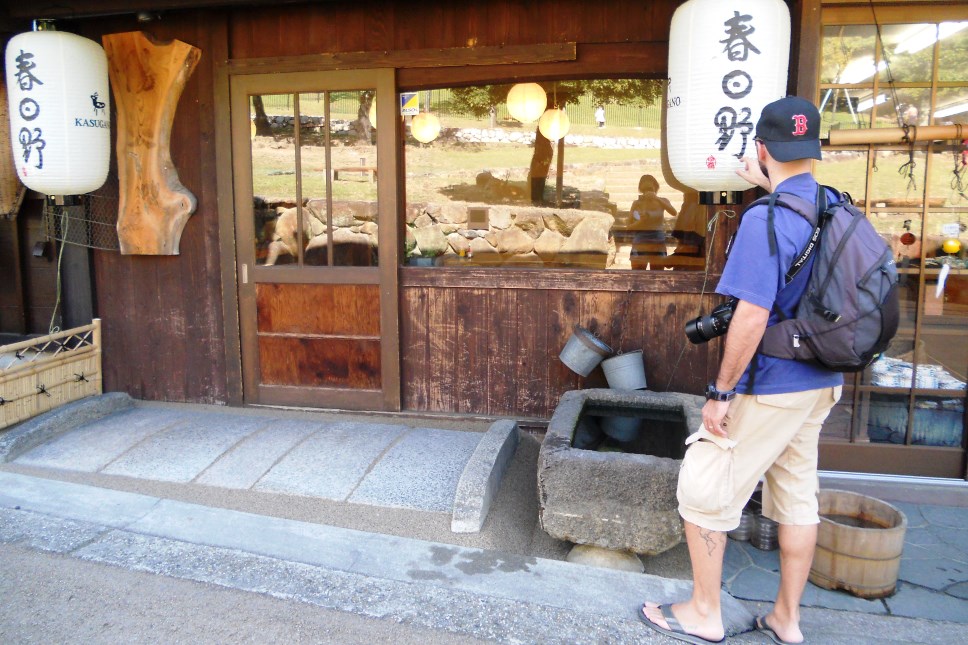
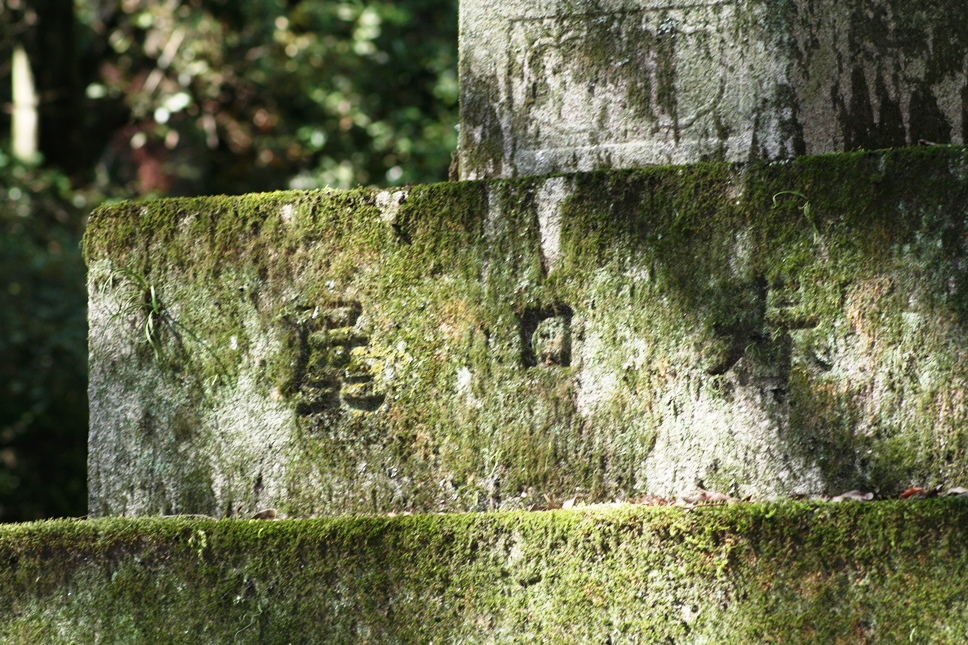
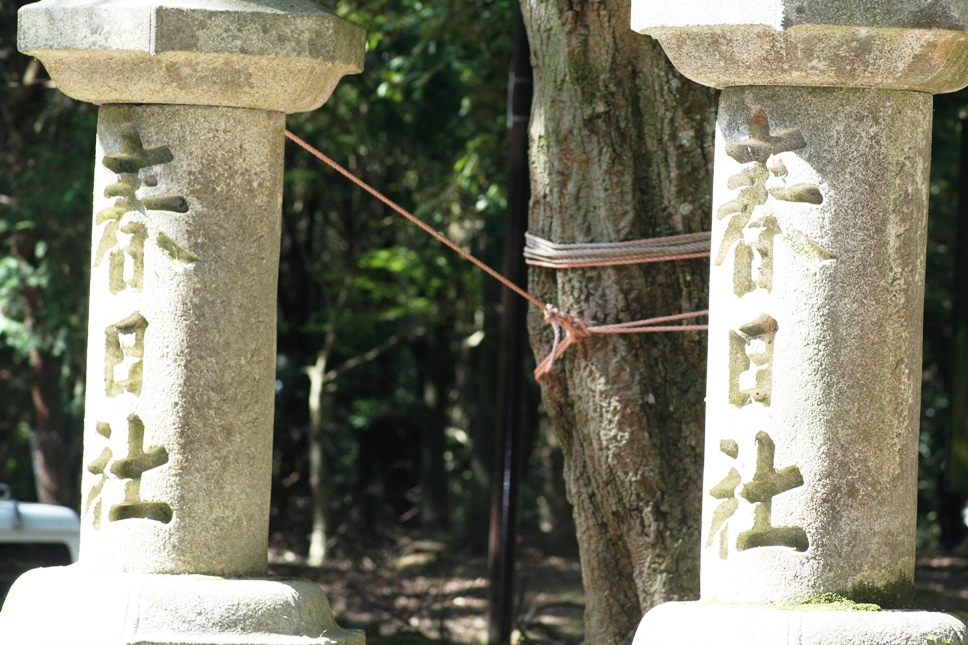
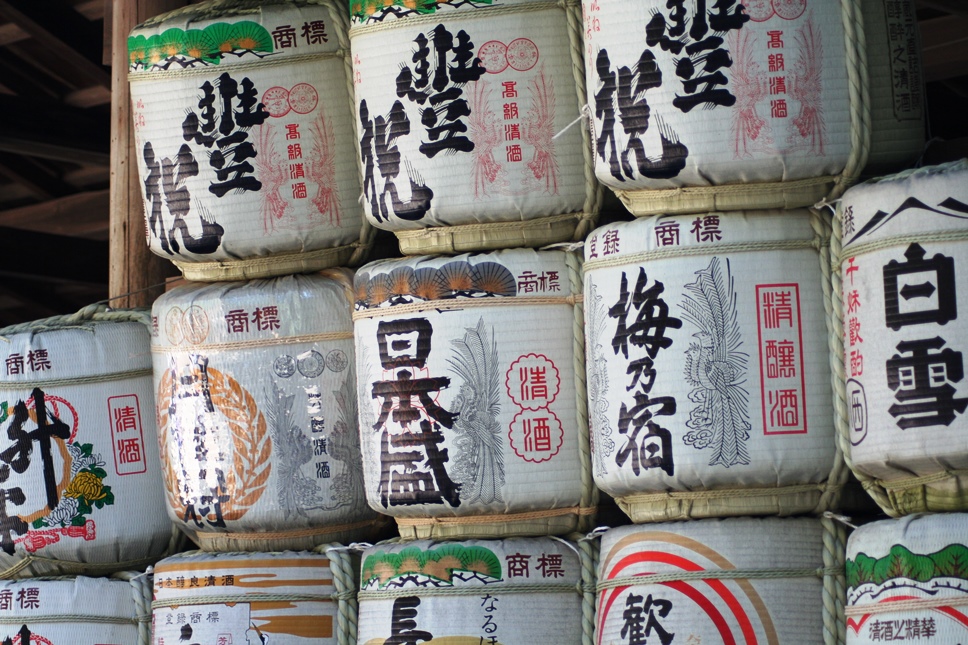
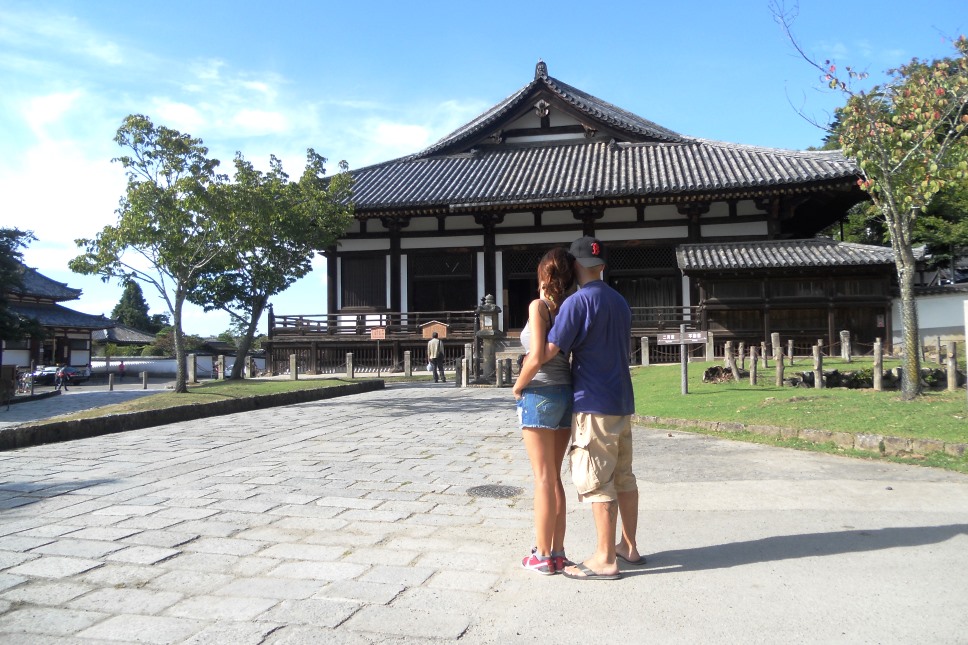
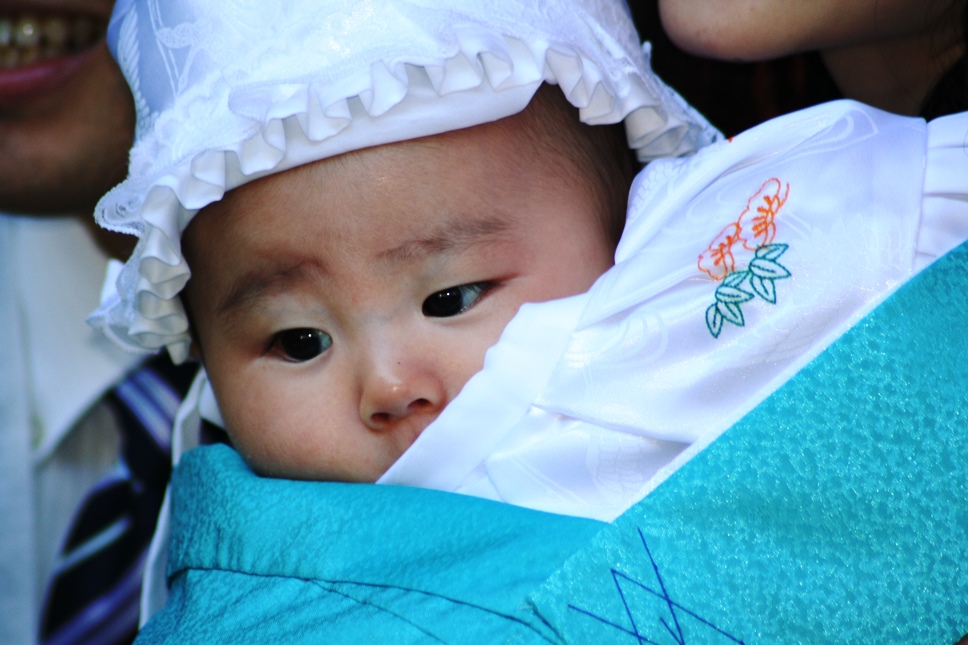
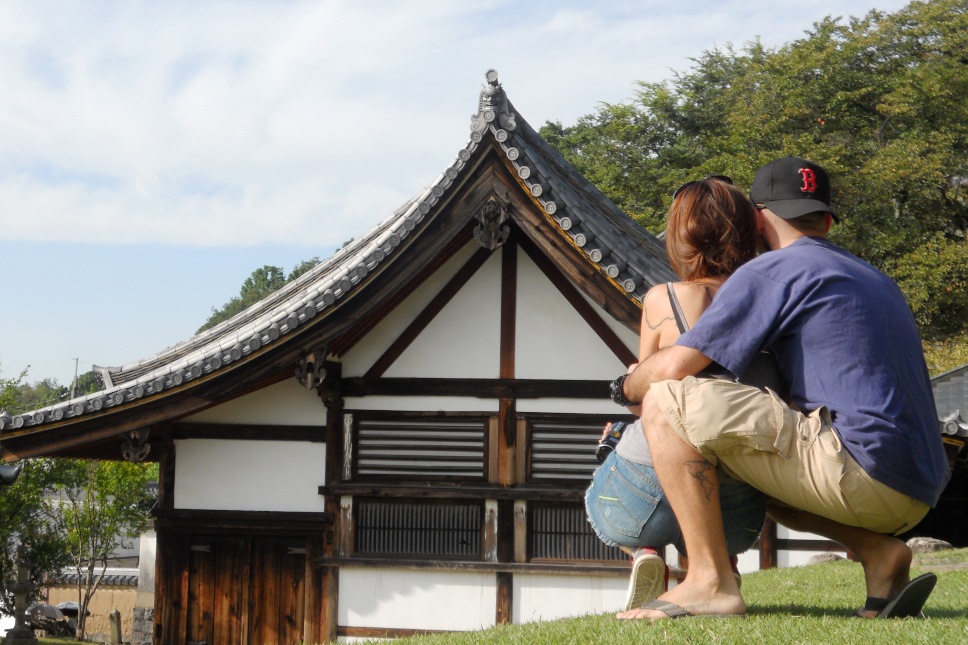
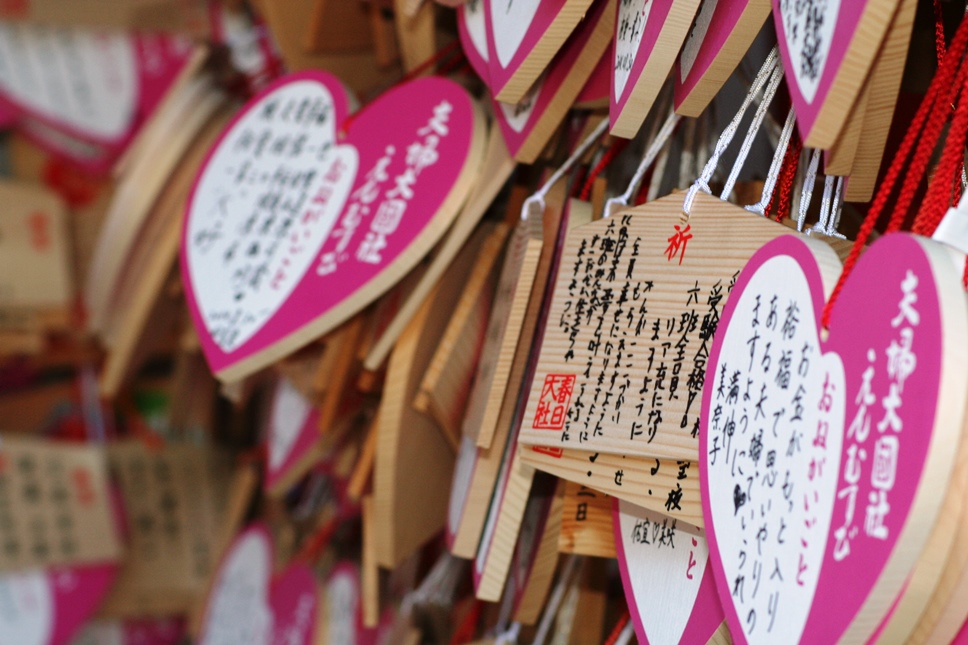
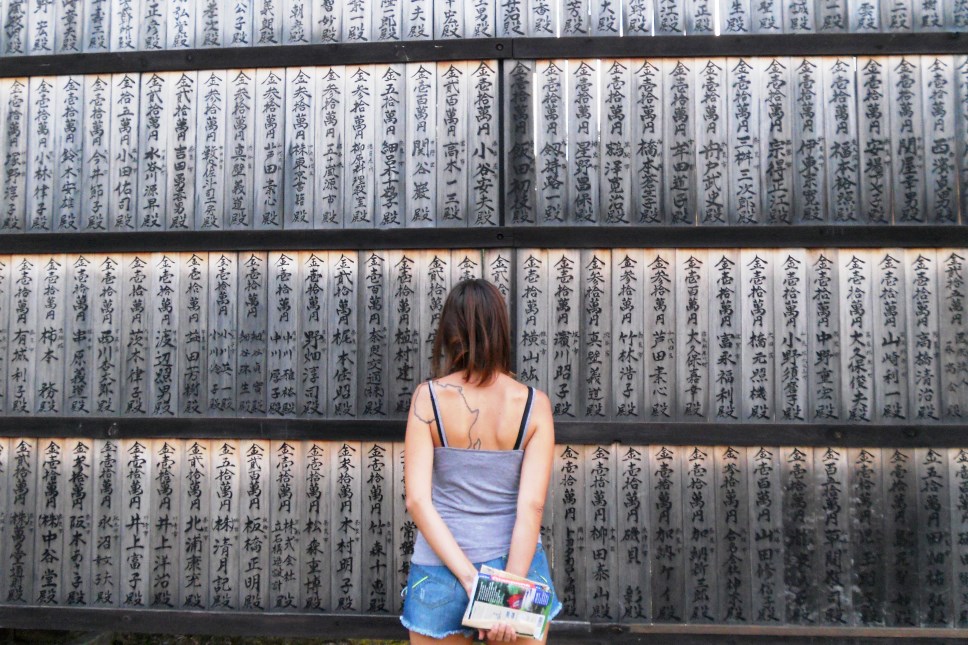
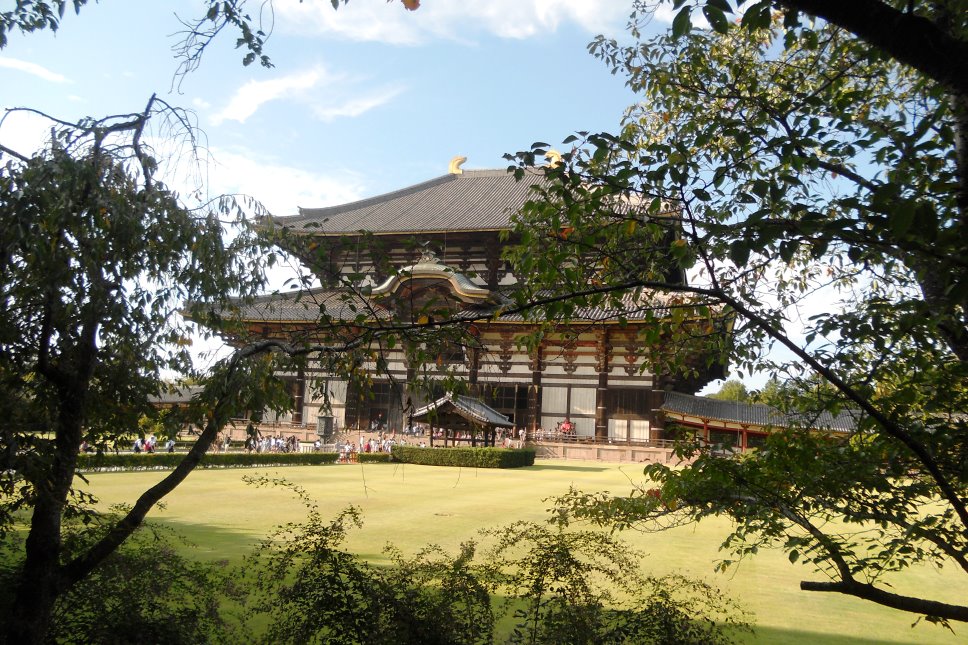
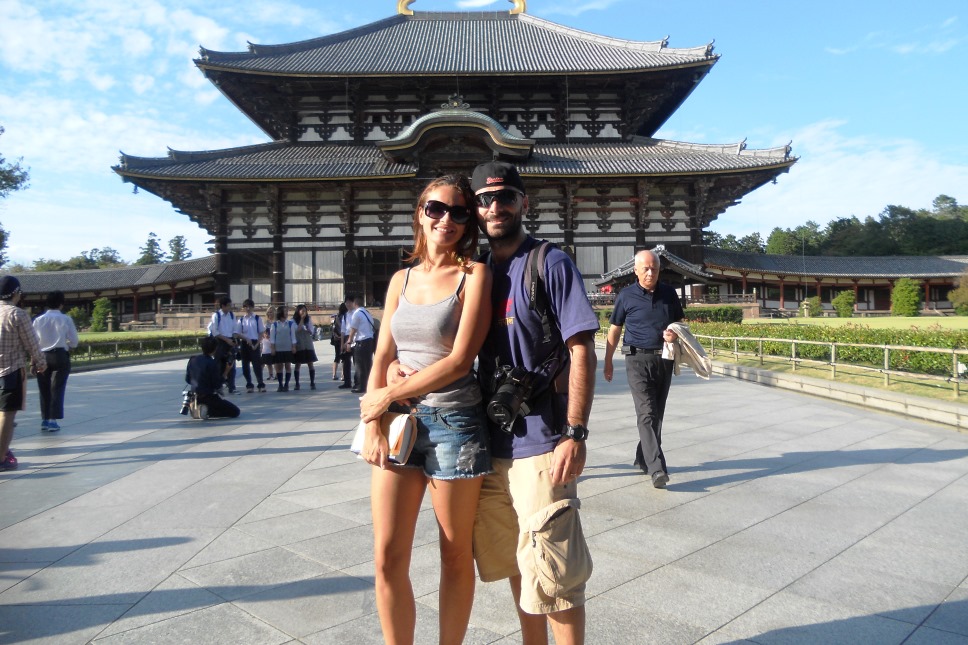
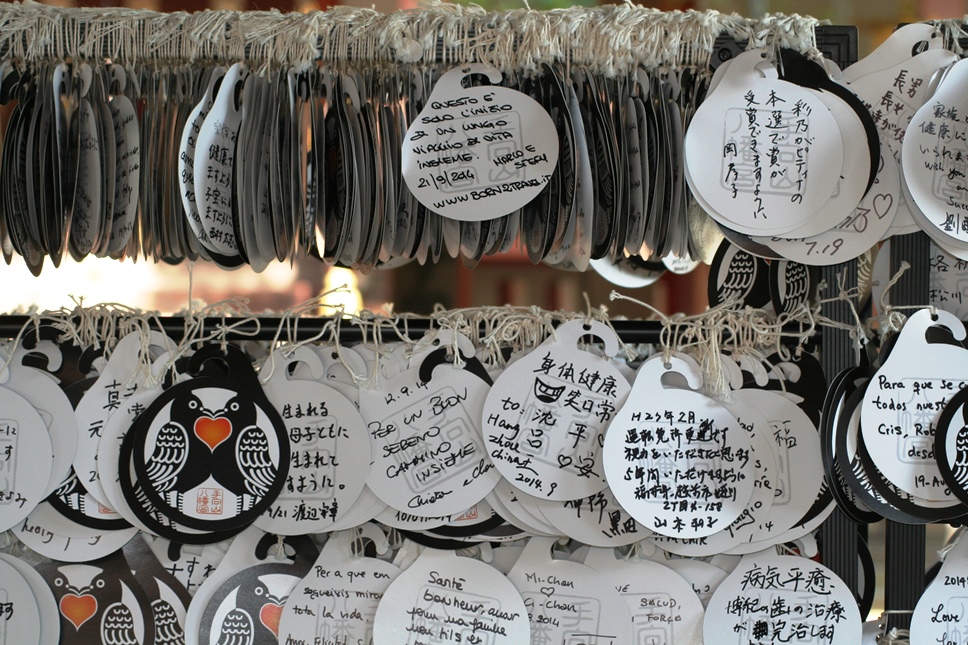
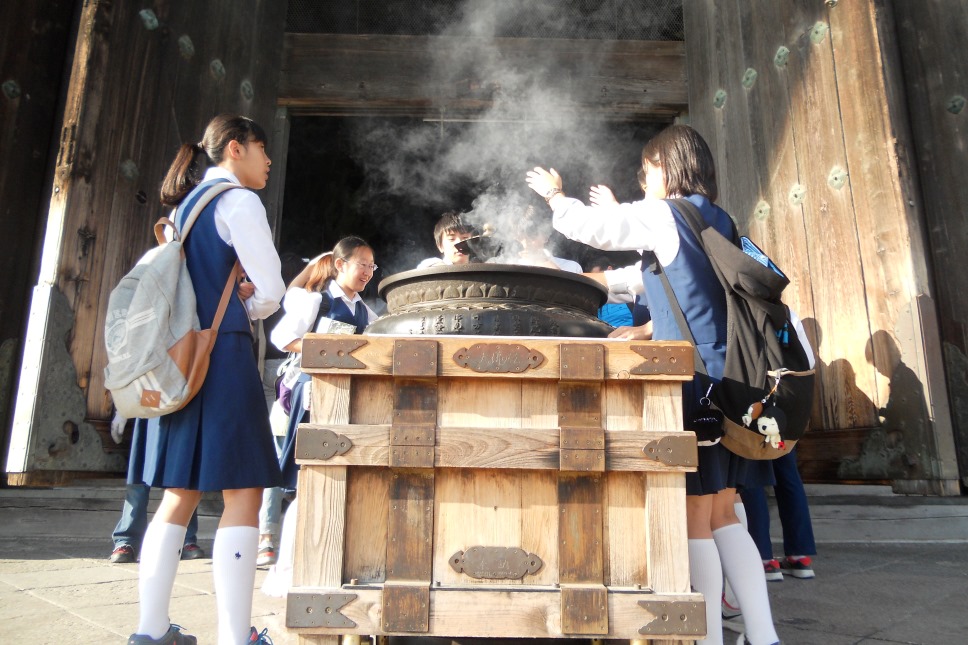
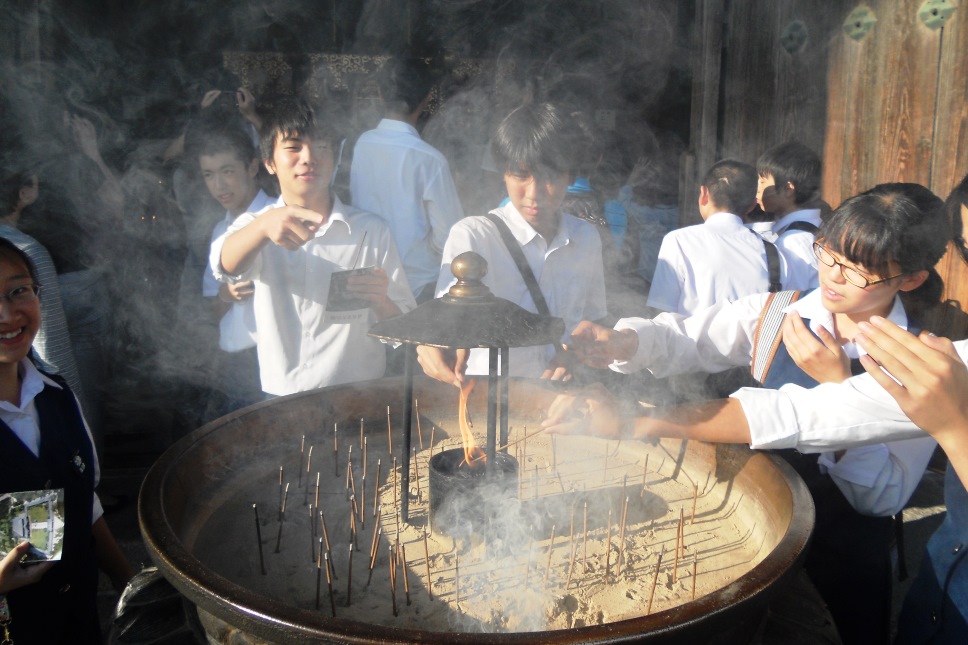
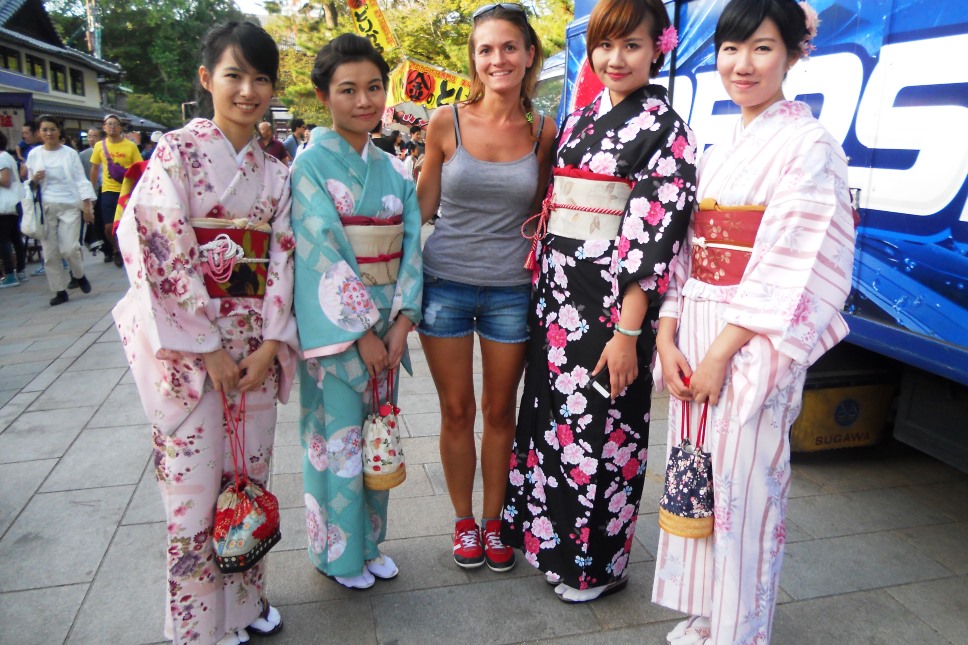
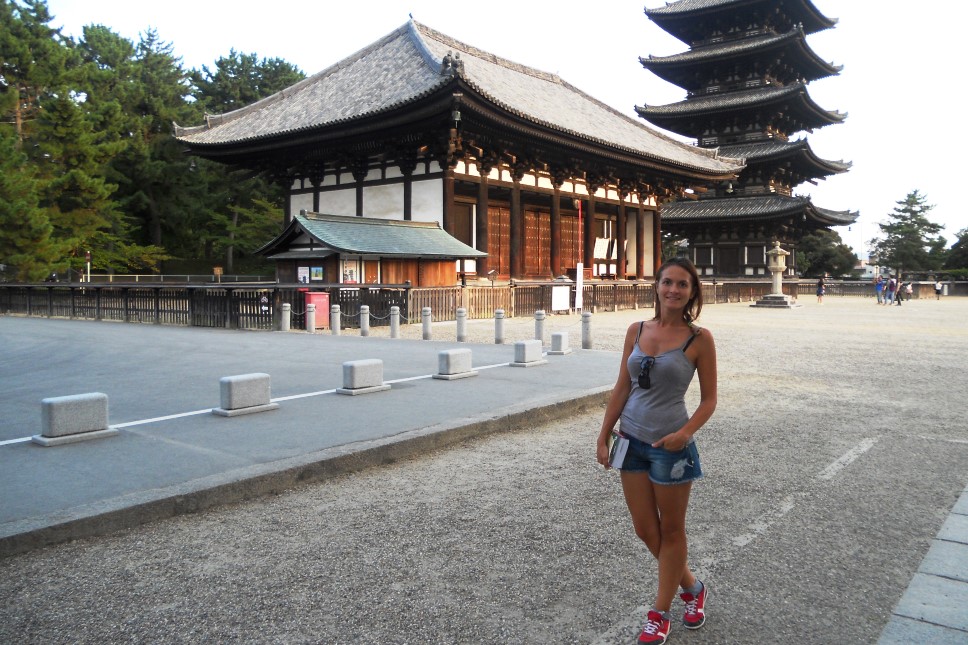
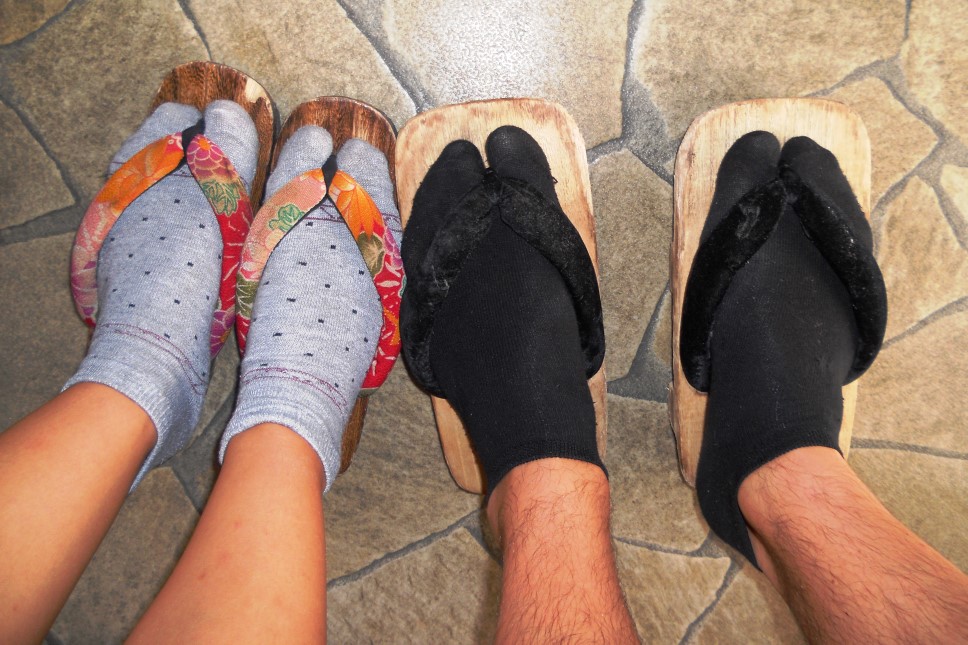
We decide to contact one of our Couchsurfing contacts in Kyoto: Eri, who fortunately welcomes us with pleasure in his small apartment in the opposite suburbs!
I don't have time to leave the backpacks Eri asks us if we want to spend the evening with her and other couchsurfers from all over the world at a temple in the center where a Buddhist ceremony was taking place!
Let's do it!|
Wake up at 07.30 and immediately breakfast of rice soup and dried fish prepared by Eri.
We go to the Fushimi Inari Taisha, a splendid sanctuary originally dedicated to the deities of rice and sake and subsequently to prosperity in trade.
We follow a path that winds for 4 km, crossing hundreds of red bulls and stone foxes with a key in their mouth (metaphorically used to open the rice warehouses).
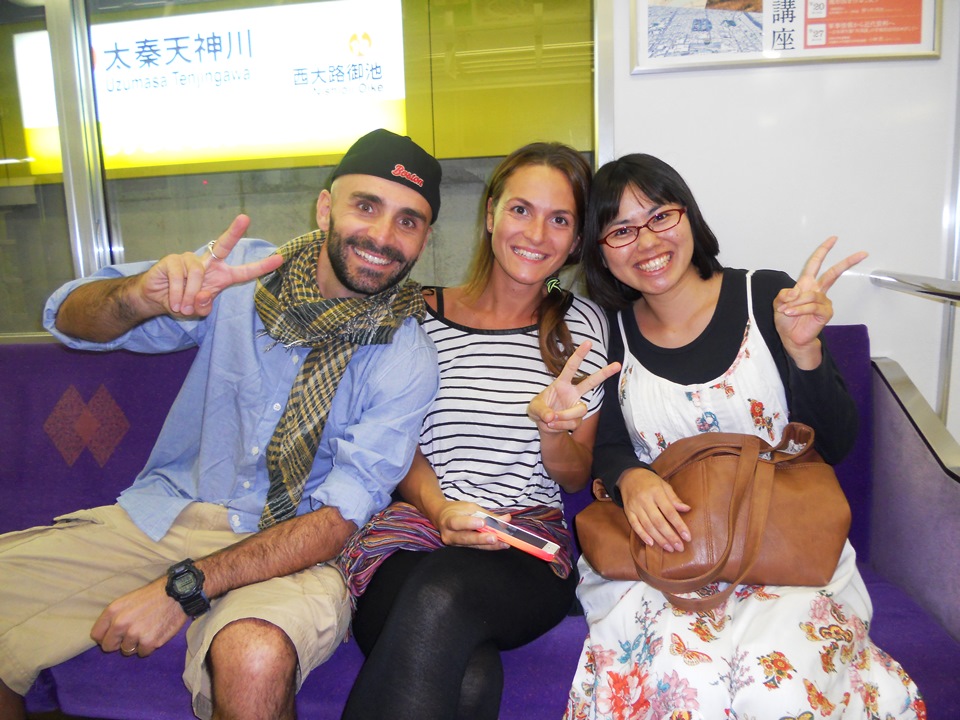
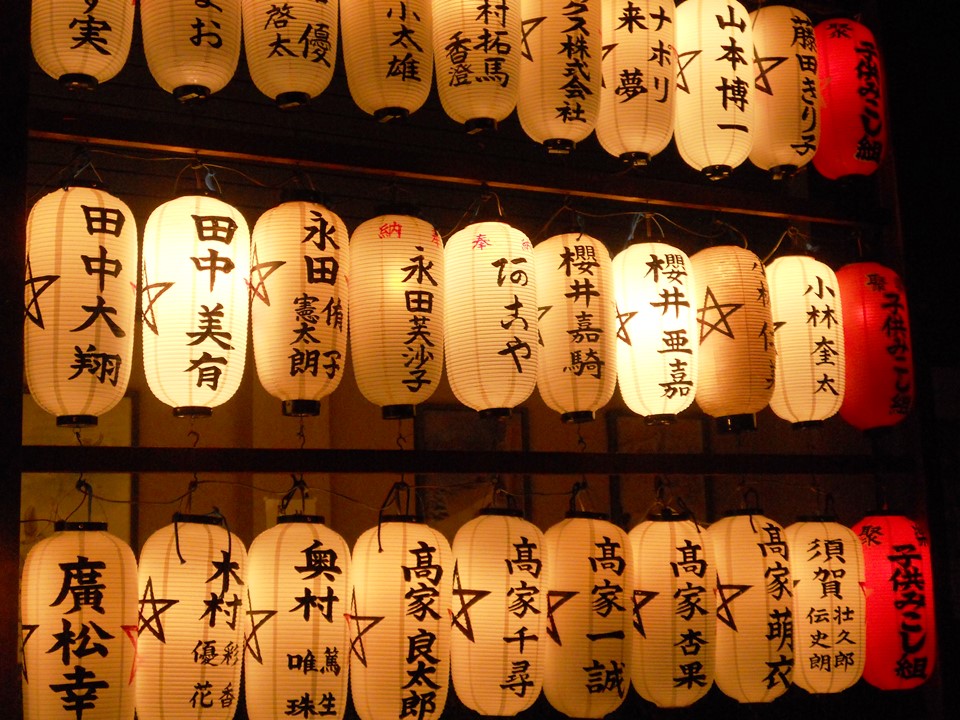
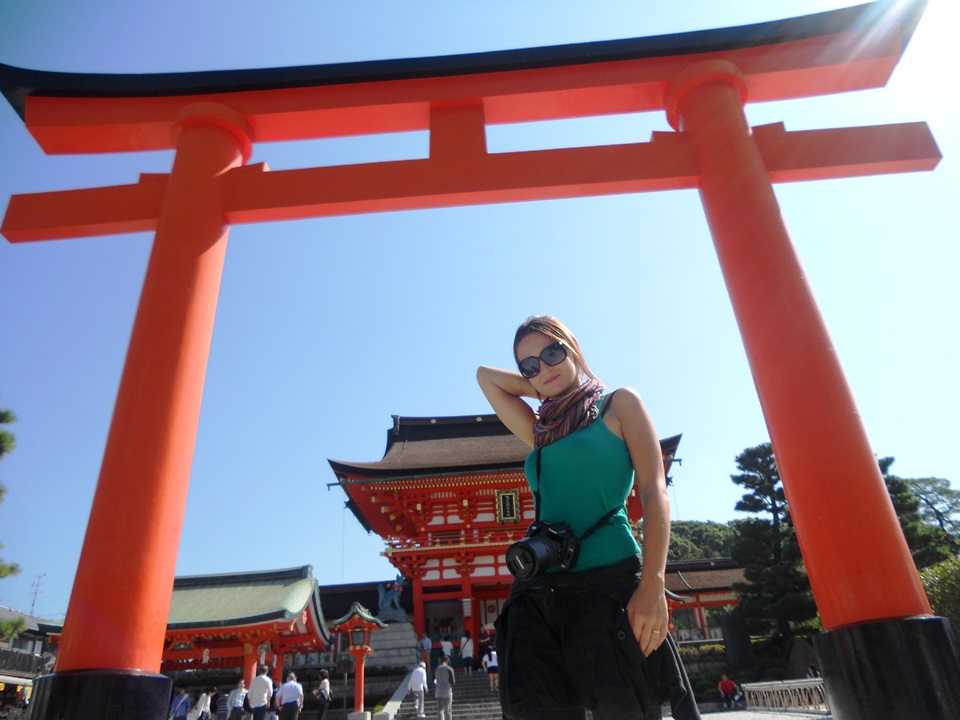
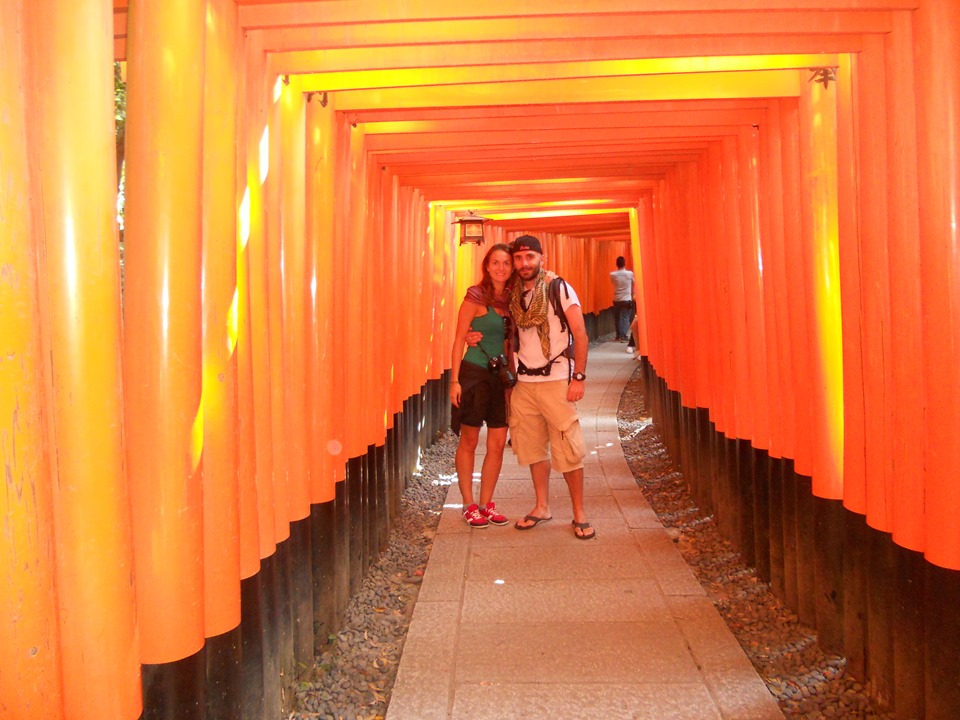
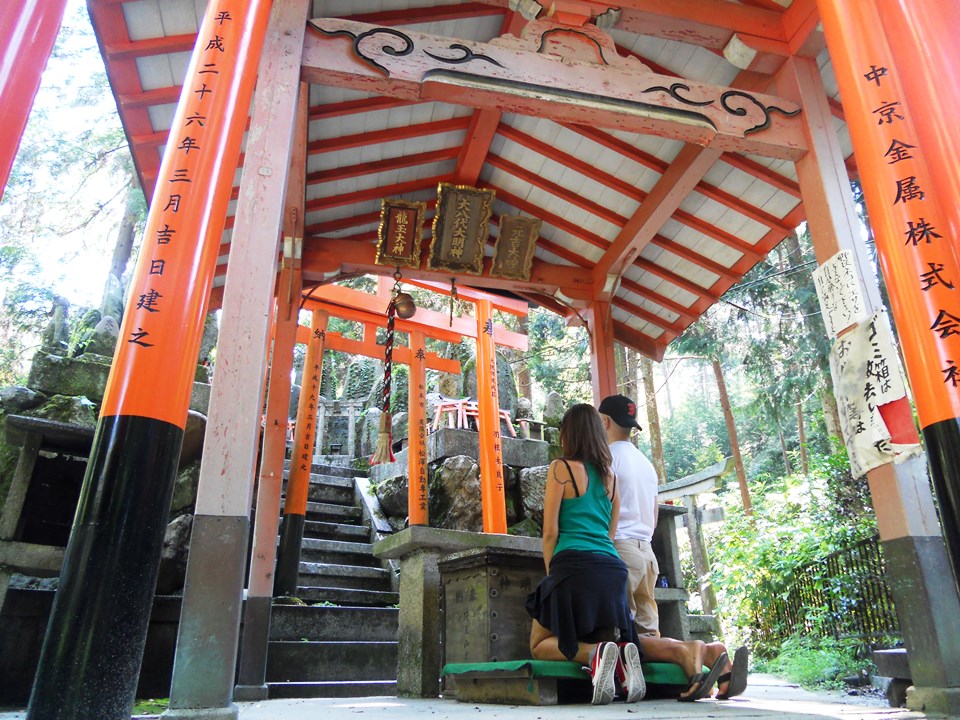
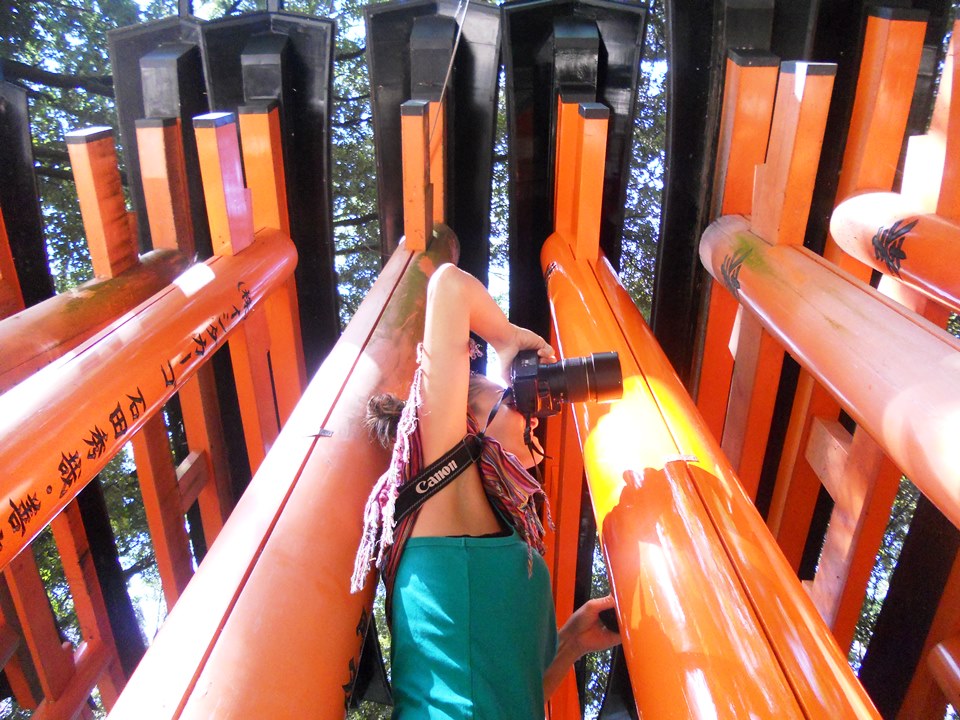
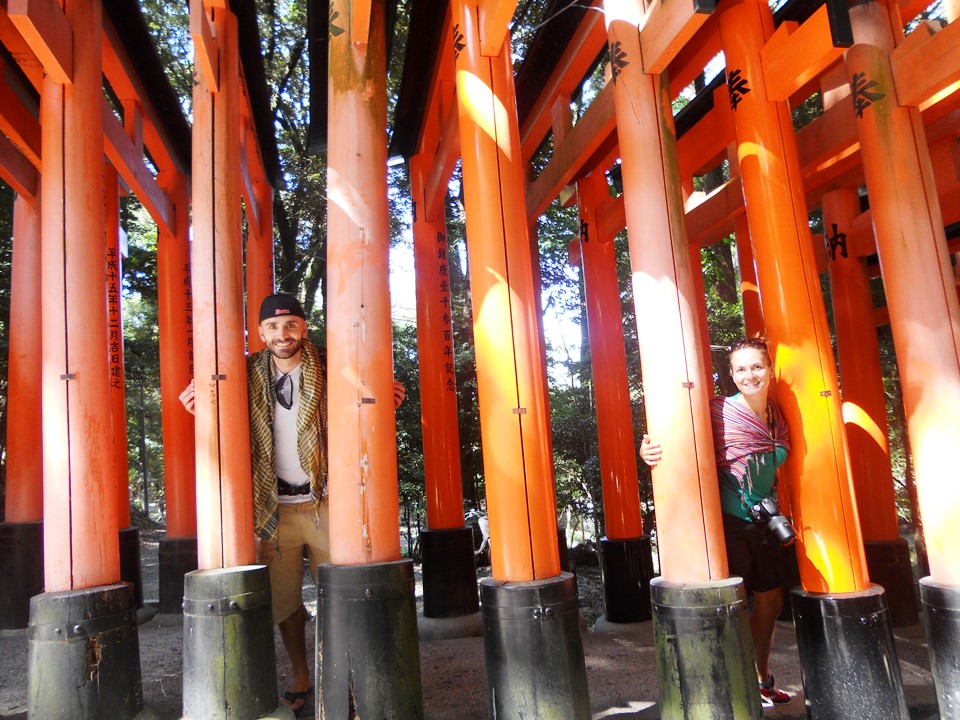
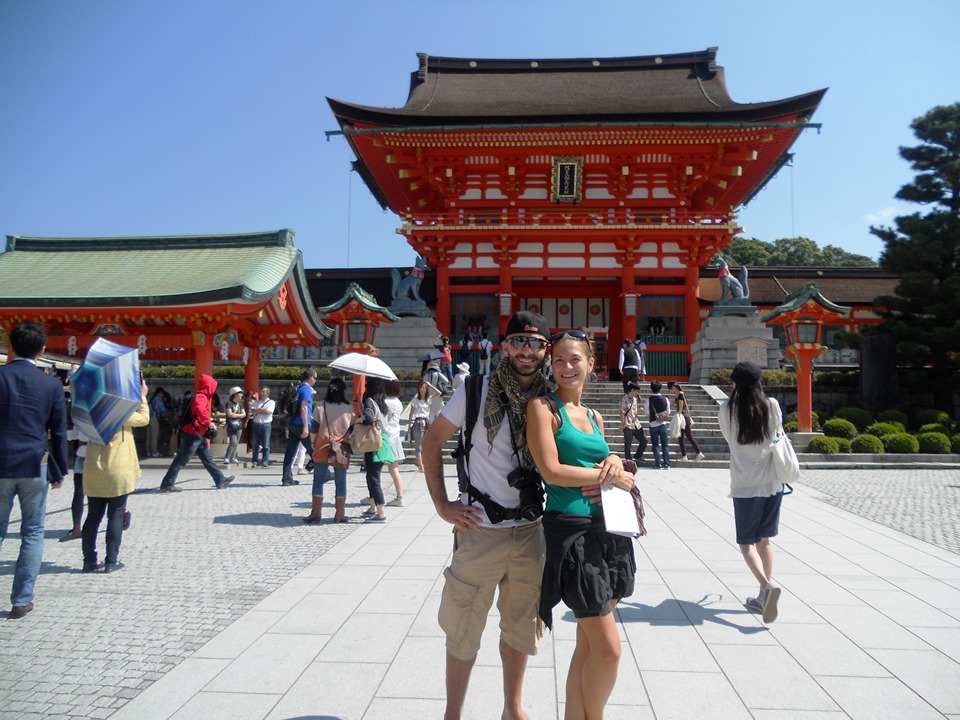

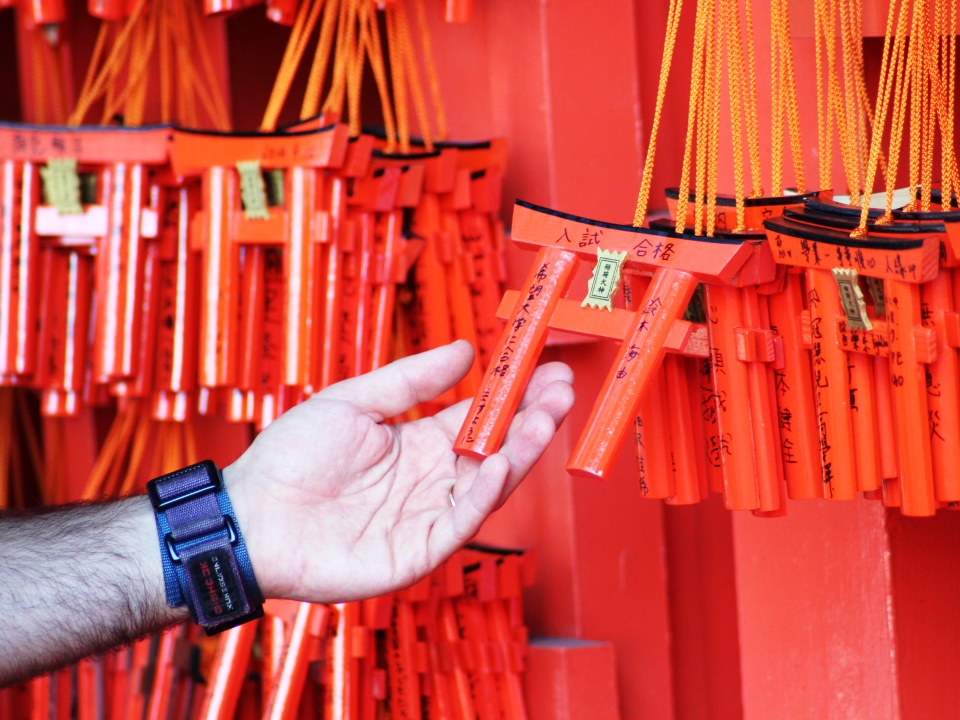
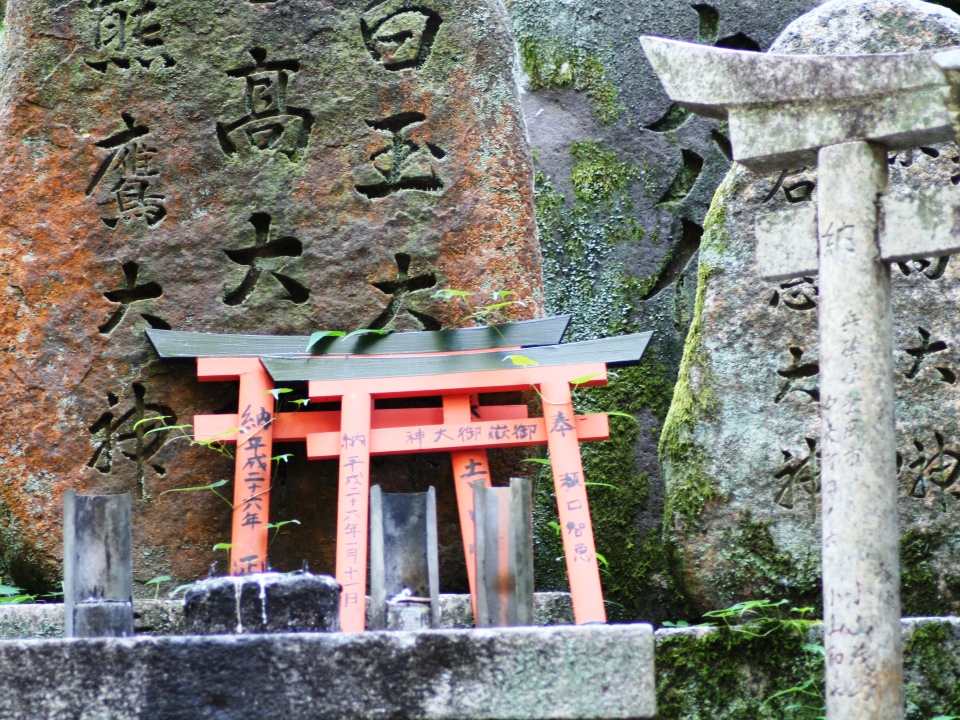
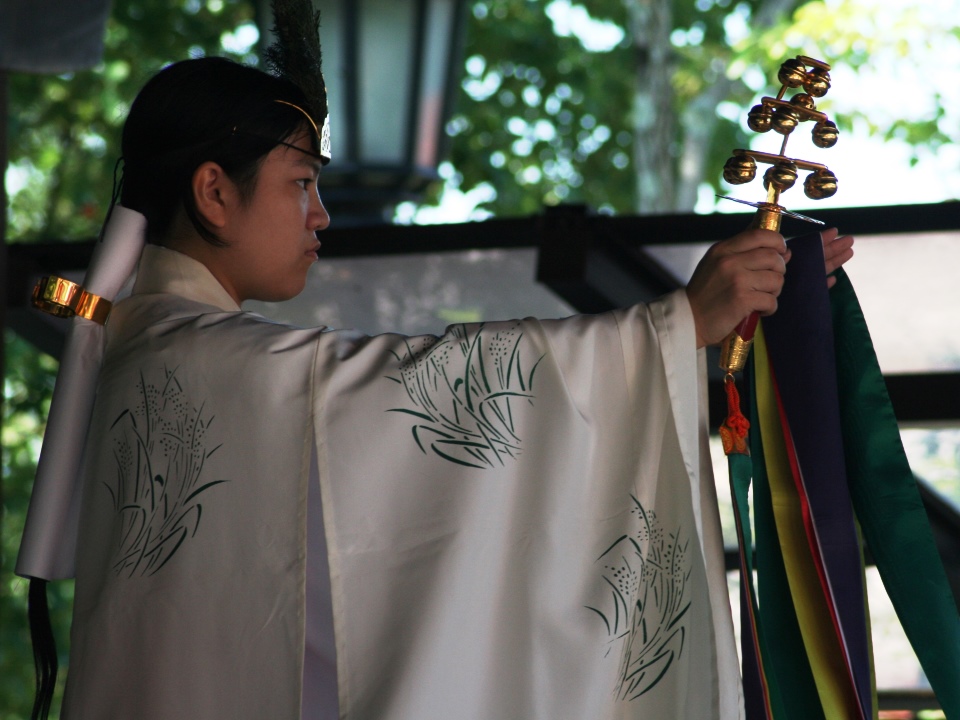
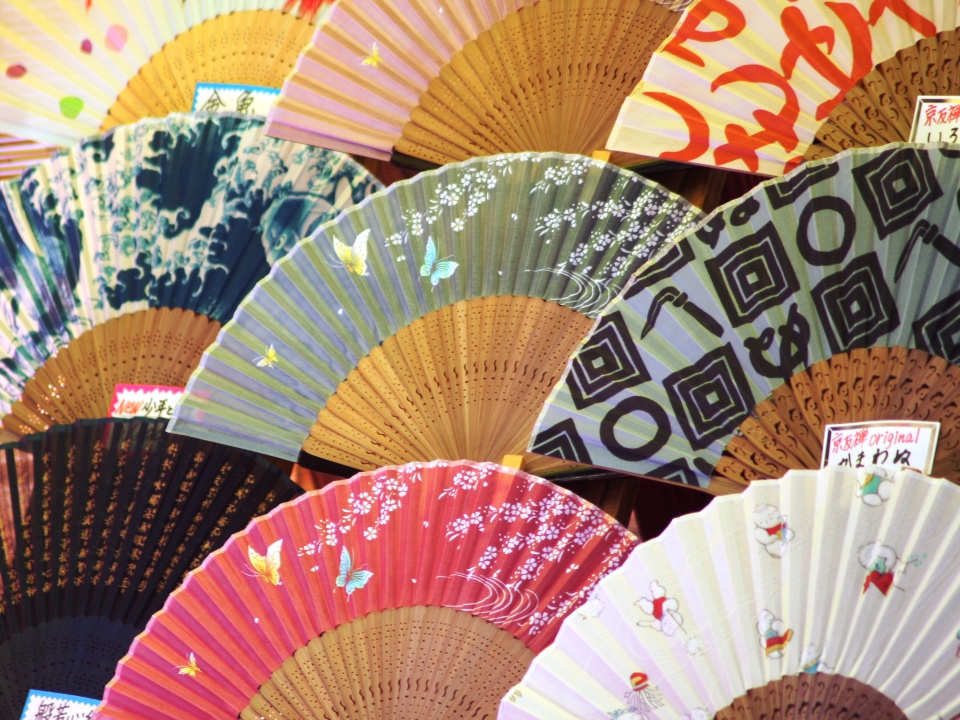
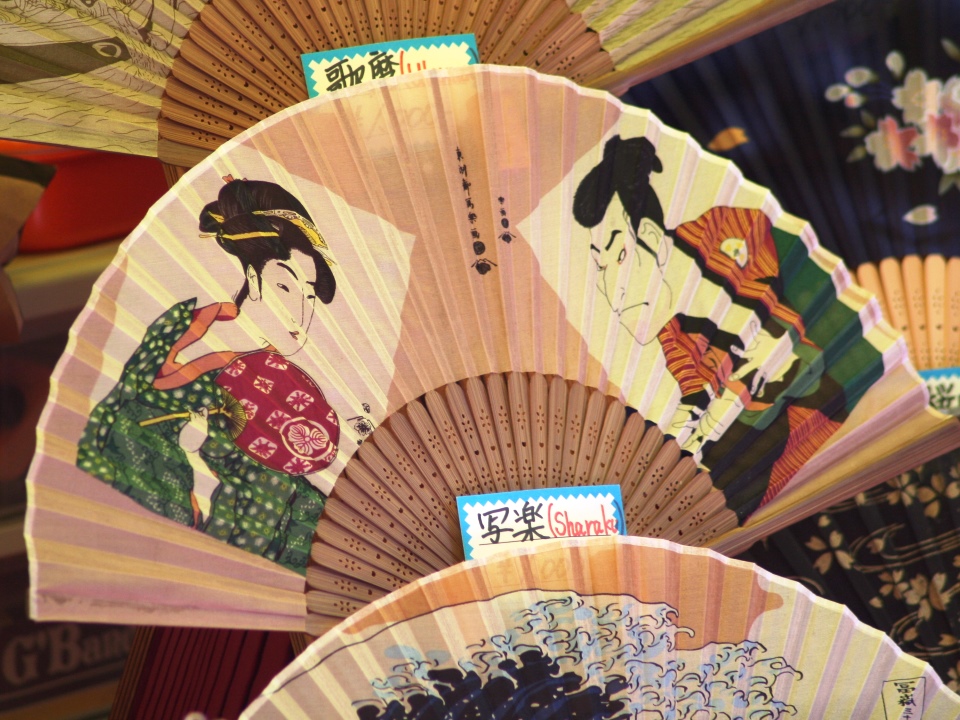
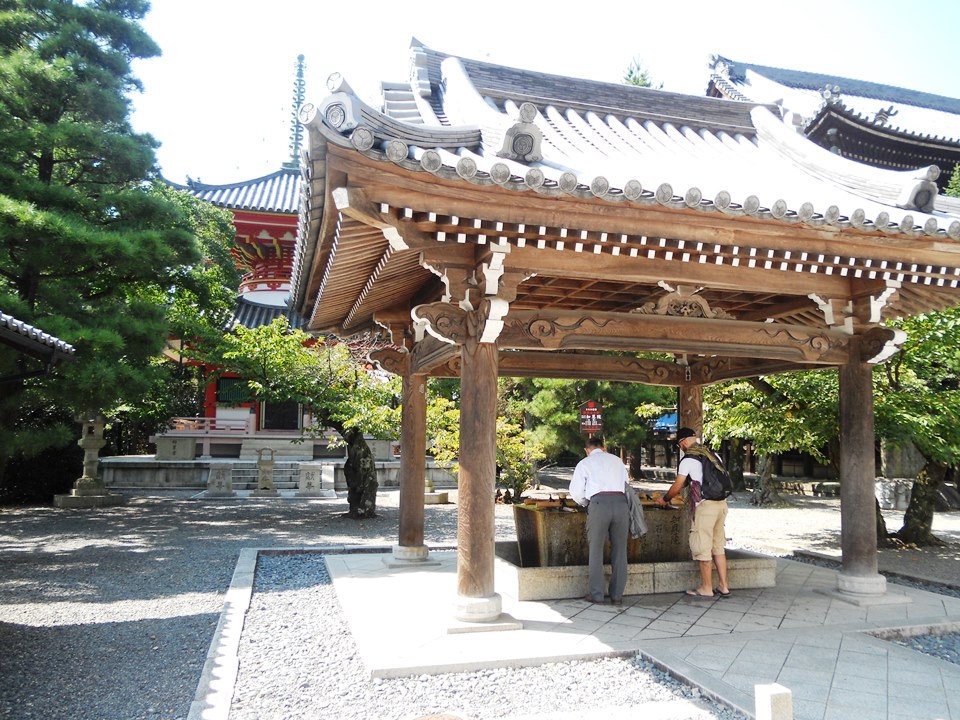
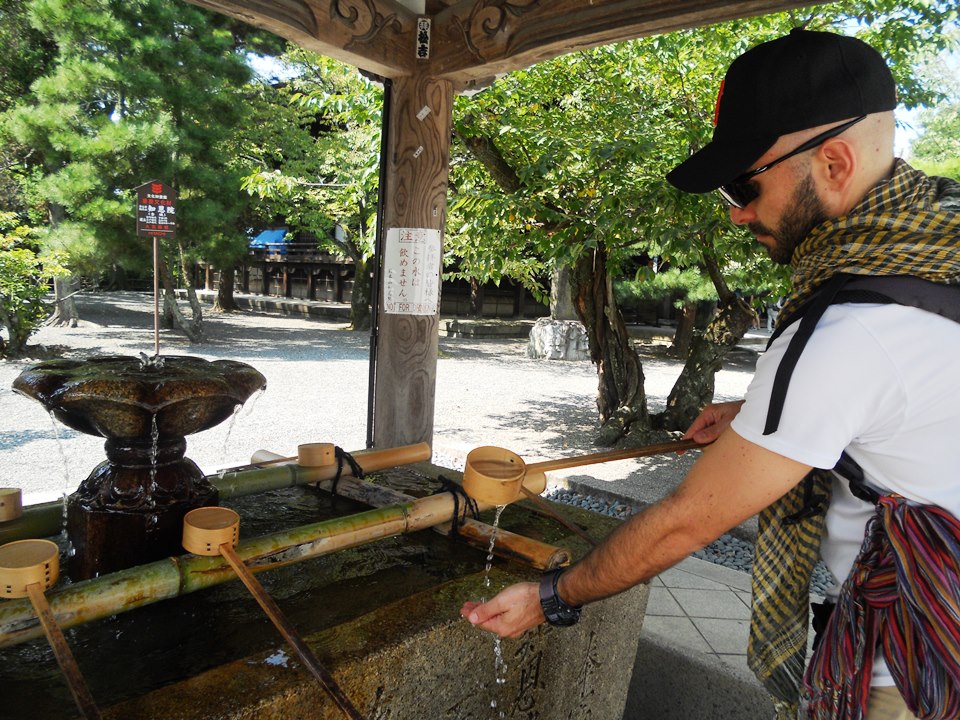
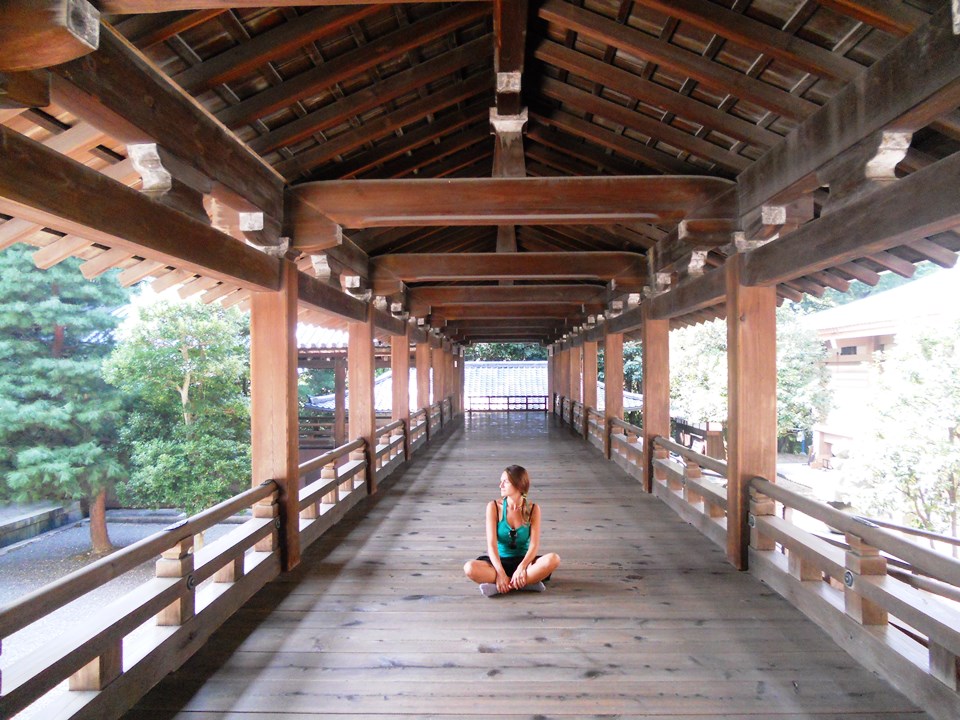

From there we reach the Chienin Temple, we climb numerous steps of ancient stone up to a majestic Buddha ... how strange to walk that floor that creaks emitting a sound very similar to the song of a "nightingale": it is the interior of the pagoda of prayer.
Suddenly several dozen monks make their entrance, sit on the ground in the lotus flower position and begin their suggestive song. Impressive!
At the Gion Corner we witness a theatrical representation divided into different acts that showed different aspects of local culture: the solemn ceremony of preparing tea, the "Gagaku" (sweet harp show), then an ancient comedy Kyogen (hilarious courtesan story) up to the most anticipated Kyomai (Kyoto dance with two Maiko) and Bunraku puppets.
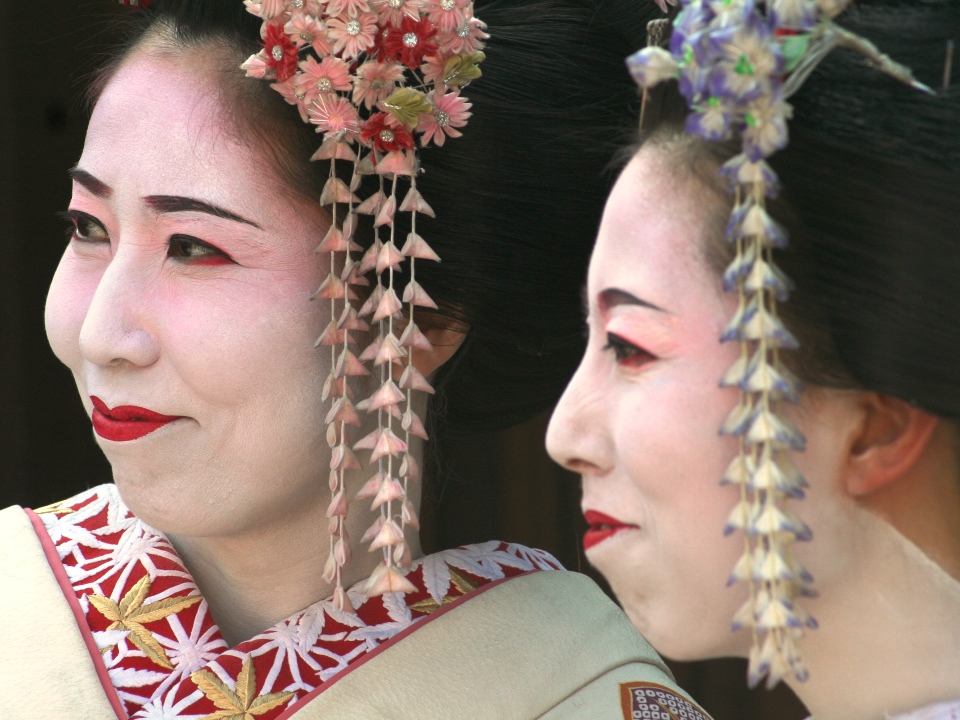
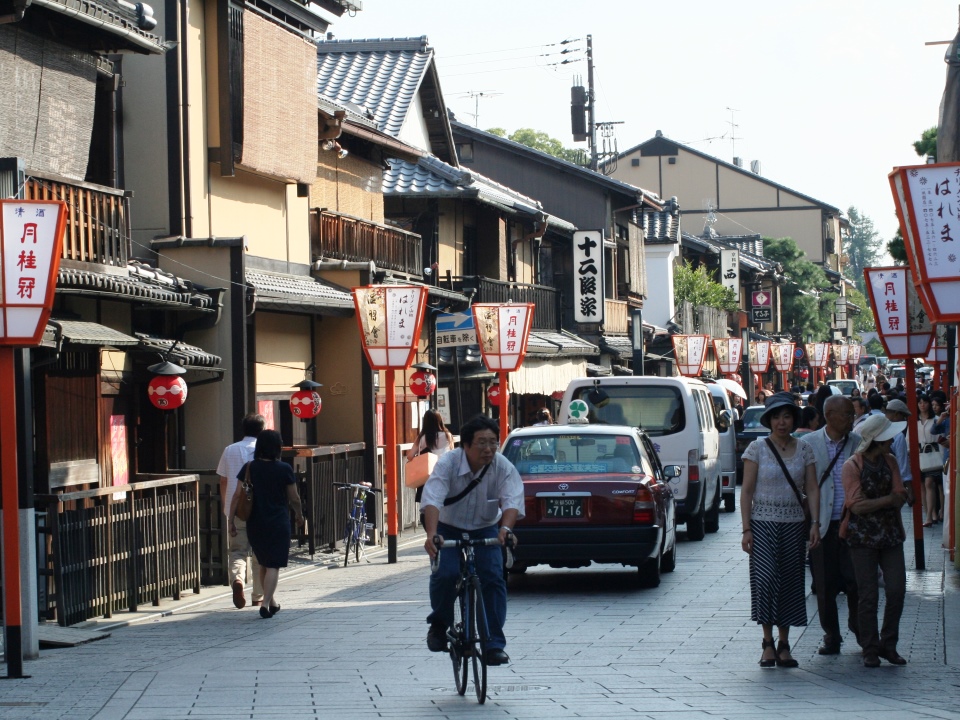
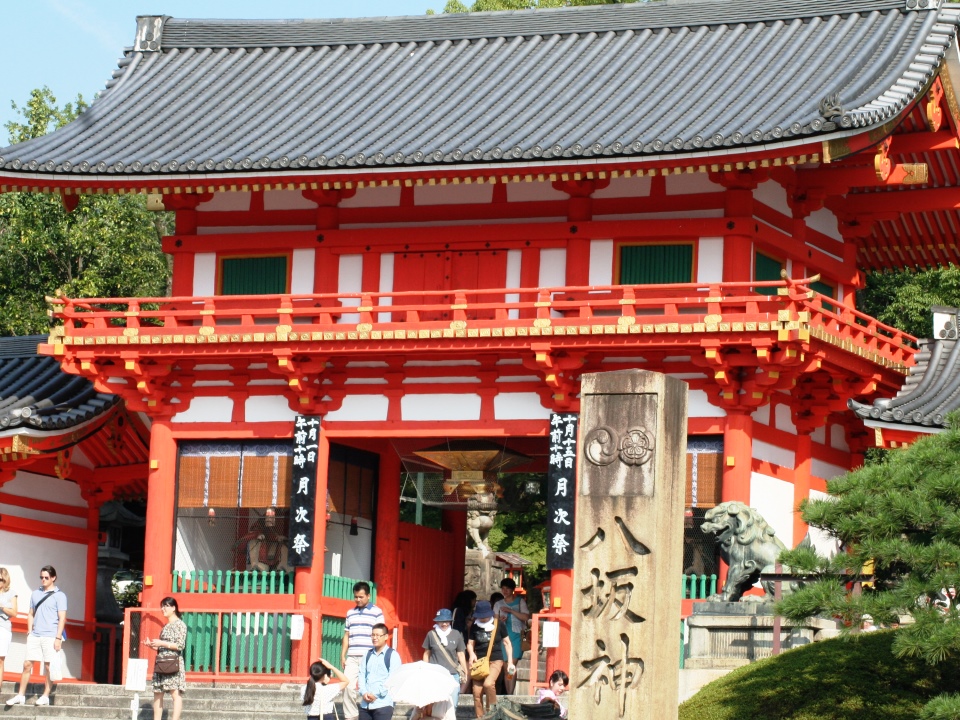
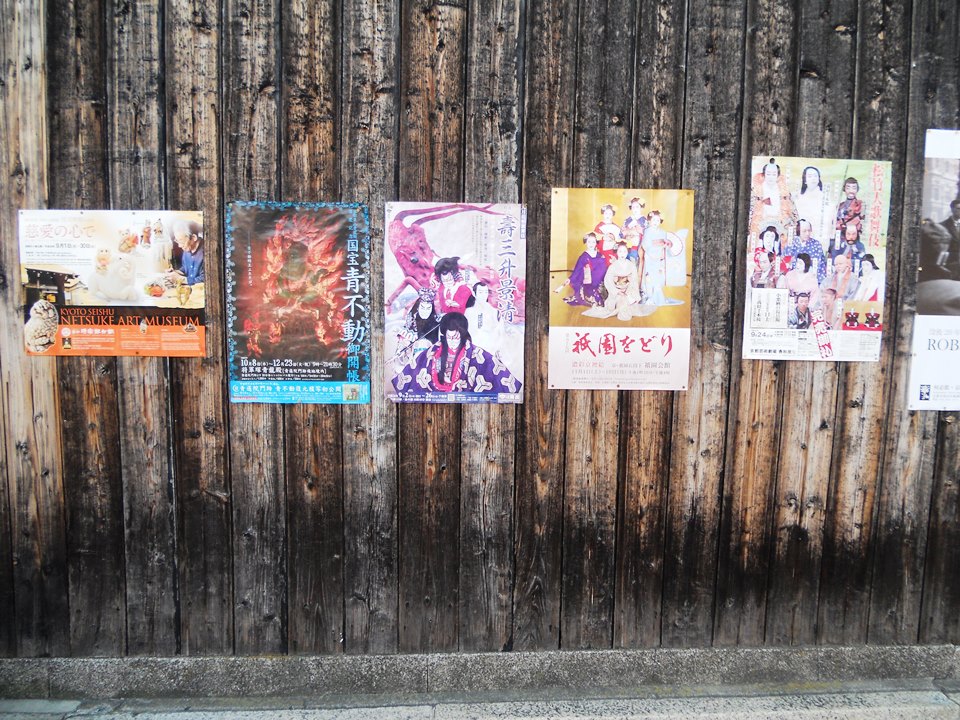
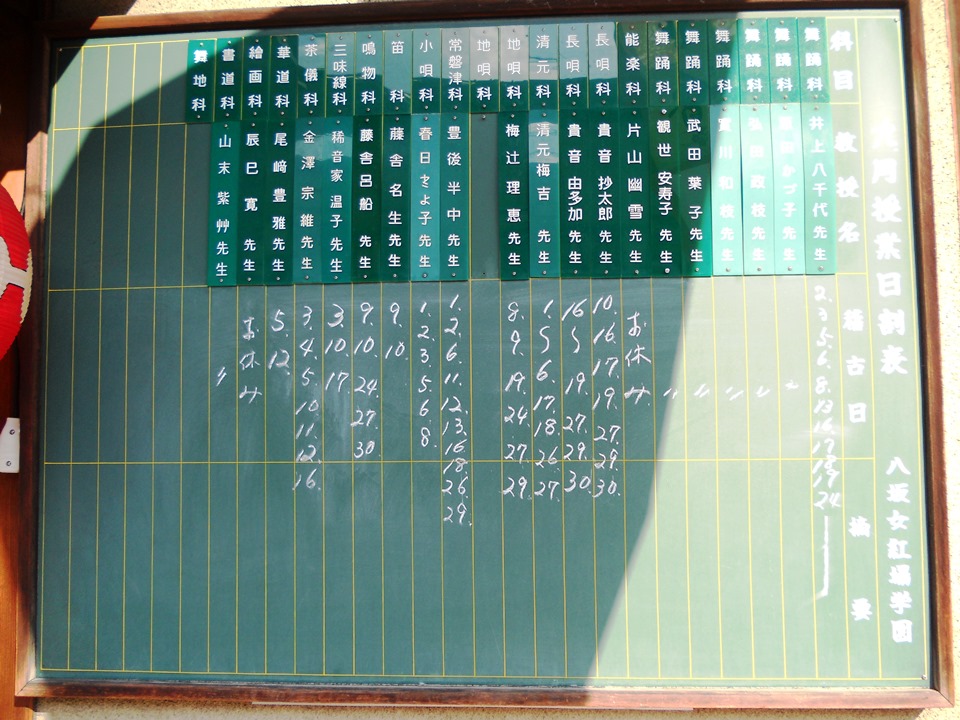
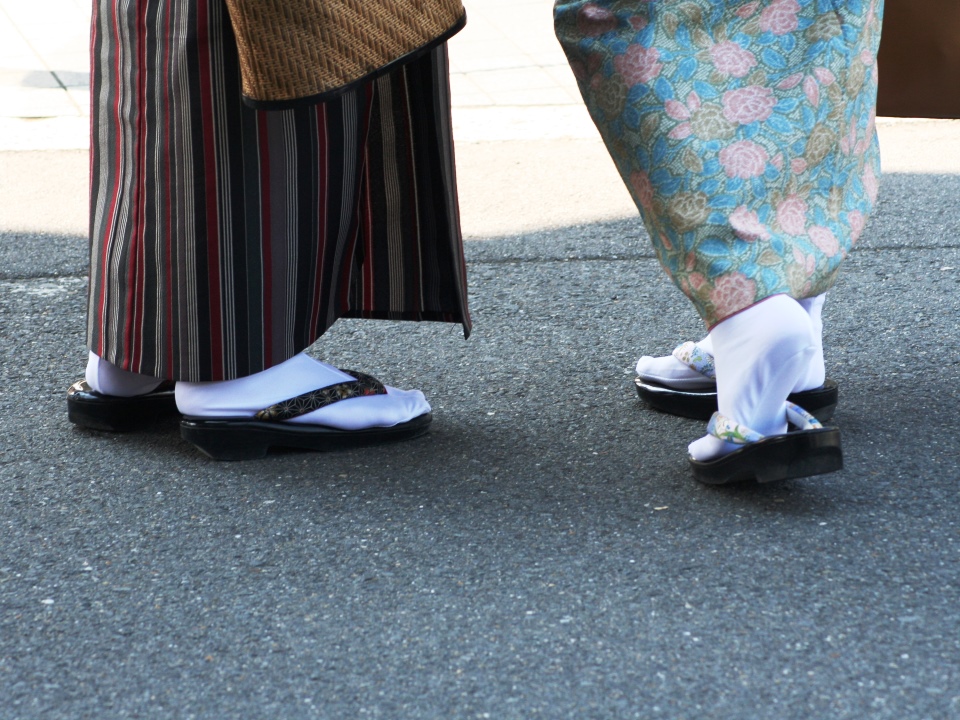
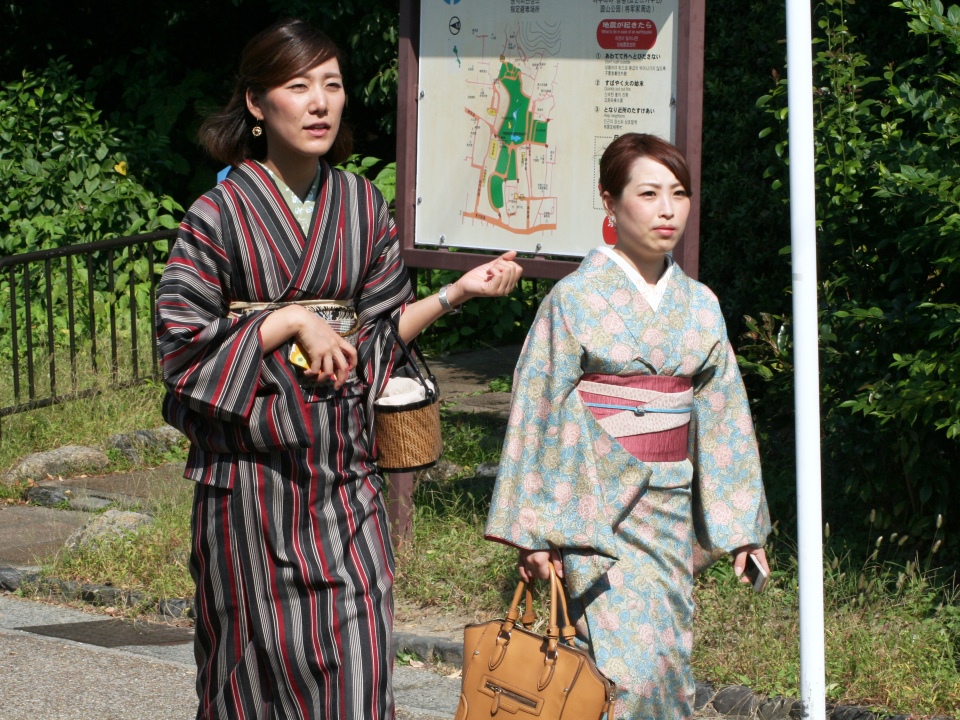
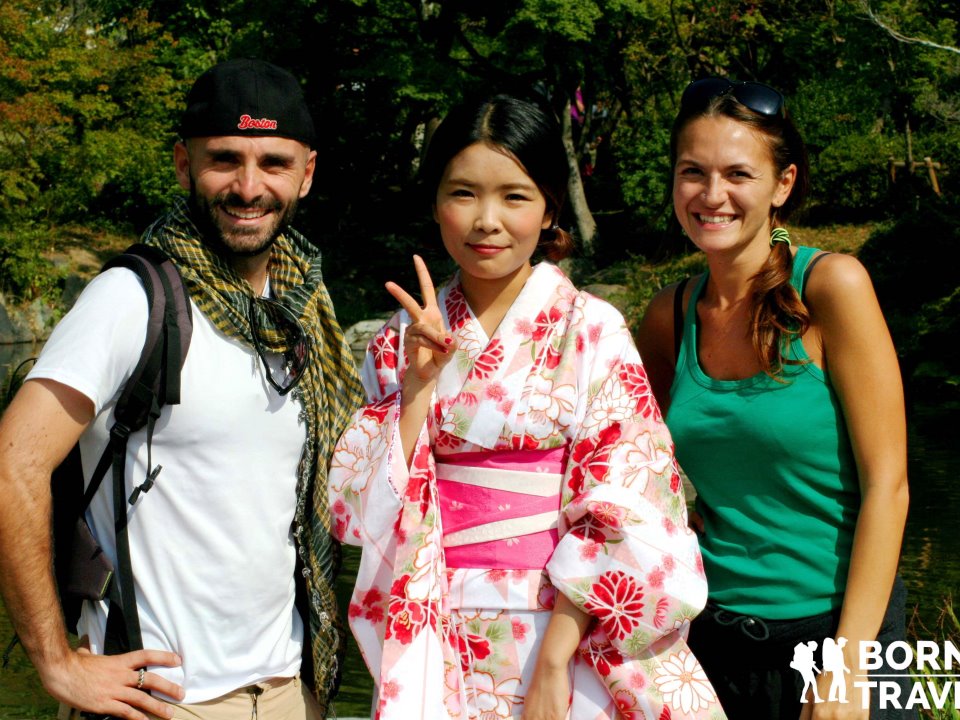
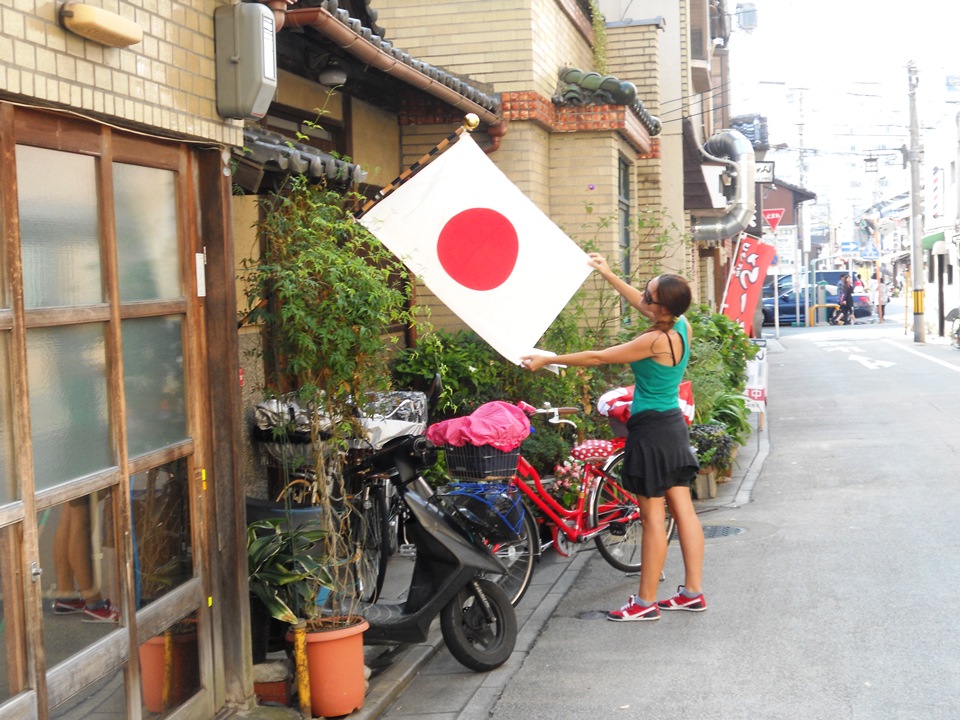
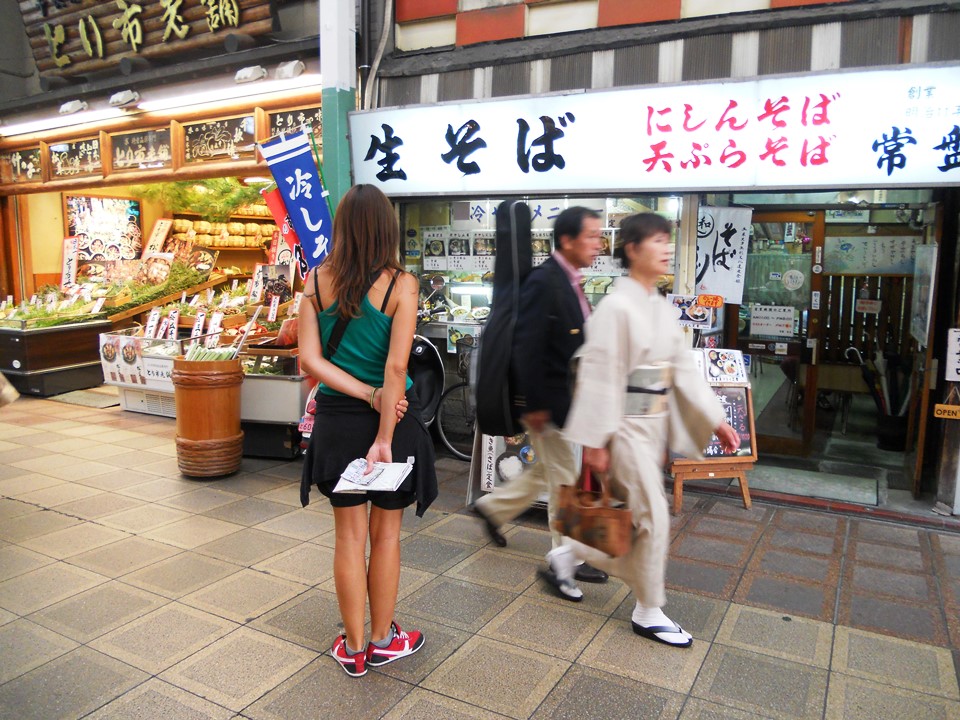
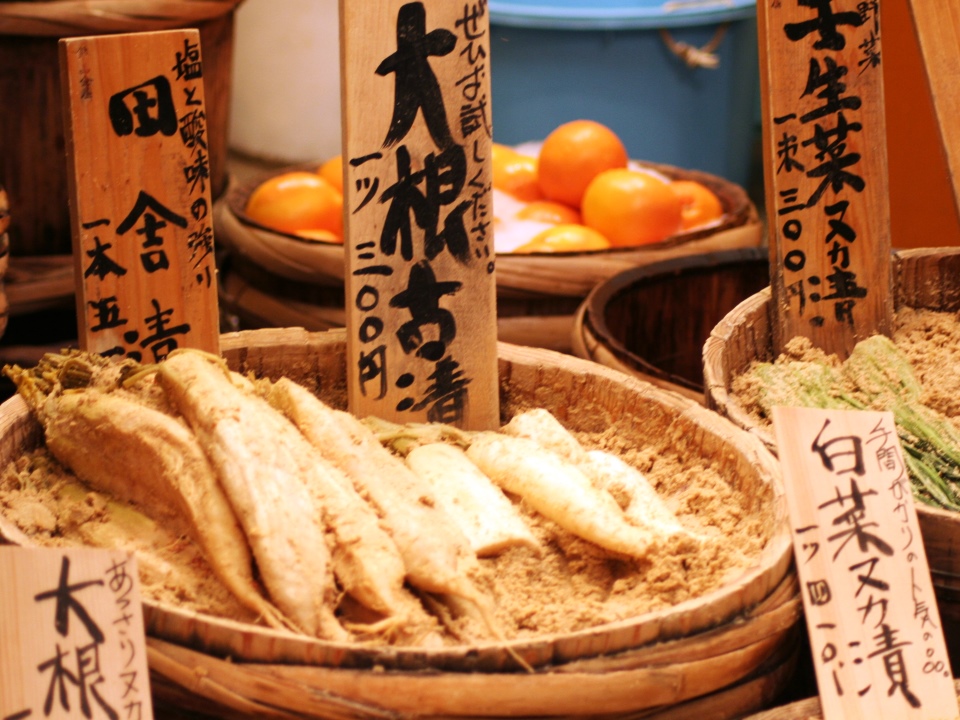
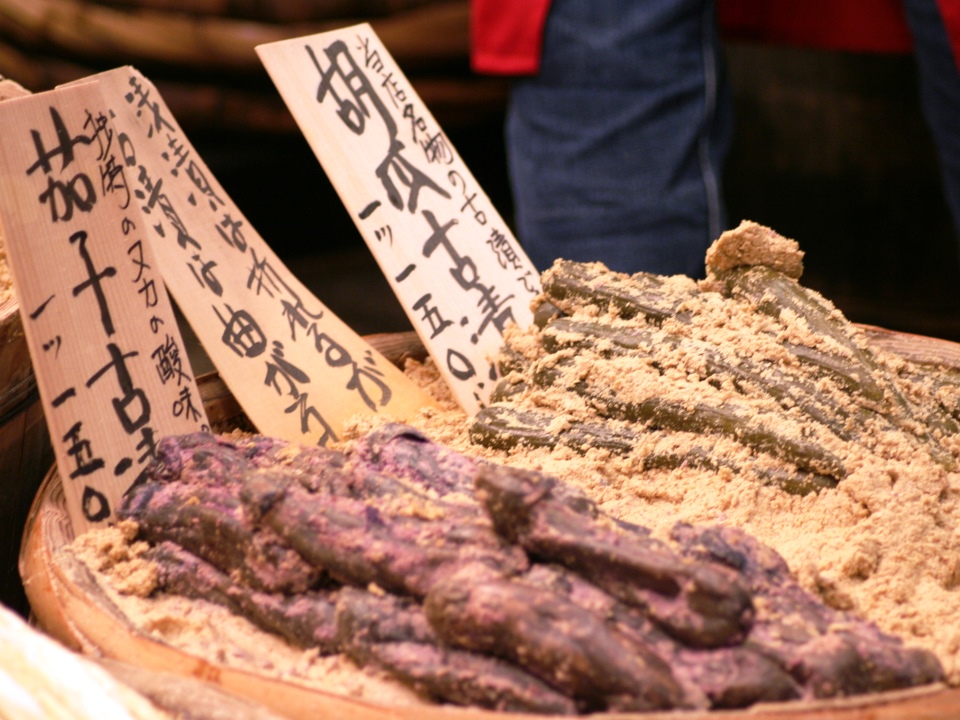
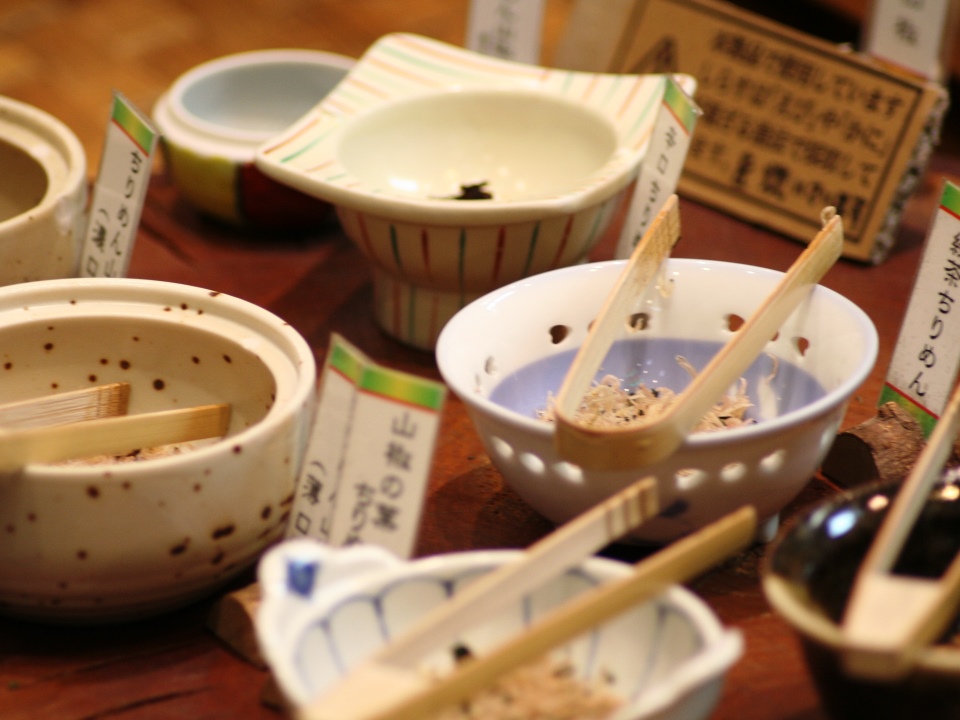
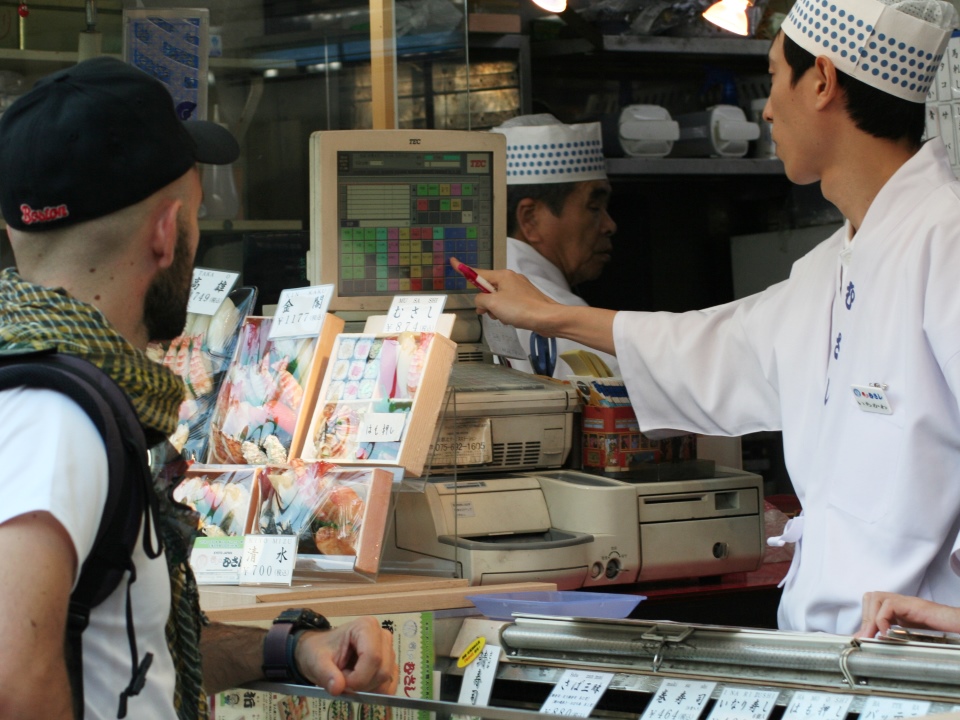
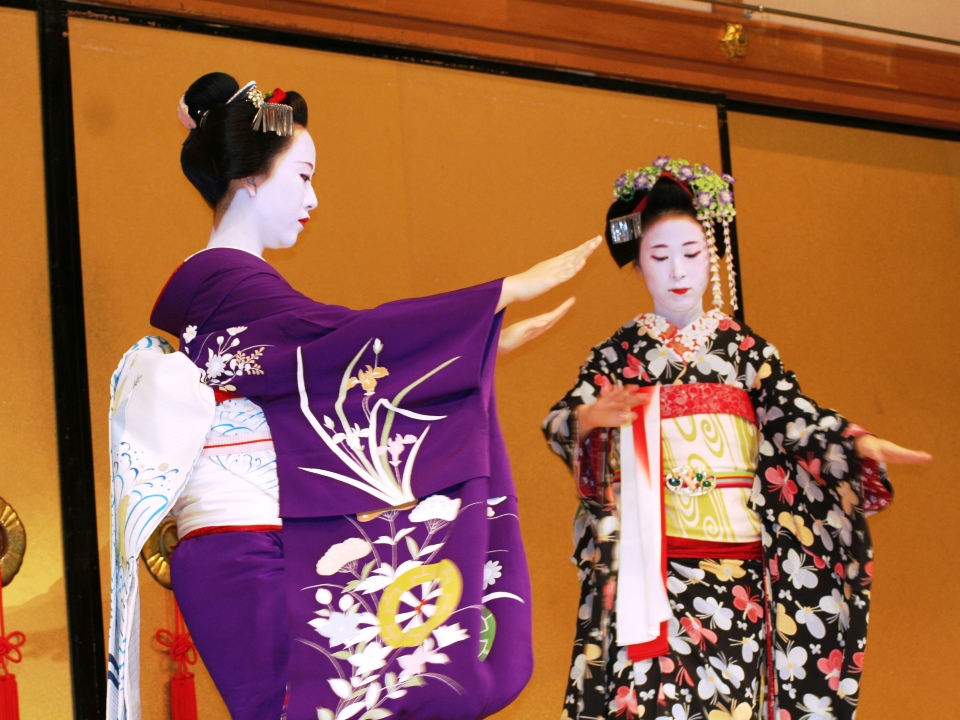
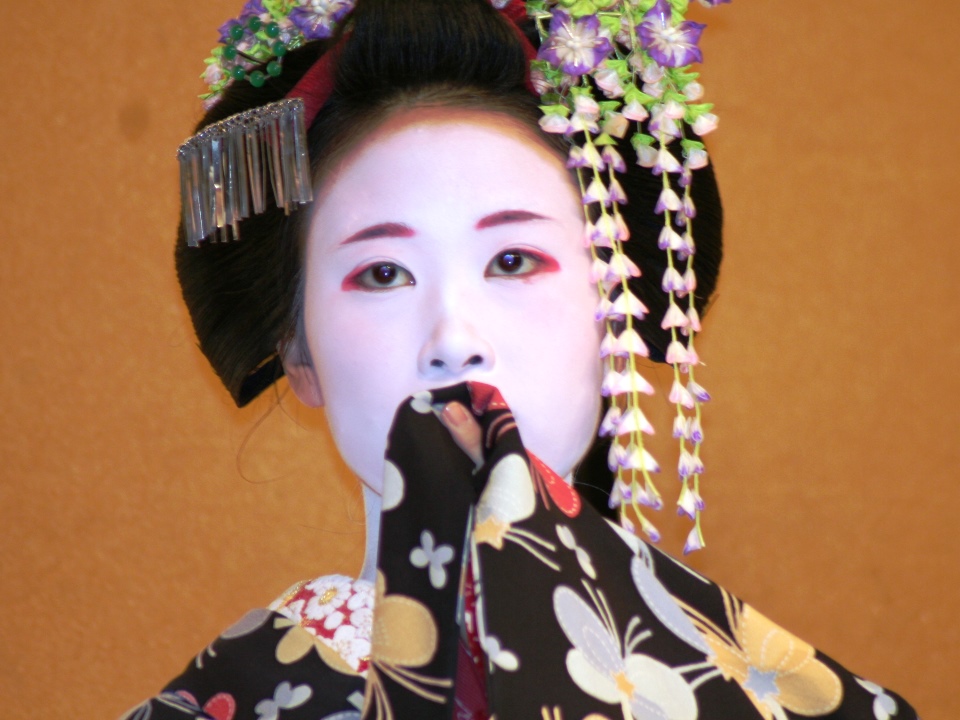
This morning Kyoto delighted us again by showing us its immense treasures! I am sure that even if we spent a whole week here we would always discover new and interesting things.
In the morning by tram we reach Arashiyama to admire yet another show of Mother Nature: the “bamboo forest”.
You feel so small among those very high and resistant rods, it almost seems to be a small flea on the back of a gigantic porcupine.
We move north to the Ryean-Ji temple to relax in its picturesque Zen garden near the wonderful pond populated by mandarin ducks.
Needless to say, time seems to have stopped in such places and the young girls in kimonos almost do not clash, on the contrary, they seem to be the natural and indispensable element.
Finally we arrive at the Kinkakuji Temple and we are enchanted by its golden splendor.
A construction of 1500 that in 1950 was set on fire by a monk obsessed with its beauty. It was immediately restored to buy its charm again.
It was exciting to admire this ancient Zen temple reflected in a lake so transparent that you could see the many giant carp that populated it (sacred animal in Japan)!
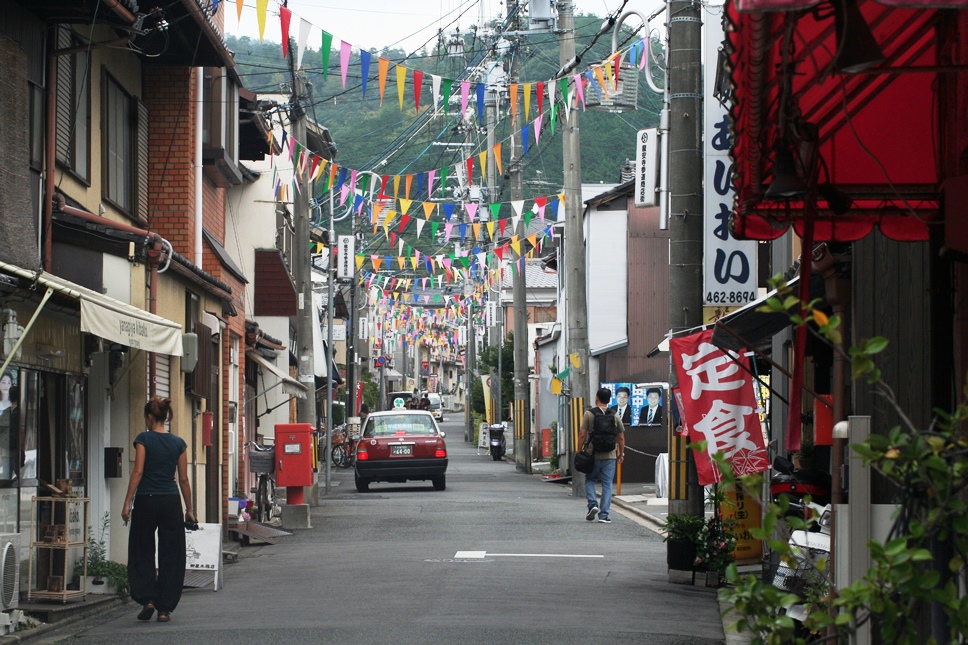
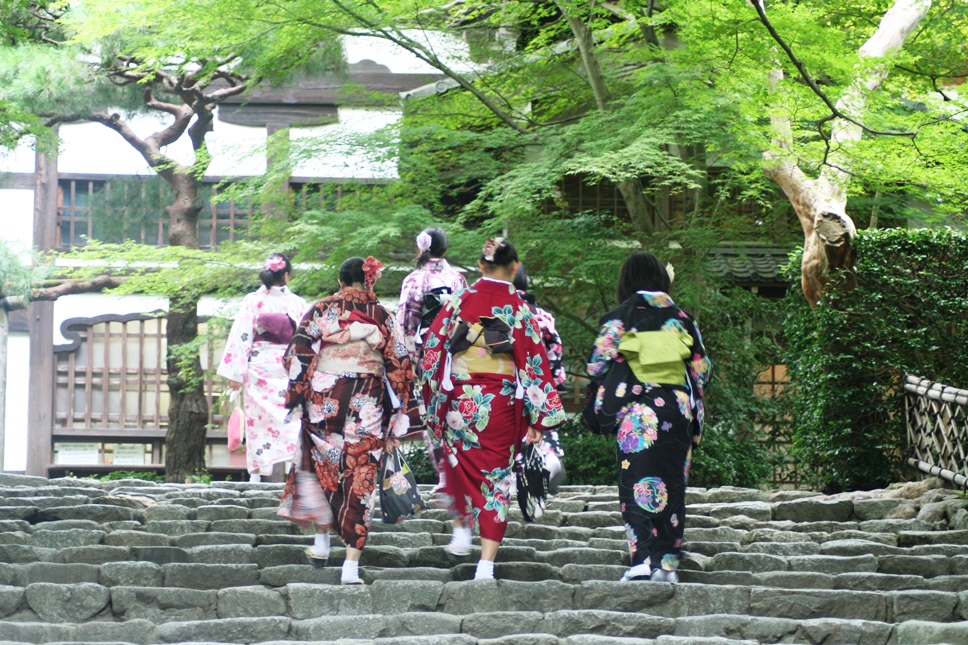
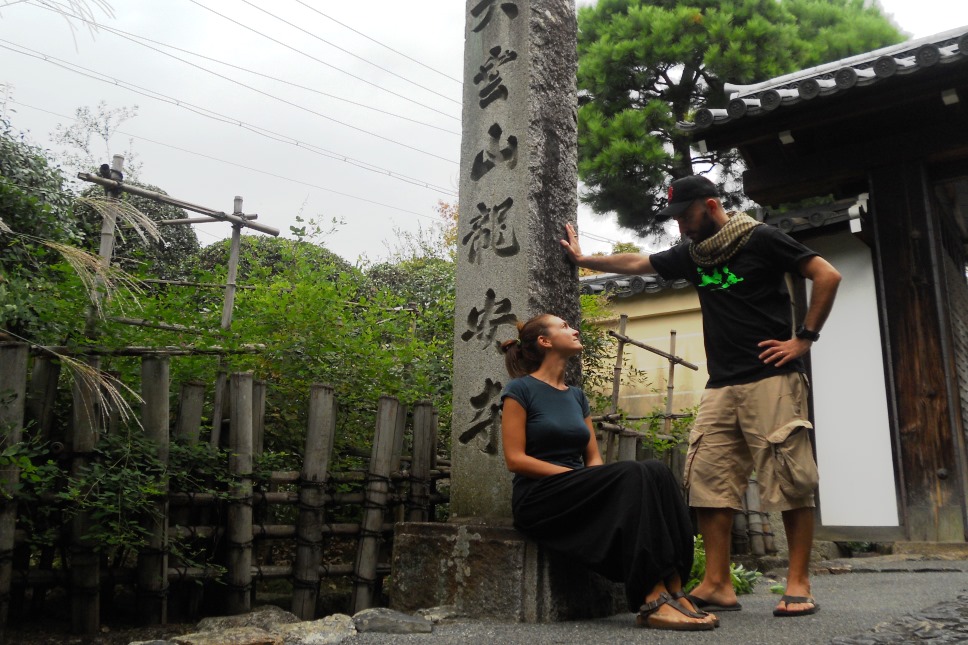
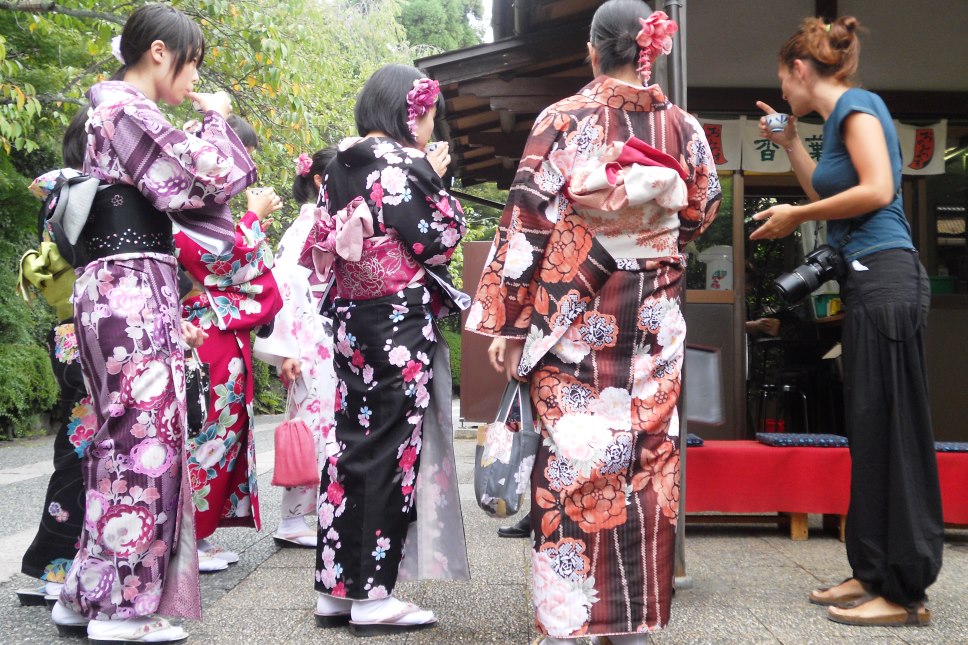
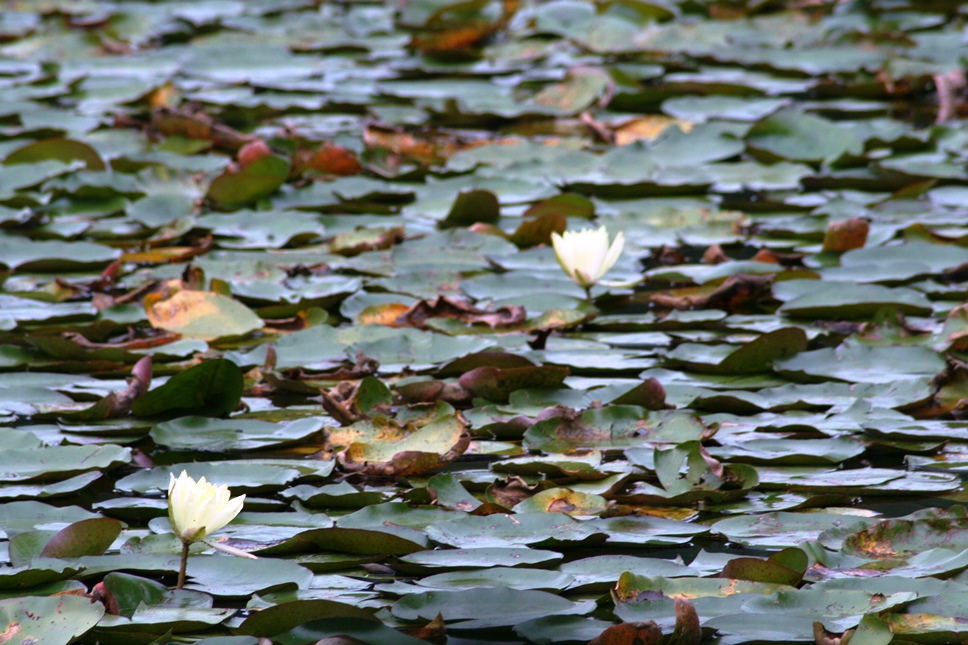
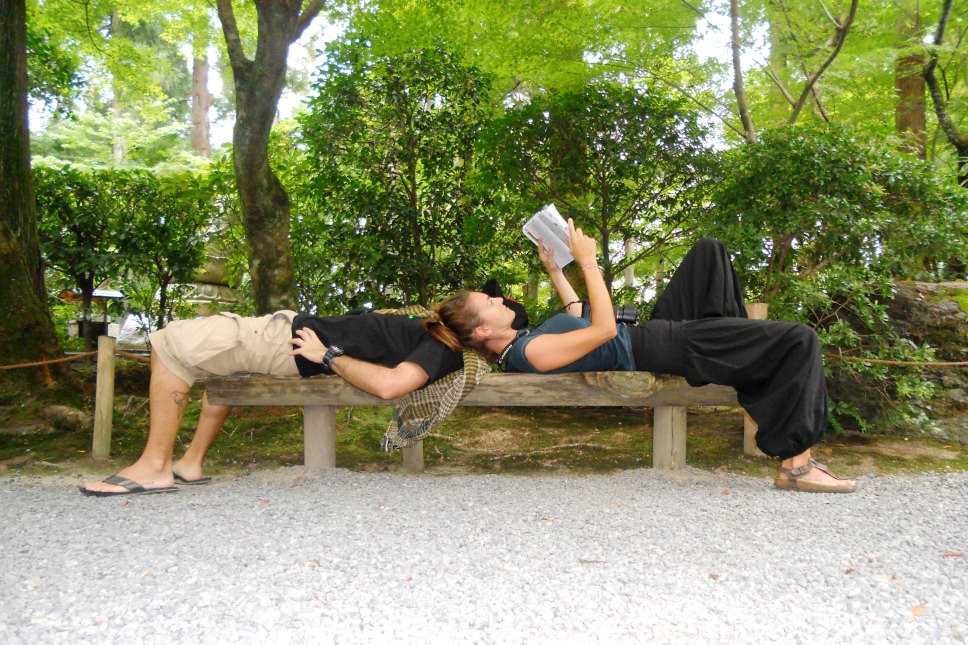
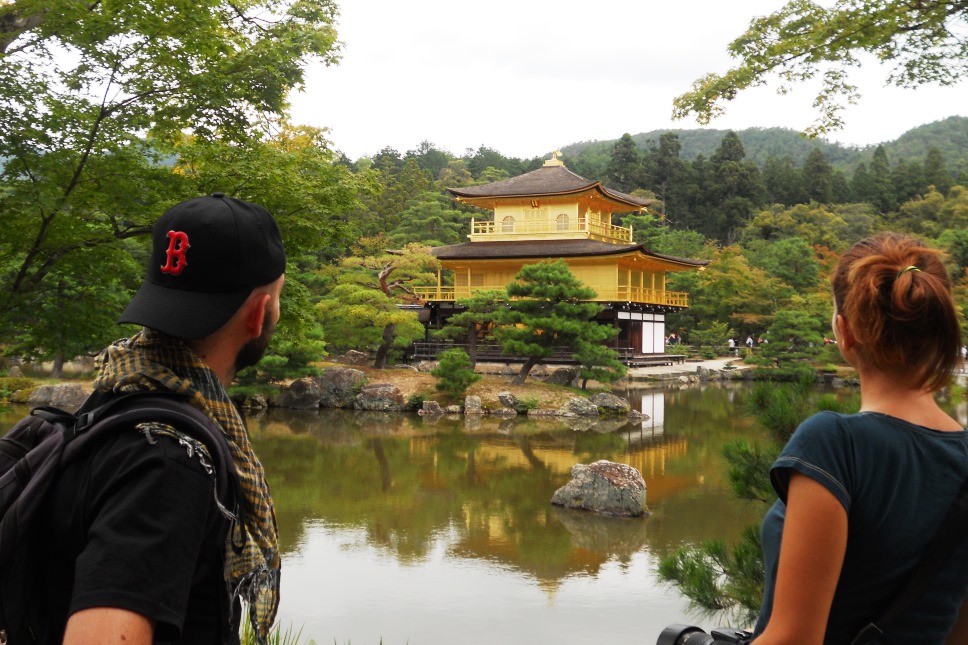
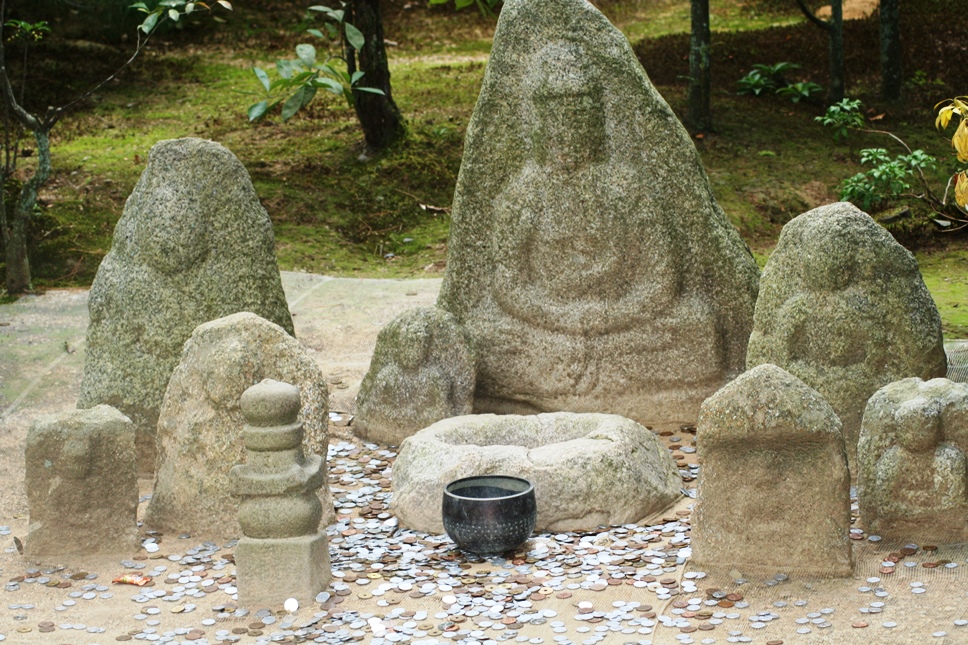
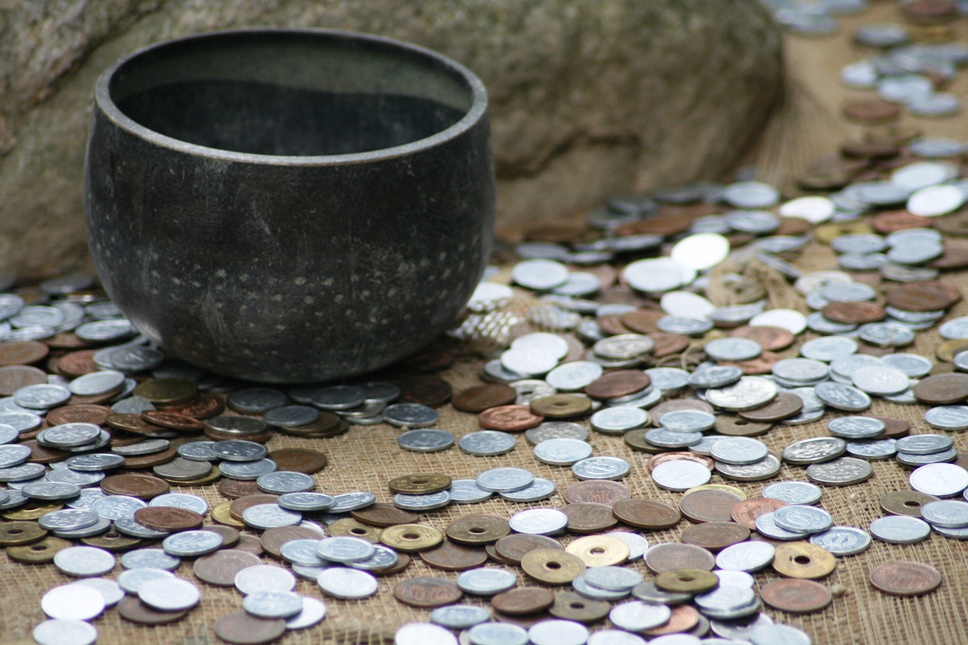
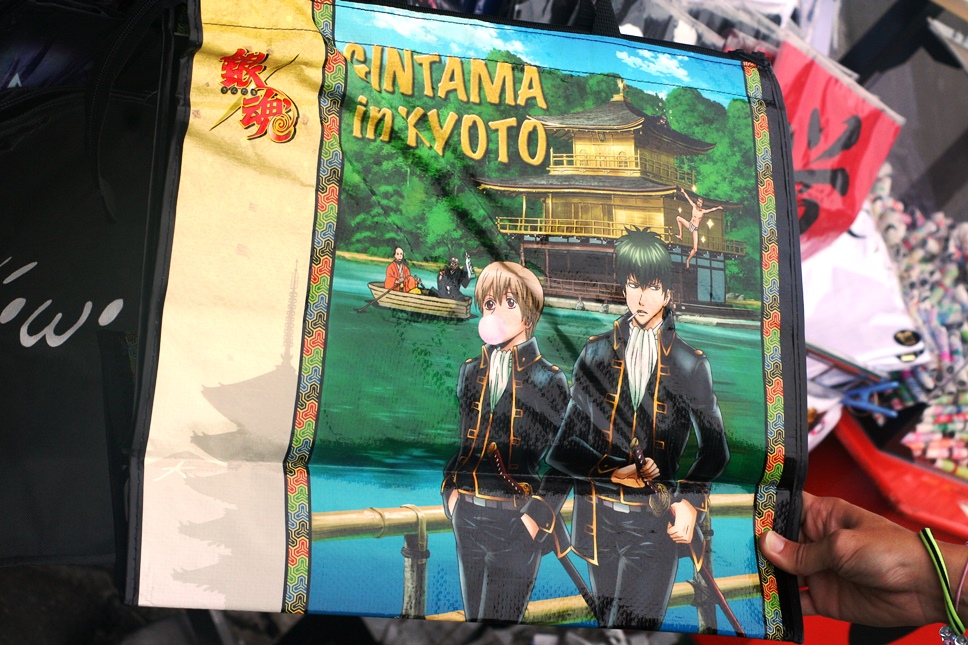
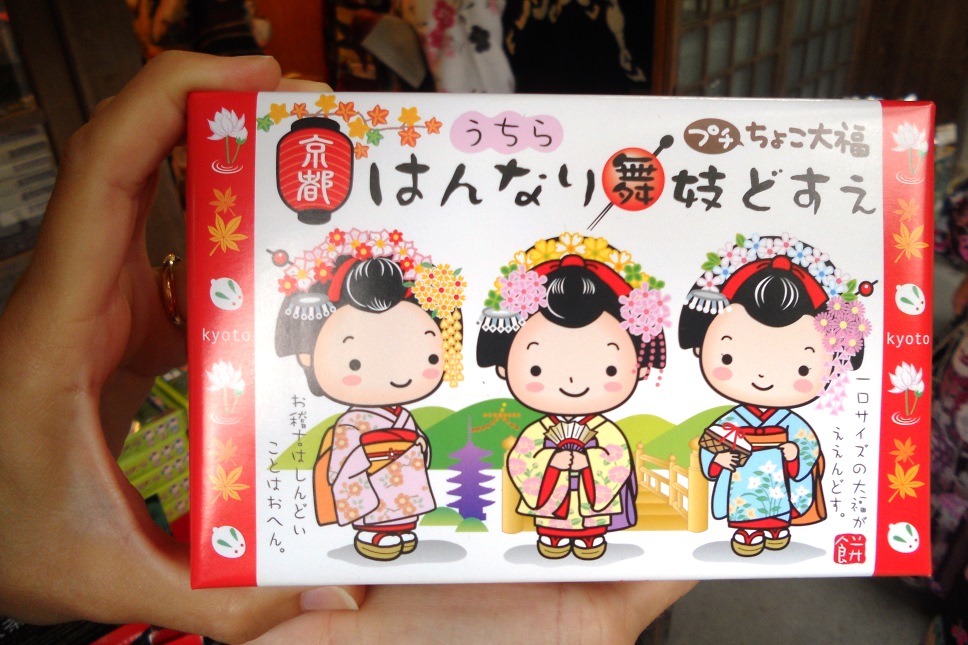
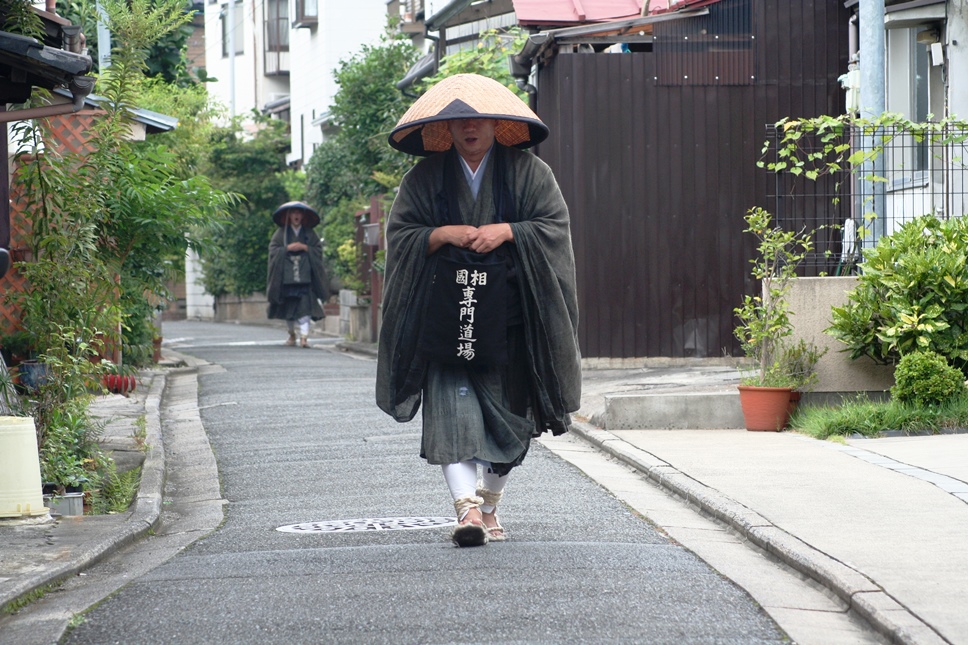
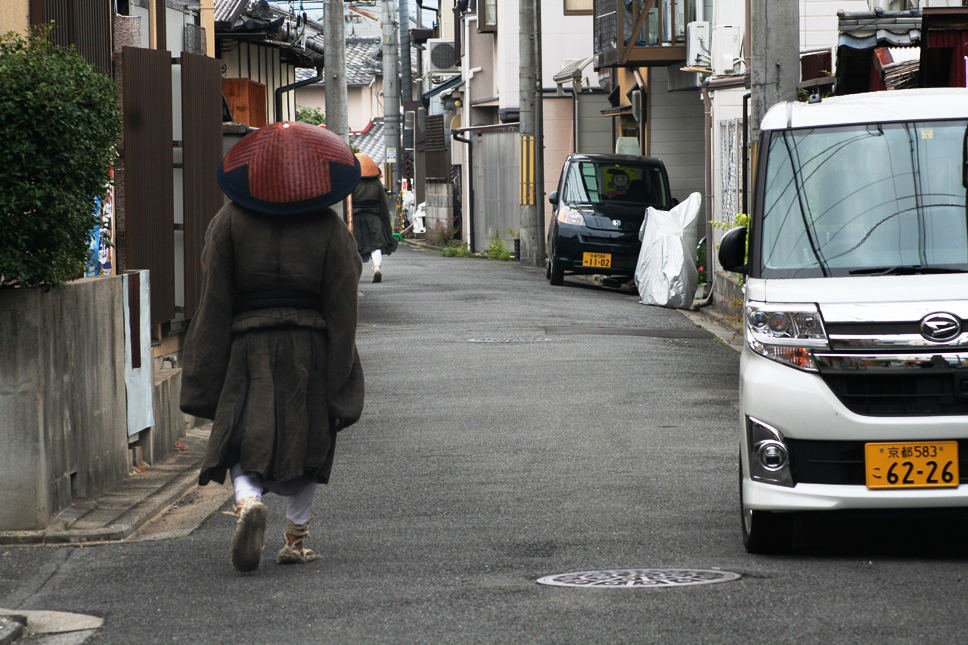
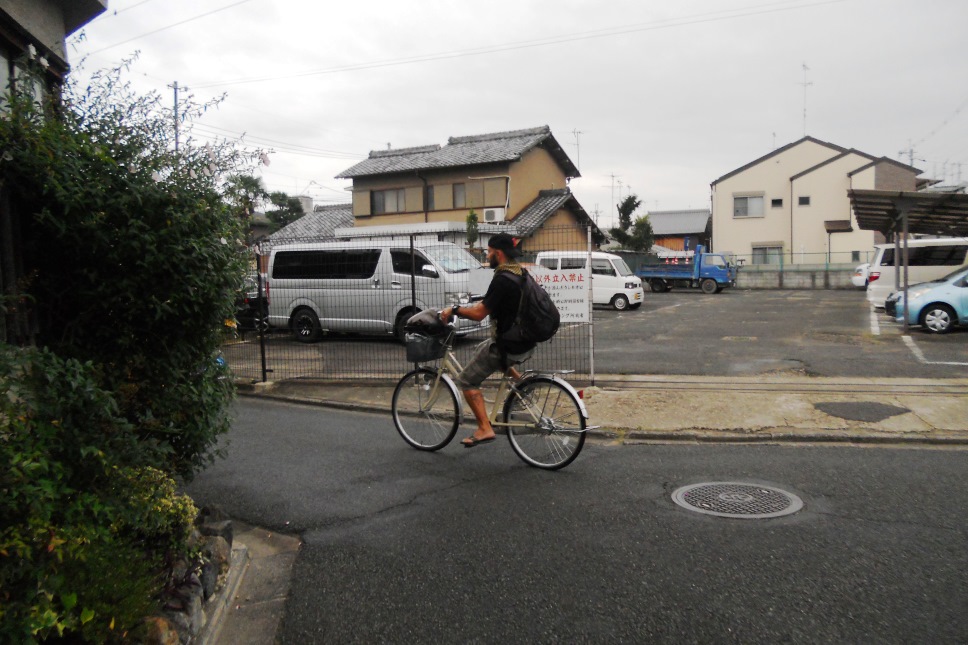
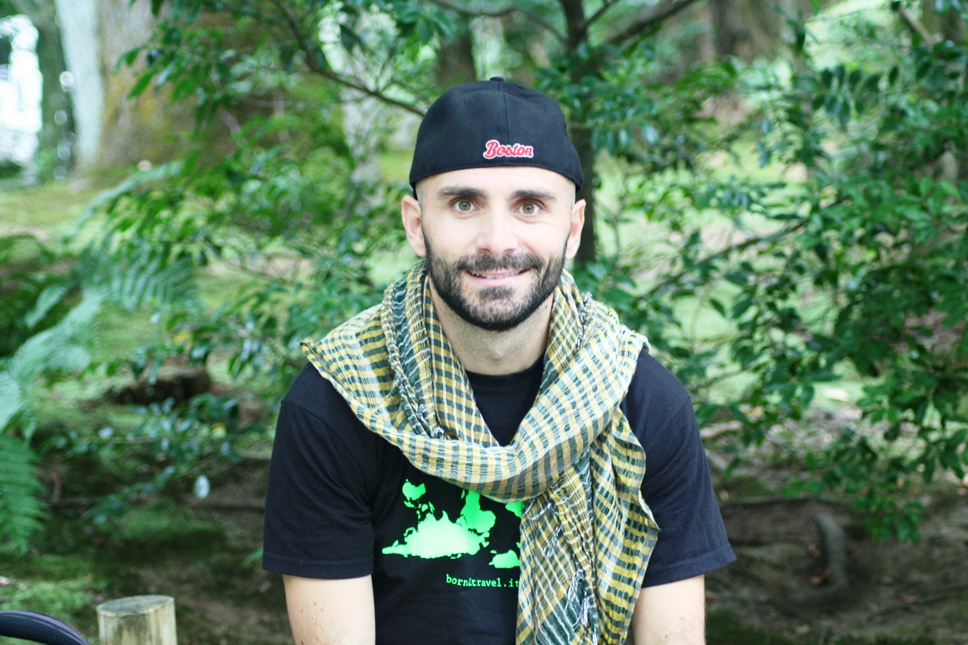
We cross most of the Japanese island by train to reach Matsumoto. Masahisa, our coushsurfing contact on site, immediately accompanies us to visit the Castle of the city. It was built in 1955 and its black and white colors have given it the name "raven castle".
Surrounded by a moat full of carp and elegant white swans: it is the oldest wooden castle in the country. The collection of ancient weapons and armor of the legendary samurai is beautiful.
Who knows how this place that still transpires with magical air must have been hundreds of years ago.
We start with Masahisa at a time of the Jigokudani National Park famous for the so-called "snow macaques". We climb a mountain path as we begin to meet the first macaques ... some groom themselves, others take care of their babies ... we cross a bridge that overlooks a pool of hot water where all those cute little monkeys immerse themselves and relax!
It was a unique feeling to see what you usually watch in documentaries live!
Needless to say, our cameras shoot images that are already impressed on our hearts!
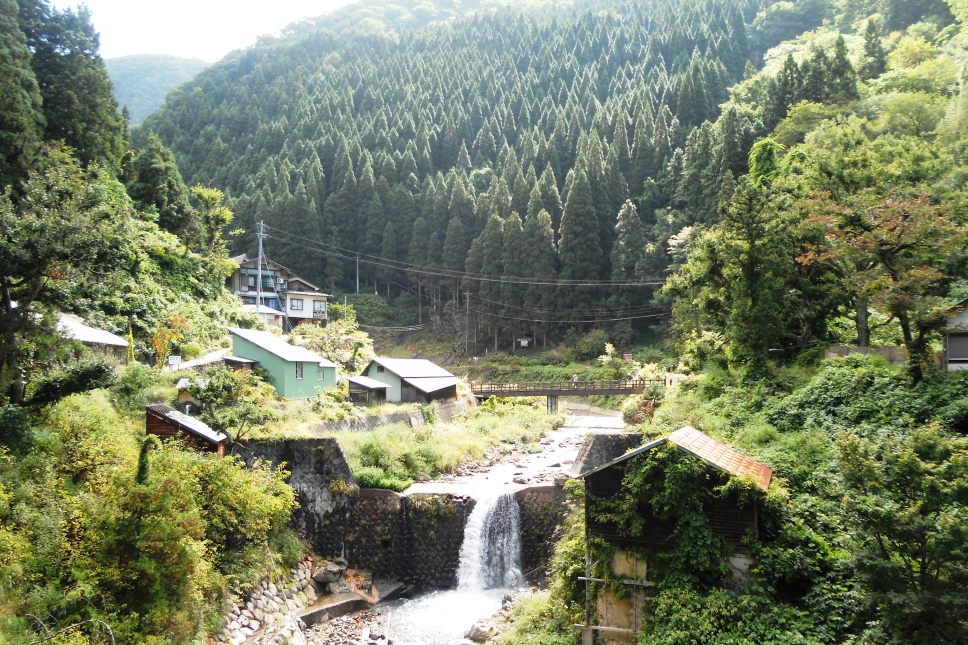
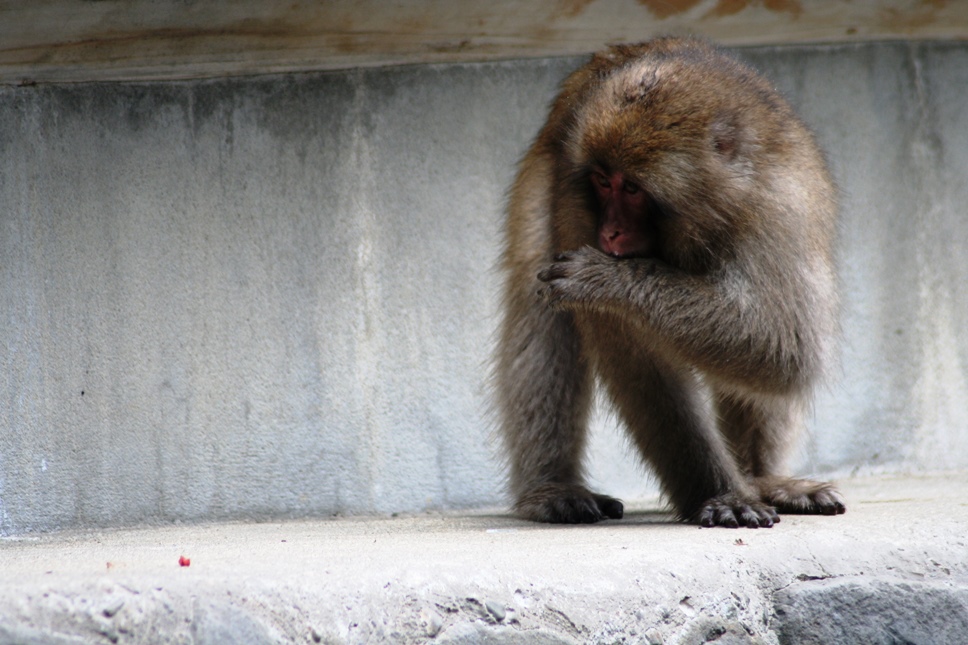
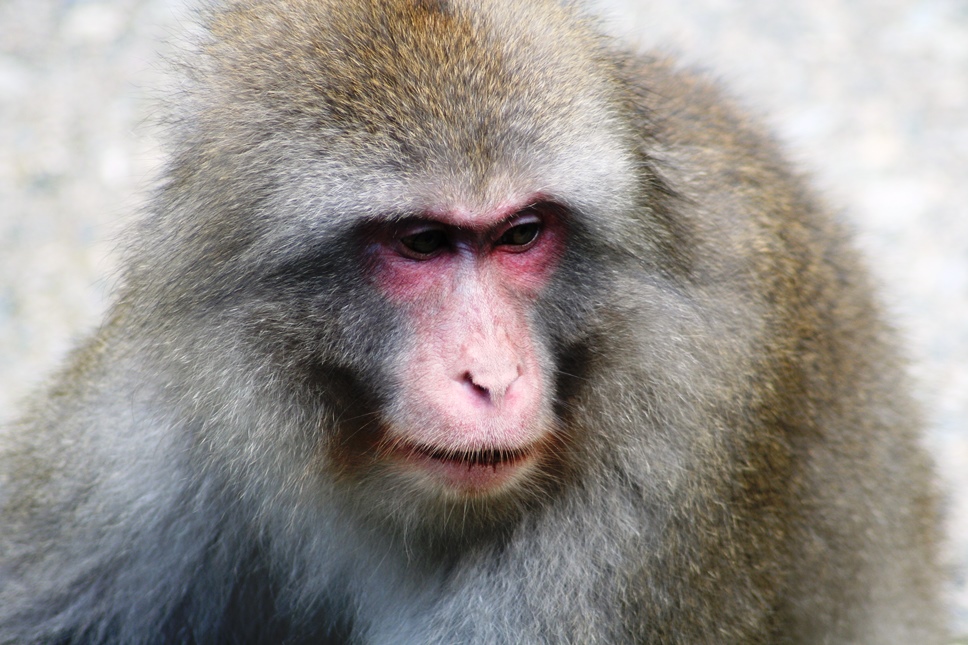
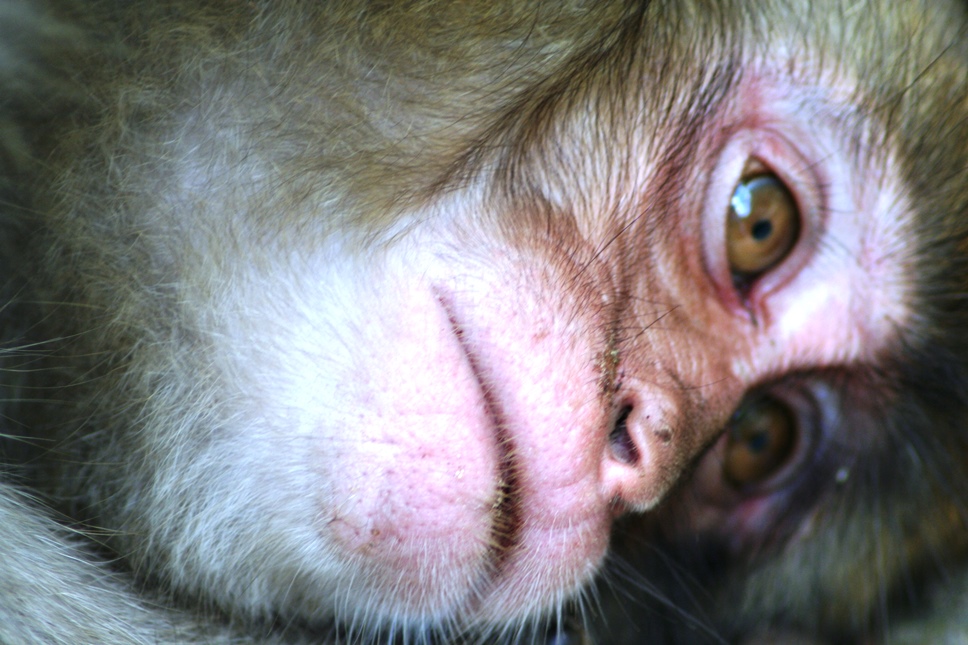
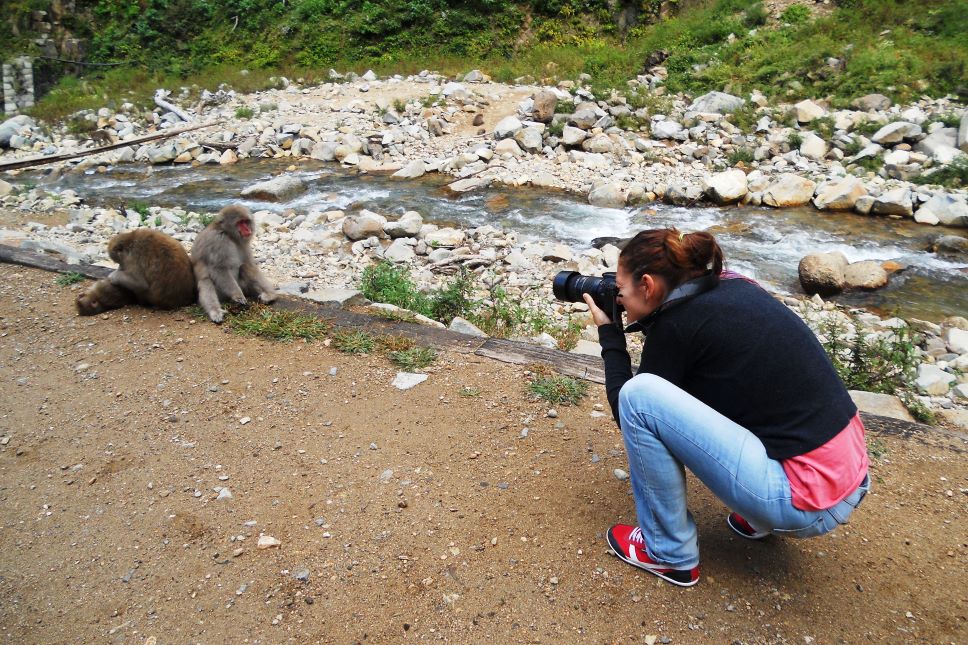
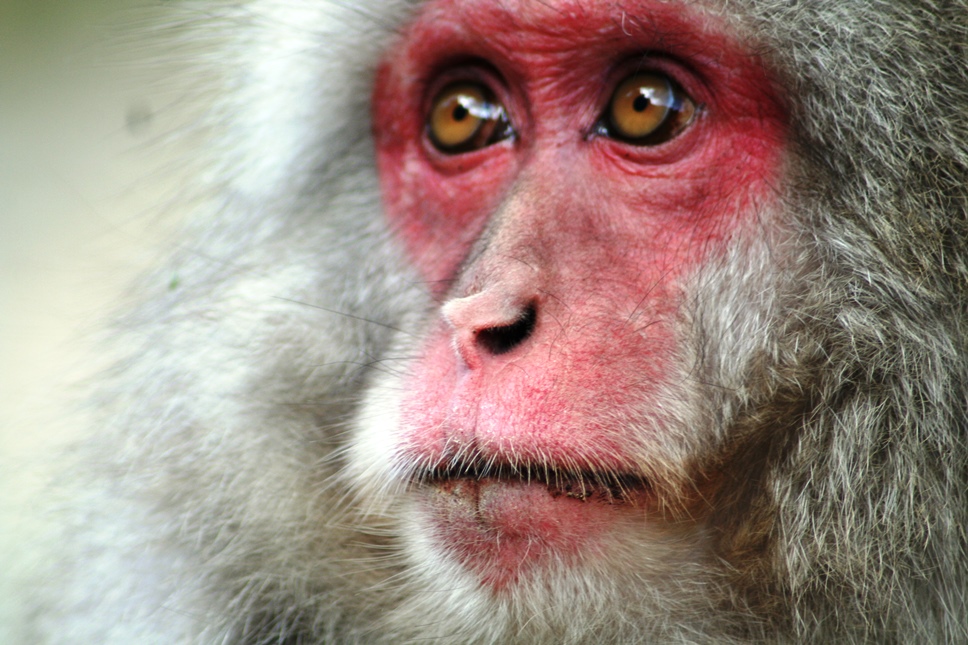
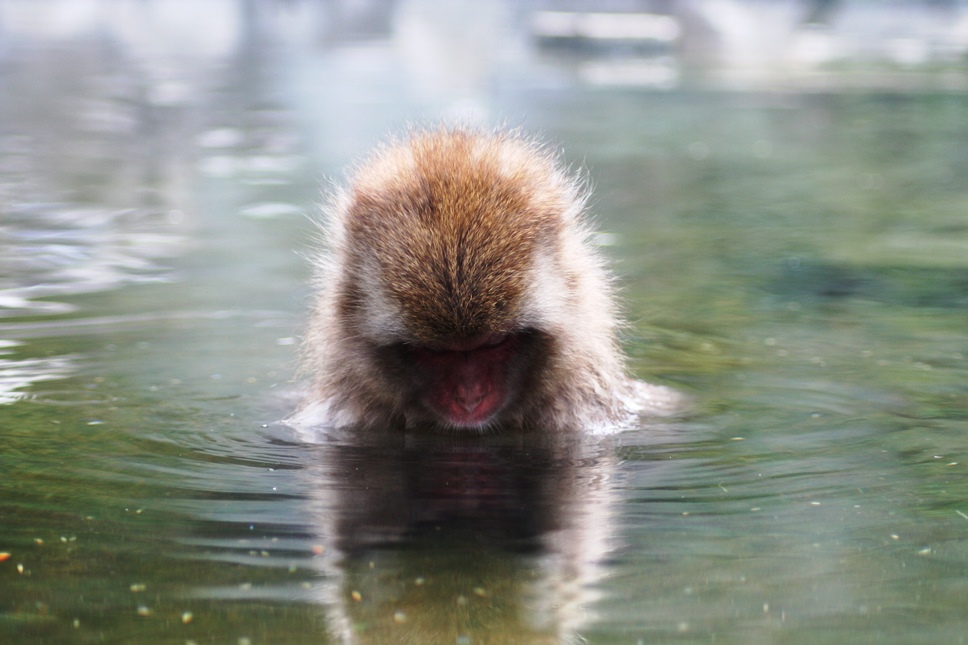
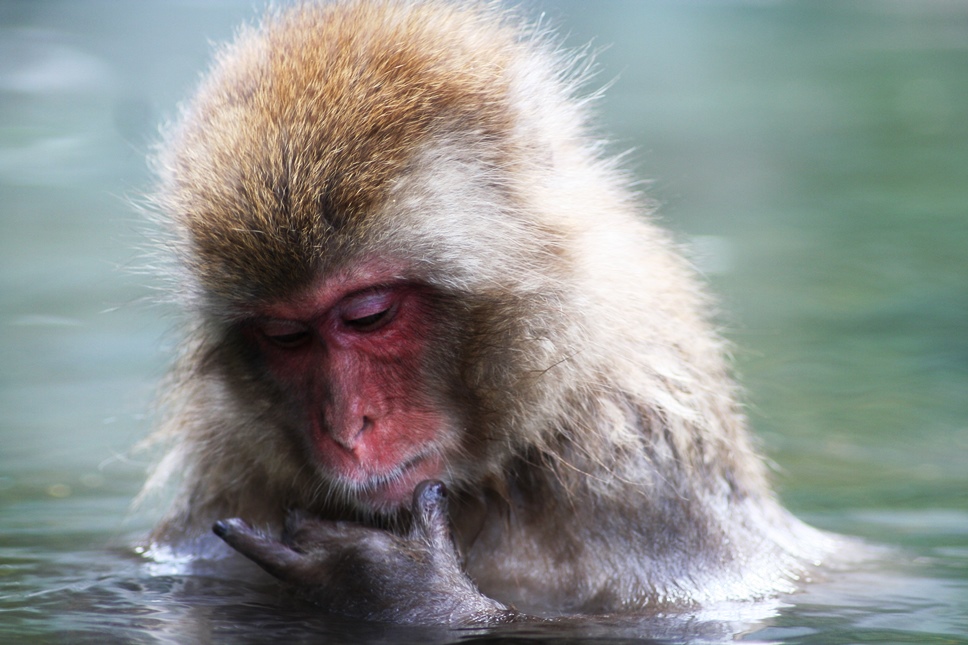

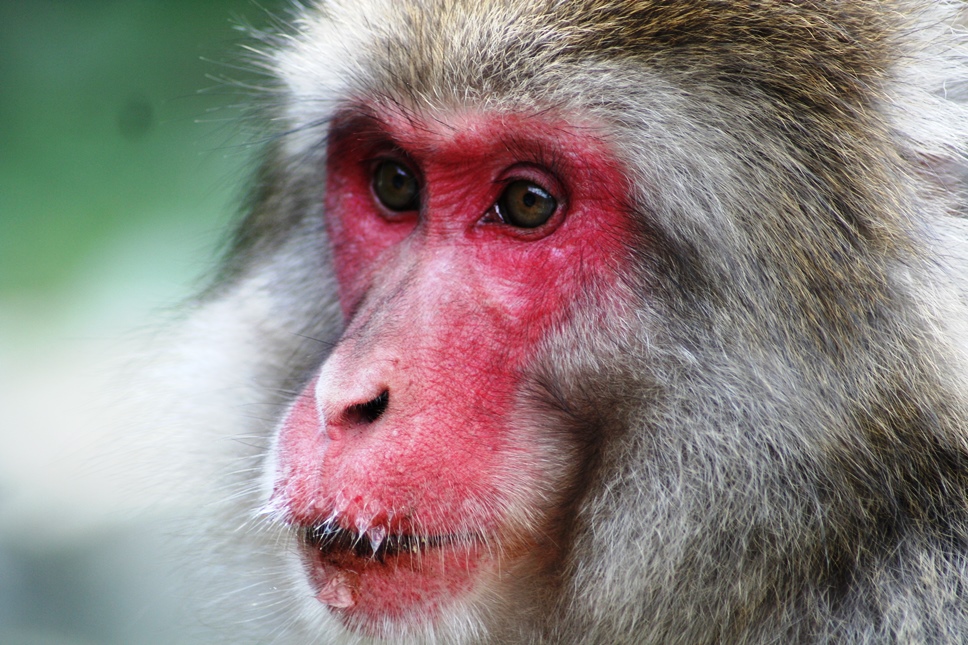
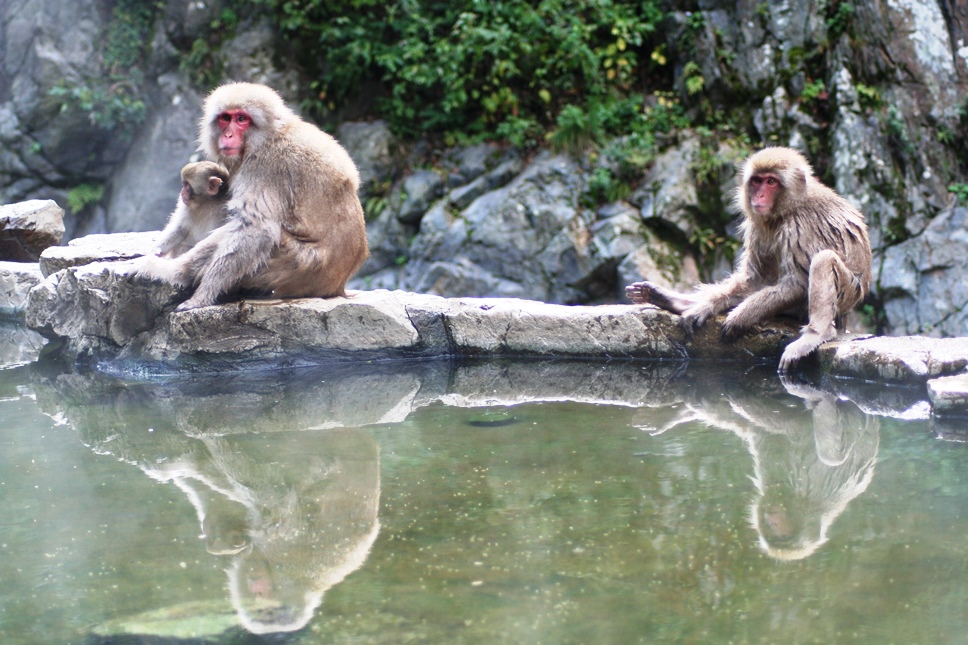
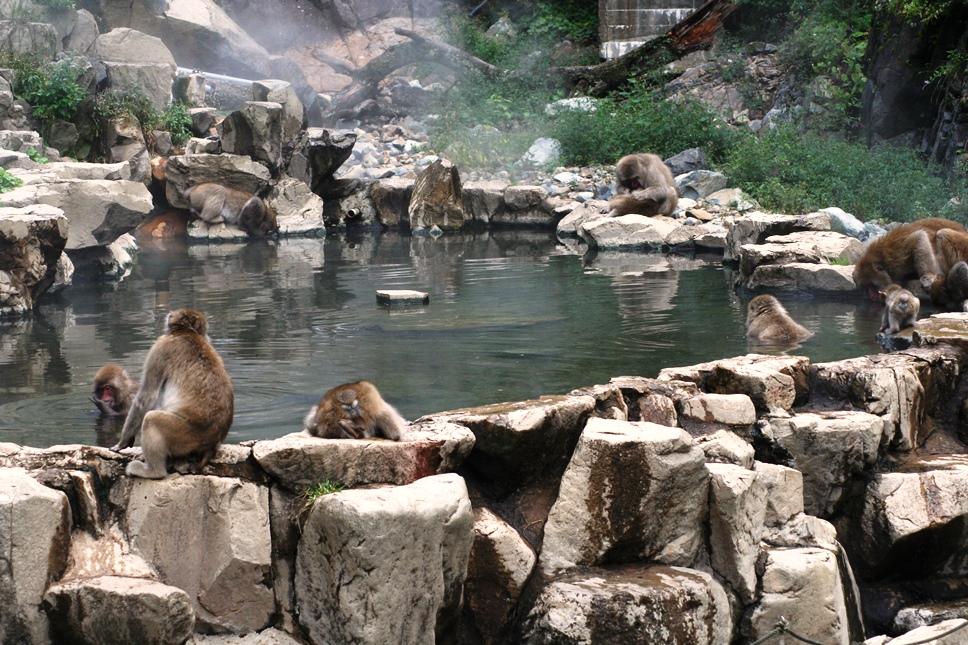
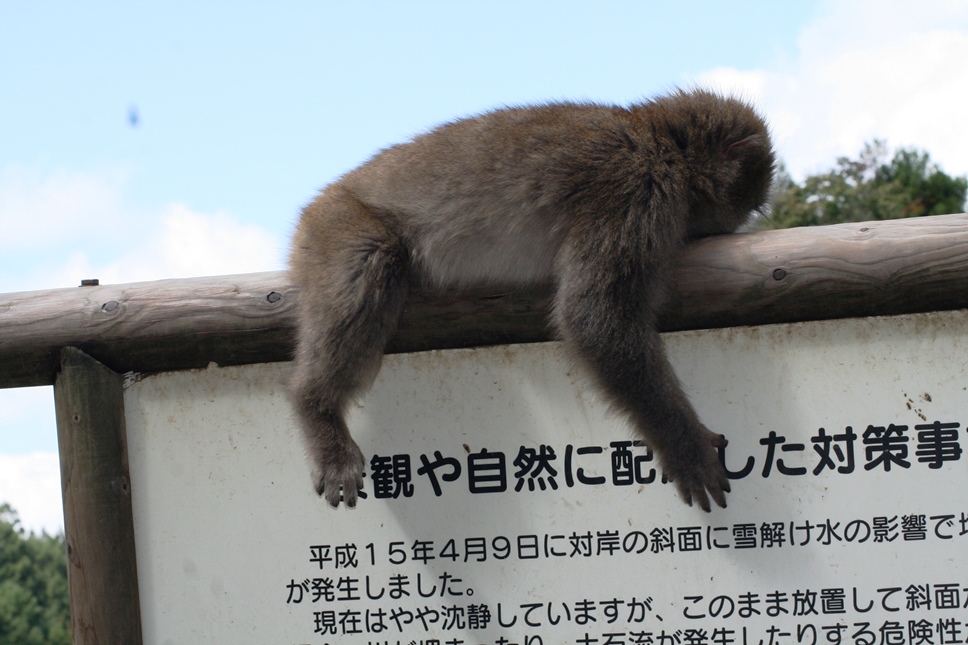
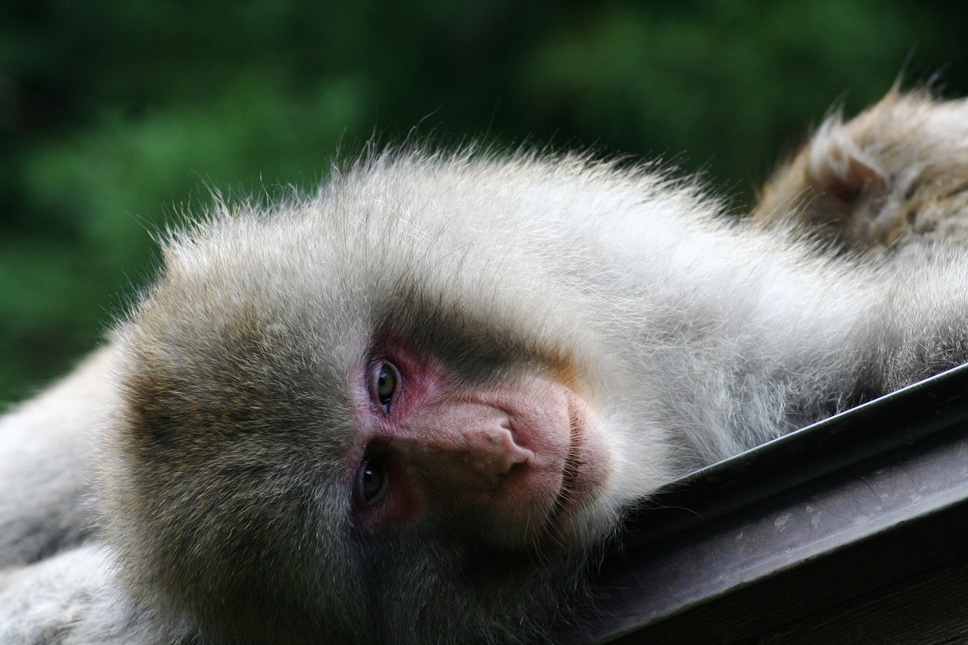
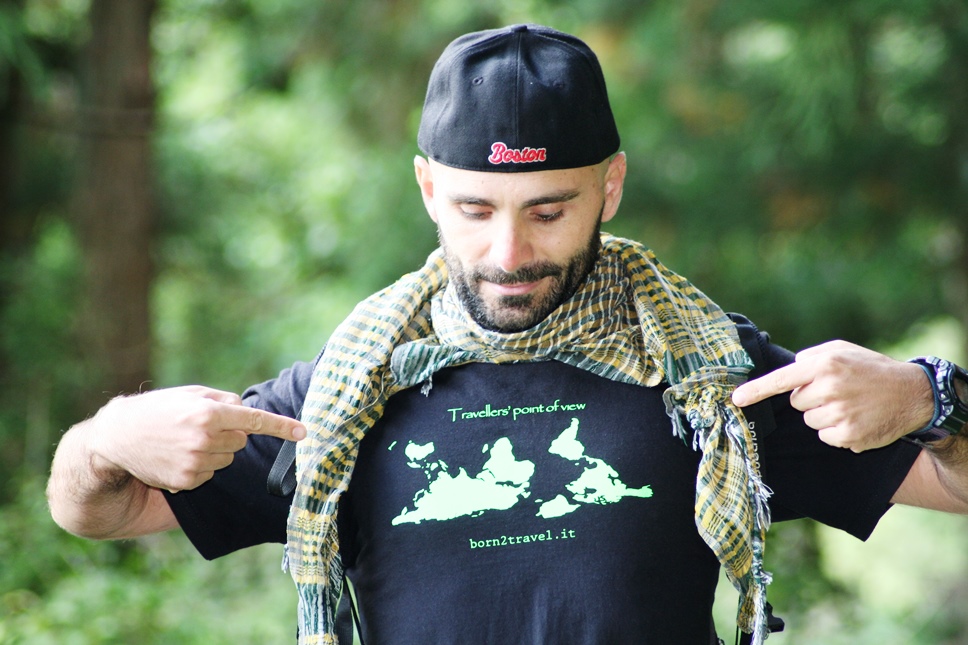
Not far away is the Kaminaridaki waterfall, it is not known at all in fact no bus takes you there, it can only be reached by car and the funny thing is that we can even pass under its most bursting water flow, we see it right from the its interior.
Time to relax in a traditional onsen!
The onsen are hot pools of thermal water, men and women are separated and you enter completely naked.
After washing with soap and water I dive ... what a wonderful feeling! Soon comes a slender old woman and slowly dives ... then another and yet another ... ladies of all ages ... being there immersed in hot water with all these naked Japanese around, suddenly, it seemed to me the thing most natural in the world.
The real magic was yet to come ... shortly after we move outside in the middle of the forest. Naked in the forest in a warm pool ... the sounds of nature ... the steam all around ... a sense of absolute freedom ...
In Nagano we stop at the Zenco-Ji Temple. Here is the triad of Buddha Amida which however is not exposed to the public and nobody is said to have seen it for 1000 years.
Next to one of the altars, you go down a staircase to Okaidan, a gallery completely in the dark that symbolizes death and then rebirth, in fact: after having walked a corridor without the possibility of seeing anything, with the right hand attached to the wall, you get, at a certain point, to touch an object or the key of salvation. After turning it, continue for a few more meters and you can see the light: here is the rebirth.
At the exit there is a statue of Binzuru, a follower of Buddha; in some places it was very worn because tradition has it that the faithful touch it in correspondence with the diseased parts as hope of recovery.
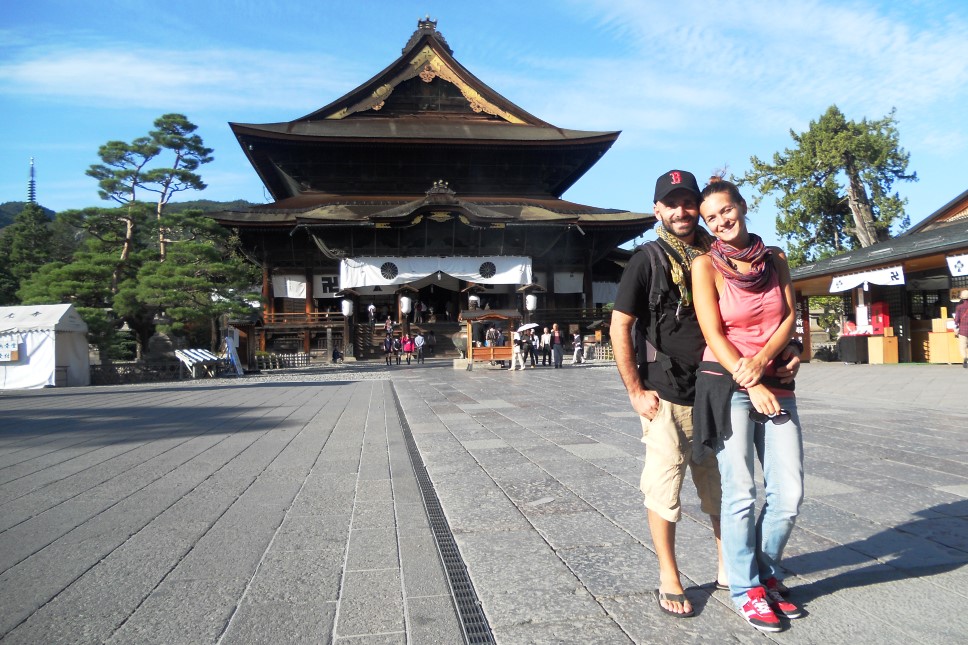
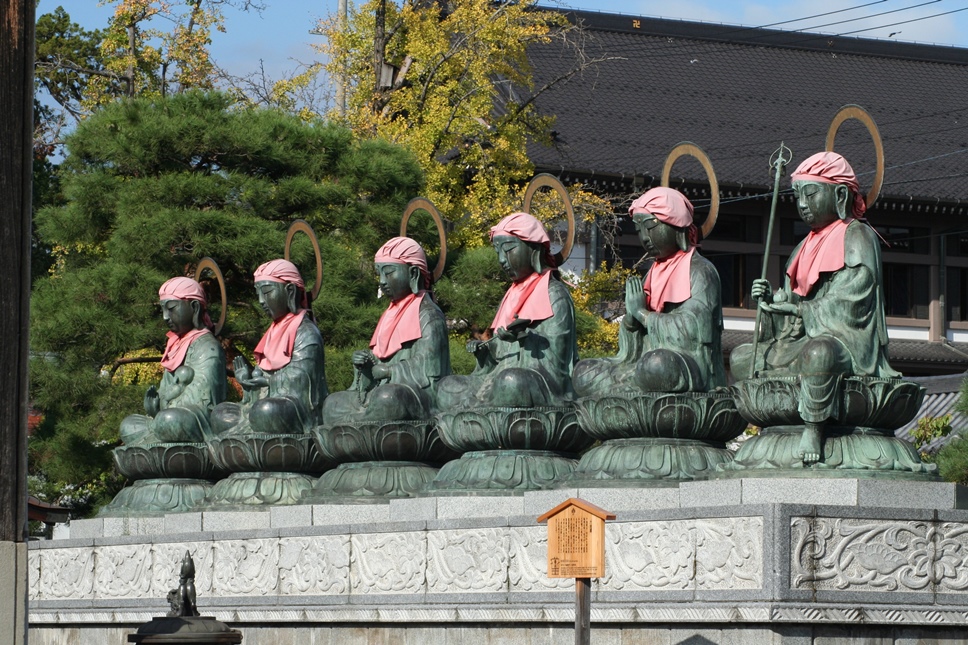
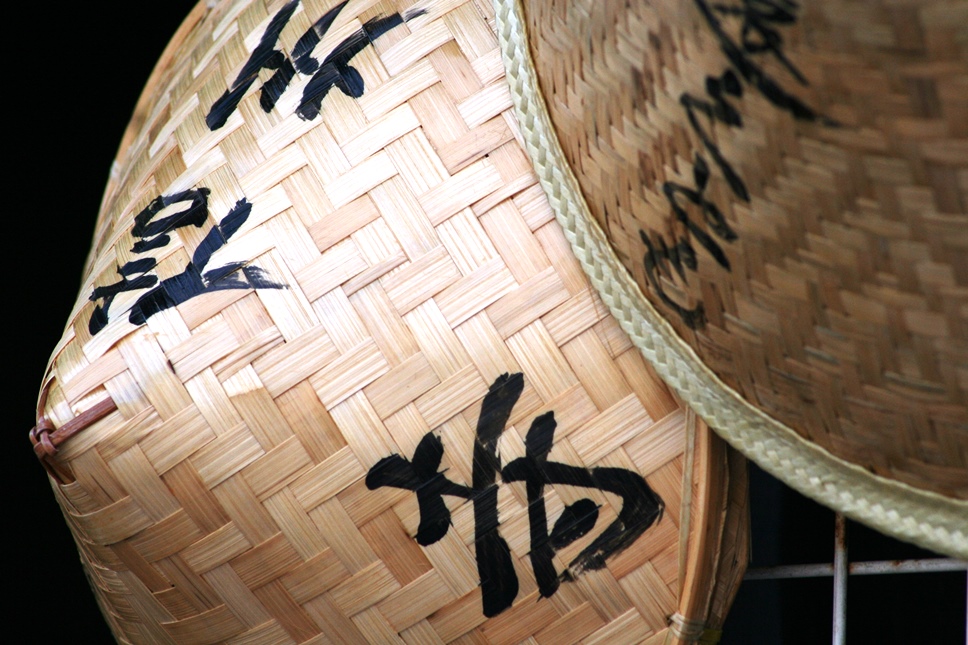
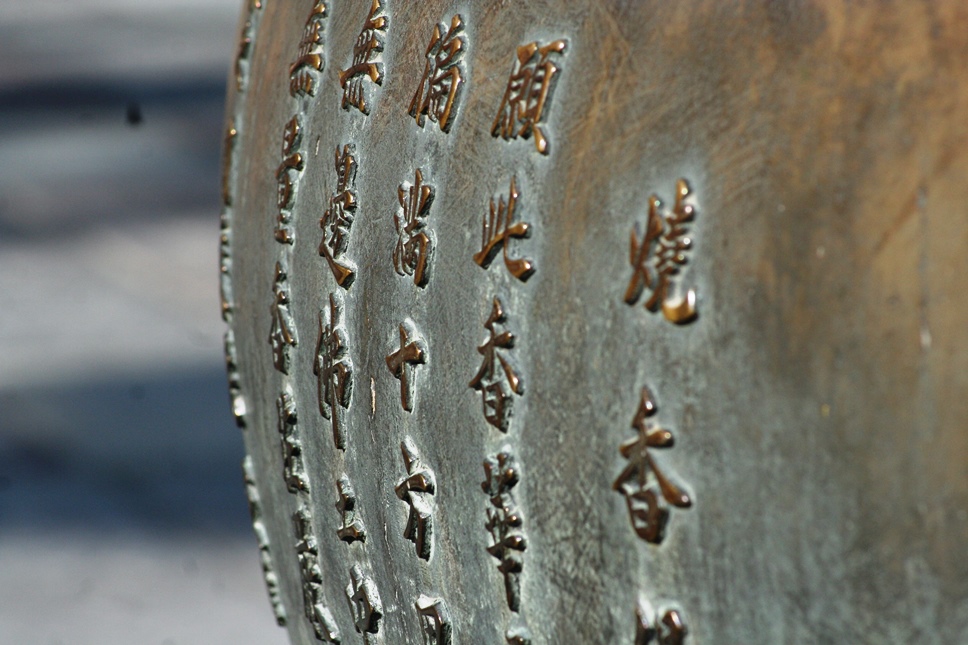
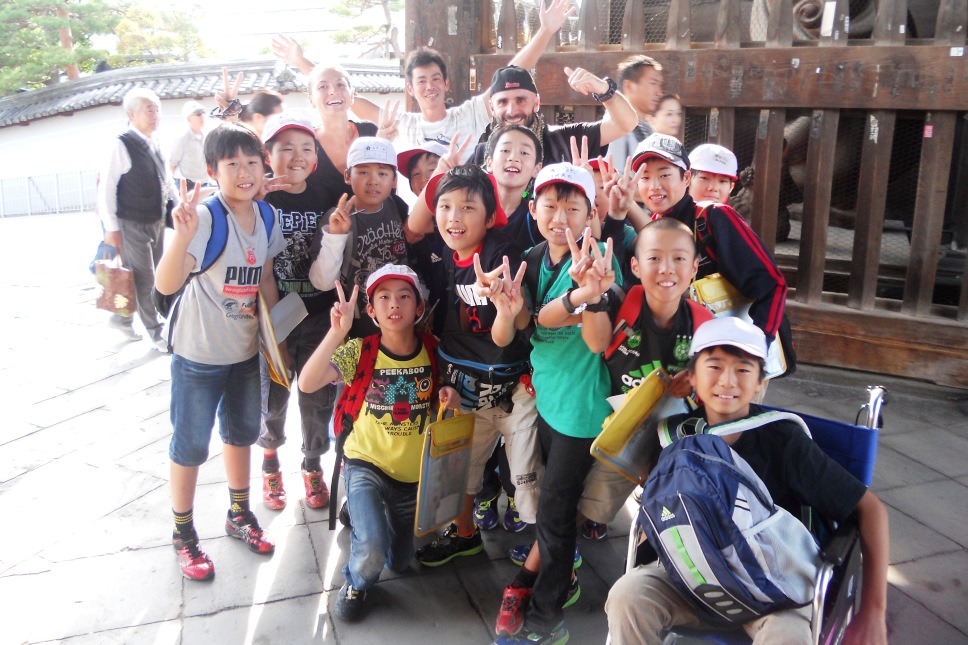
We leave very early this morning to reach this unknown village in northern Japan. We use four trains to get here, enchanting each time with Japanese professionalism and punctuality.
Along the comfortable train ride, while reading my book, I sometimes get lost in admiring the surrounding landscape that often changes.
From the 3000 meters of height of the beautiful Nagano we make a pit stop first in Takasaki then in Nigata and finally, to the north, we continue along the picturesque coast seeing some truly unexpected glimpses far from the traditional image of Japan.
We arrive in Tsuruoka, a town far from the tourist circuits where life flows calmly!
Haguro. One of the three peaks of Dewa Sanzan.
We follow what the tradition suggests and begin the climb passing under the majestic sacred bulls. A few more steps of old stone and here are the first Buddhist altars immersed in a sparkling nature ...
We pass next to the Gosu-No-To, a five-storey pagoda worn by bad weather that dates back to 1300 ... from there begins the long climb on hundreds of very steep steps.
We try to enjoy the wonderful landscape broken only by the "oni ci huà" (hello) of the various pilgrims wayfarers who, going up or down, met you along the way.
In a few hours we reach the summit of Haguro and suddenly it seems to find ourselves in an almost Tibetan landscape: countless Buddhist temples, monks in hardwood flip flops and faithful everywhere who pray before the many sacred simulacra by knotting paper prayers or playing tambourines and bells ...
Proviamo a rilassarci un po’ ma ben presto ci aspetta il percorso di ritorno! Altri 2446 gradini di fatica!
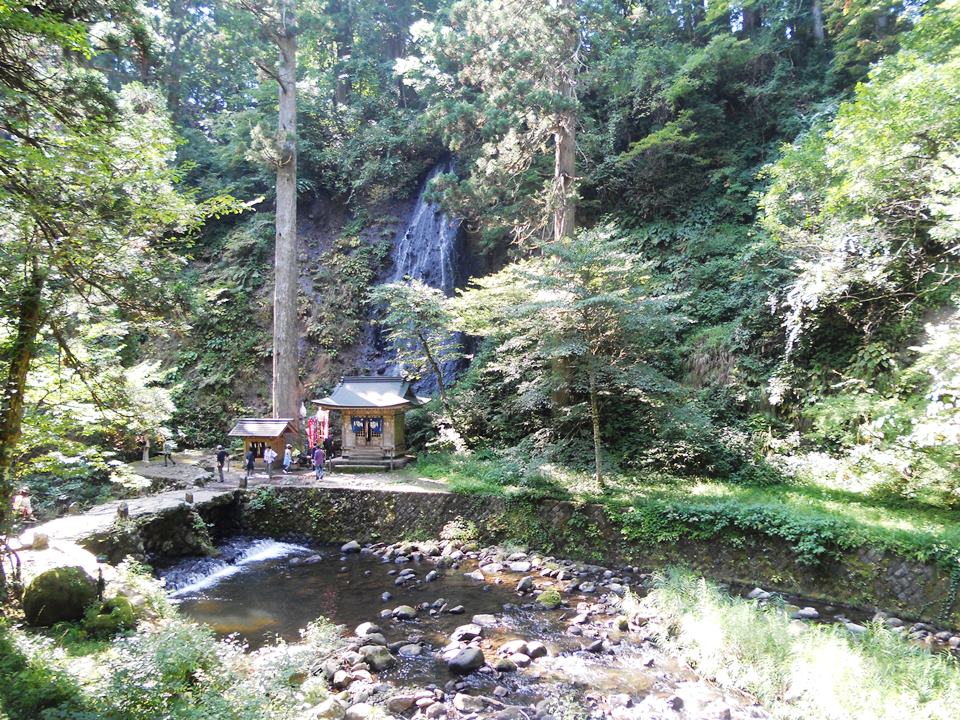
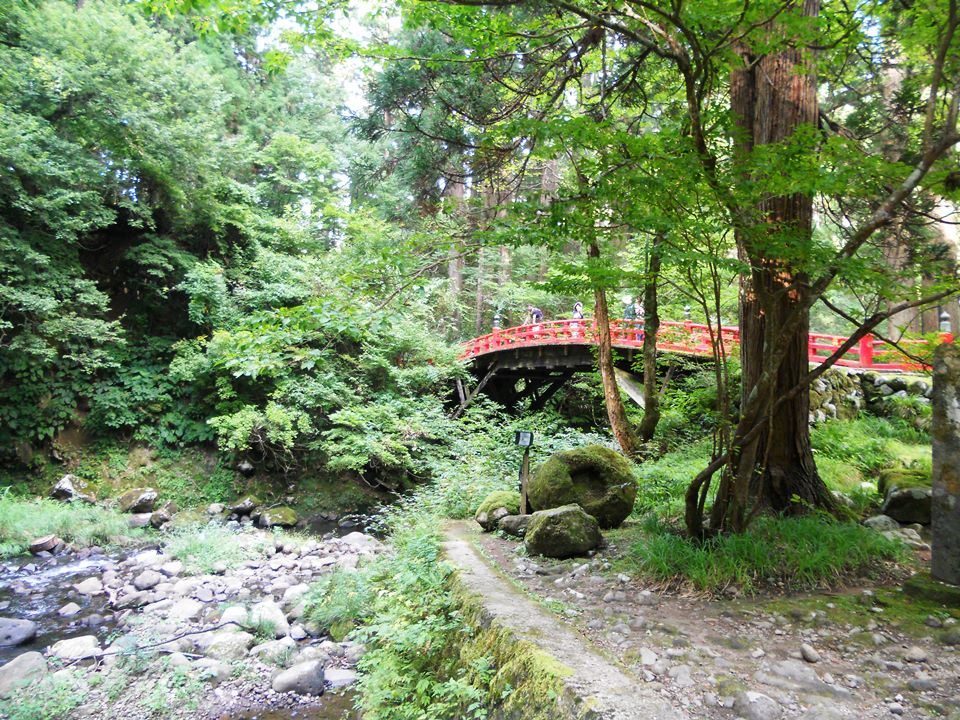
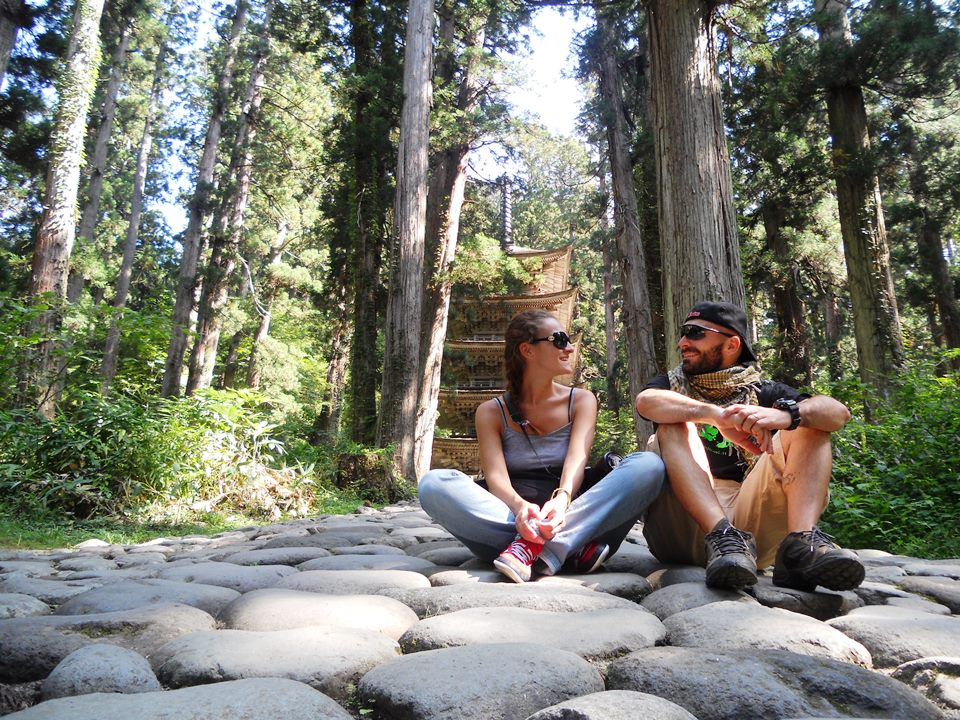
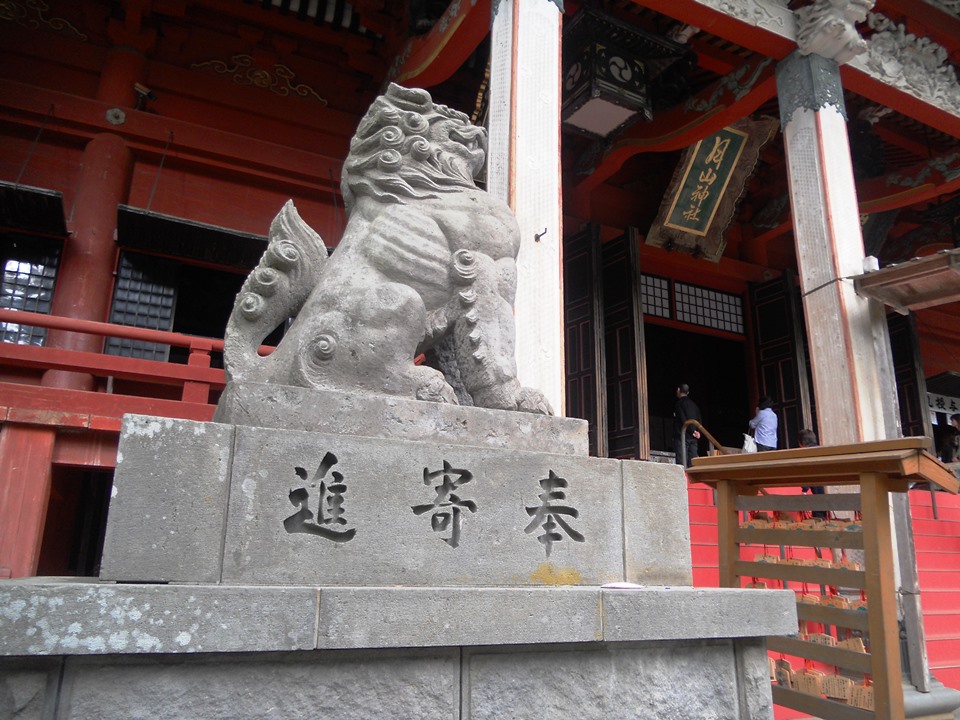
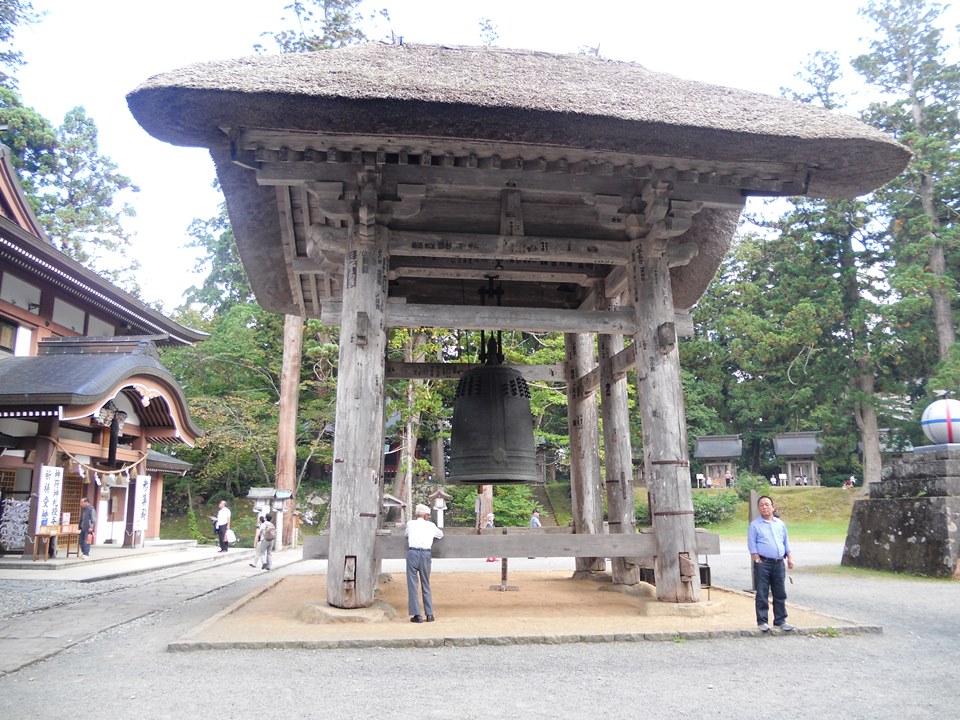
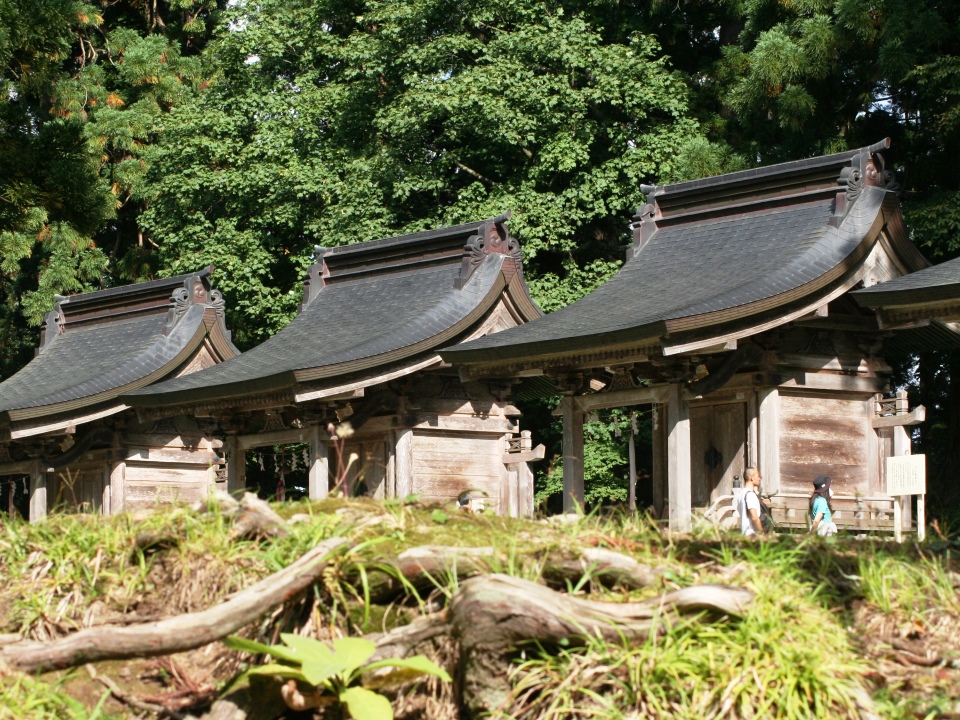
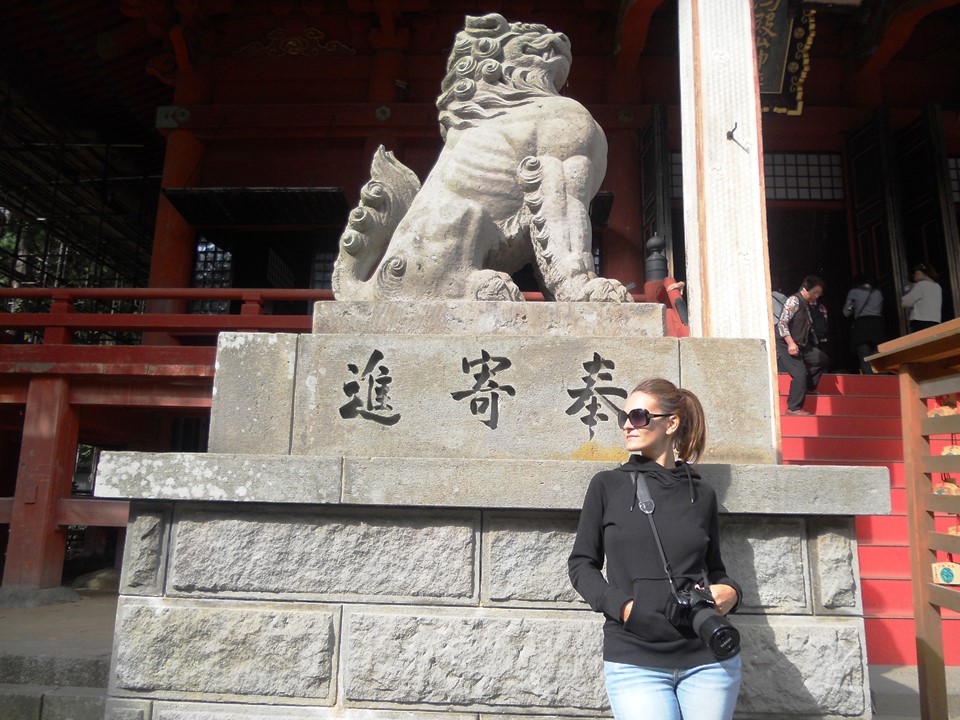
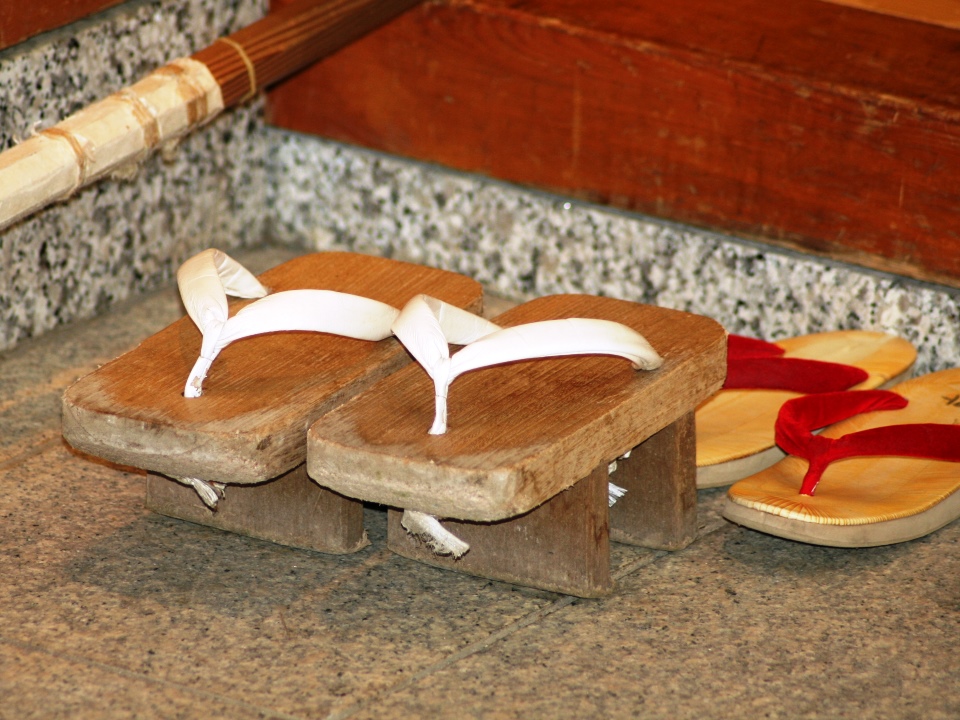
We cross another large part of Japan to reach the peaceful town of Nikko.
We travel almost all day but the transfer is so pleasant that it doesn't weigh us at all.
Wake up early in the morning to admire the beauty of this small town. We cross the traditional red bridge and climb a stairway between wise trees and damp moss. We climb the many steps in an unbelievable silence.
It is 08.30 and we are the only ones around!
We pass the main torii and find ourselves in front of various very suggestive Buddhist temples.
There is also the temple of the "three monkeys", famous all over the world, which depicts a great Buddhist precept, namely: do not feel evil, do not speak with evil and do not look with evil.
In another temple, two monks illustrate, with the use of two wooden sticks, the mystery of the "dragon's roar" or a stronger and longer echo when the two sticks were made to beat near the dragon's painting.
Before leaving Nikko we go in search of the "path of stones". Dozens and dozens of statues depicting Buddha with red woolen hats and pink tunic representing the protectors of travelers and children; they are lined up next to each other and it is said that the outward journey never matches that of the return due to the so-called "forest ghost" that hides, a ghost that appears in the form of a statue.
The walk along the path with the statues illuminated by the sun that makes the moss shine above them and the river on the other side makes the place far from time: it seems to have entered a fairytale book.








We leave the beautiful Nikko and on board our latest Shinkansen we elegantly enter Tokyo.
Tokyo fascinates us! Already as we approached its suburbs and the first skyscrapers began to show themselves to our curious eyes I was repeating myself, as if to show me that I was not dreaming, but we were reaching the legendary Japanese capital.
Tokyo, the web of subway and trains. Tokyo, a crossroads for new trends and strange characters. Tokyo, factory of robots with white shirts and black suits. Tokyo, the cradle of videogames and manga comics. Tokyo, travelers dream!
We stay at the "Yadoya Guesthouse", a small hostel that immediately won us over thanks to its own small "family"!
Mari, one of the owners of the hostel, asked us a few days ago if we could prepare something typically Italian in view of the weekly supportive evening.
We certainly could not miss such an opportunity and, having sent the shopping list, we immediately set to work to prepare 2 kg of carbonara for 25 hungry Japanese people.
The evening is a blockbuster! Everyone eats happily! At one point: silence in the classroom, the wise Aki takes the floor and while welcoming us to Tokyo, a cake with a chocolate plate “Magically and Stefy. Just married ”with two small lit candles and one larger one off!
The Japanese tradition has it that the two little ones symbolize our individuality while the long one our union. The couple turns off the small ones and then turns on the largest: start of the journey together.
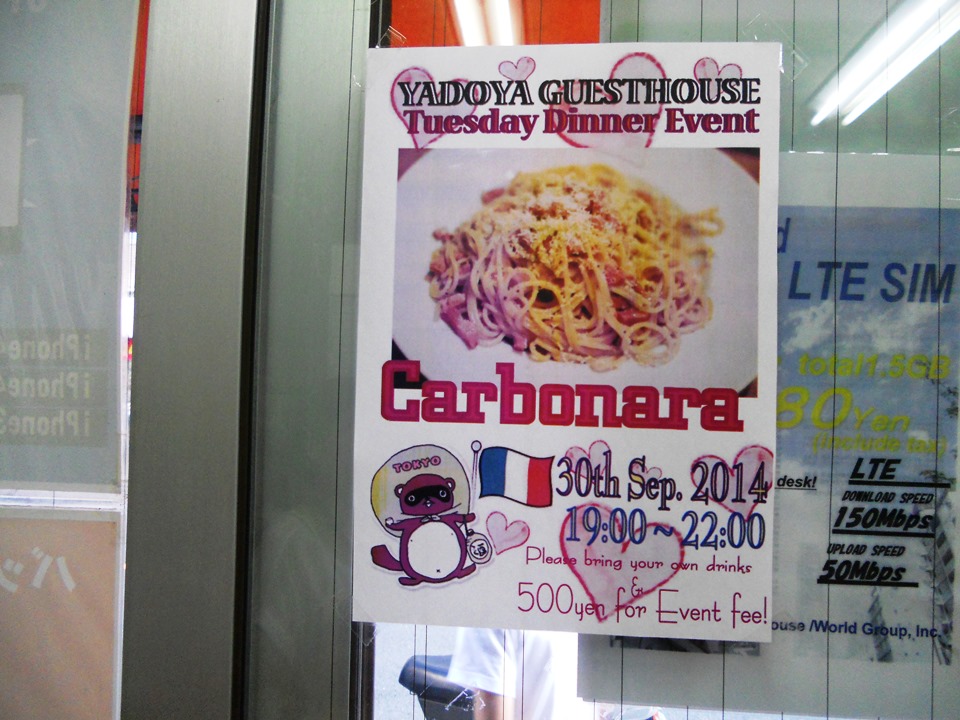
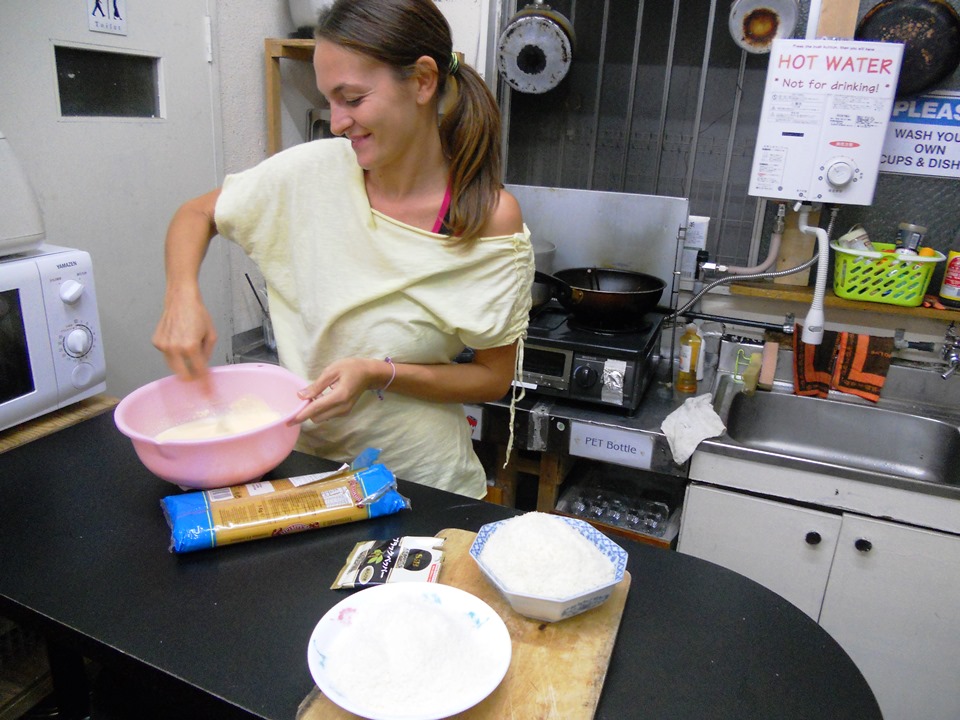
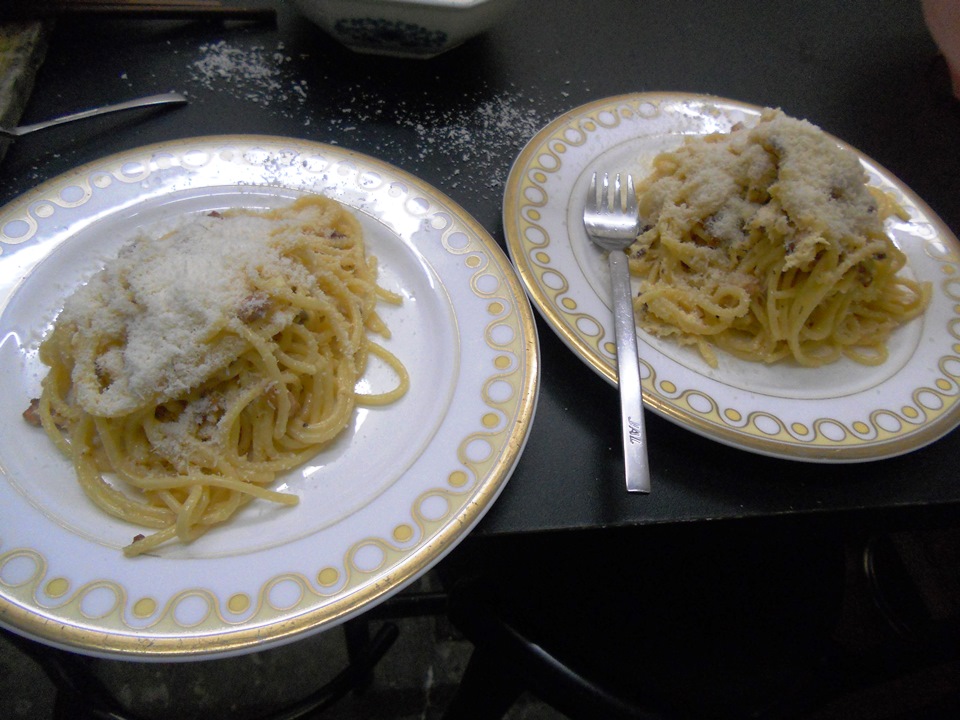
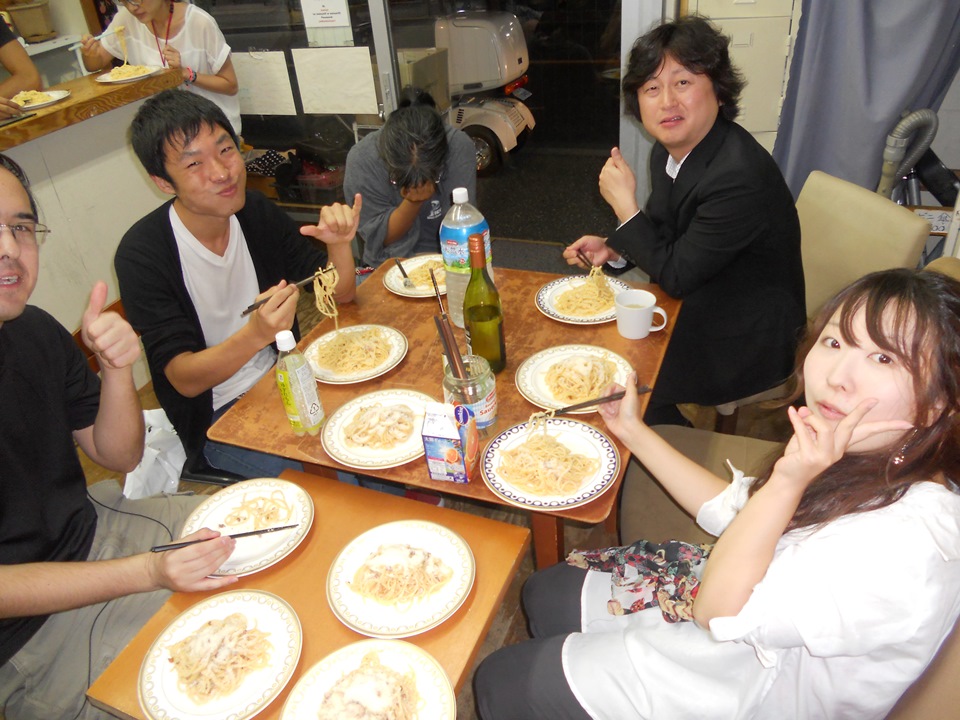
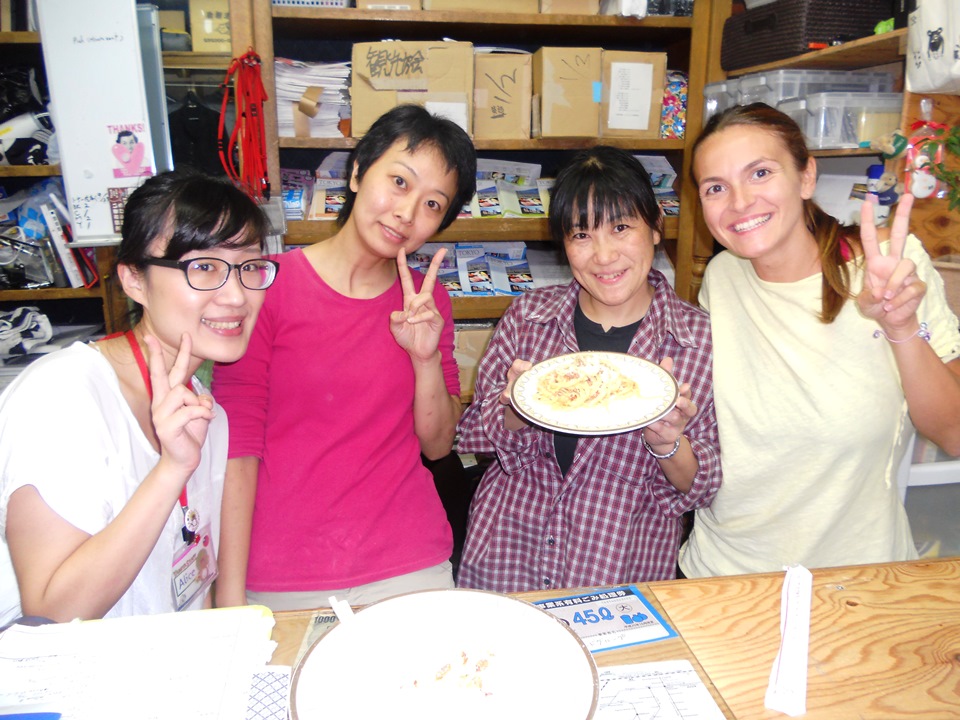
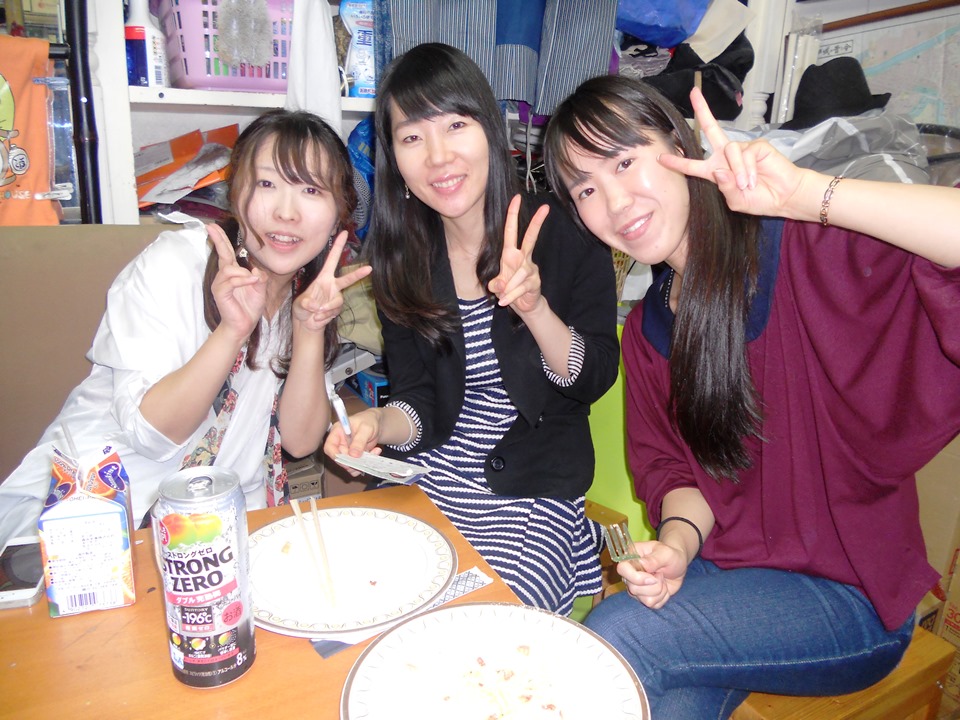
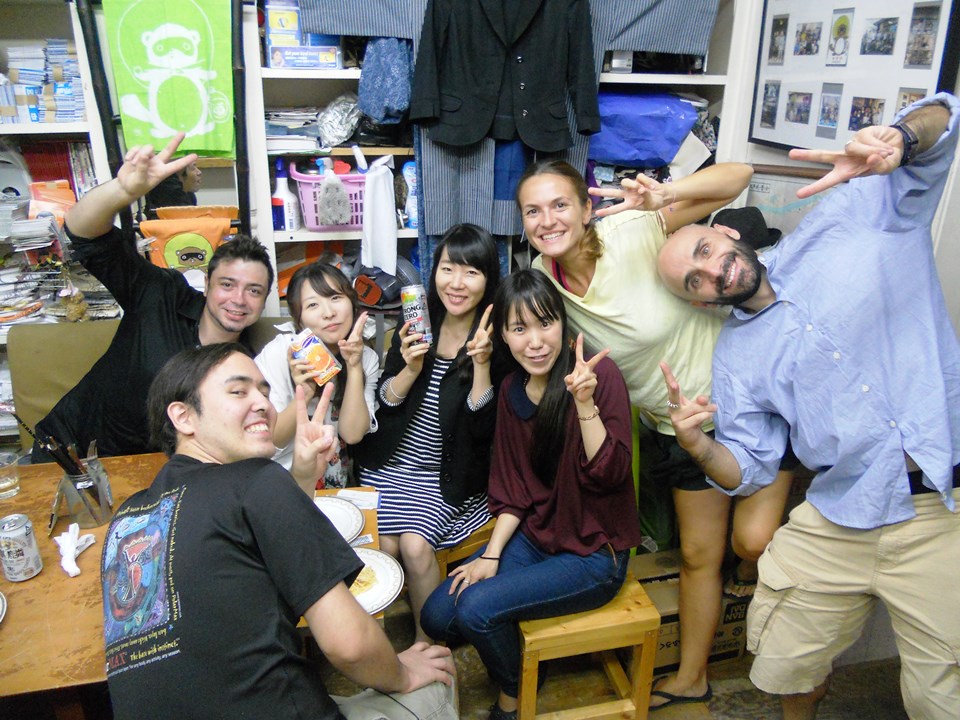
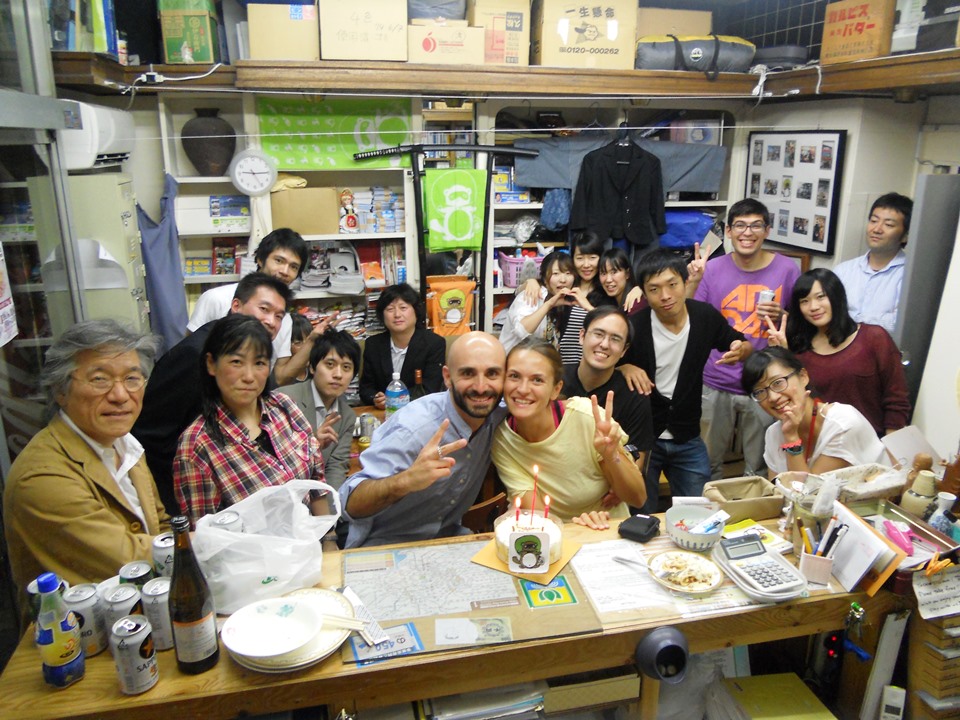
We reach Shinjuku by metro, an area famous for street fashion and second-hand clothing stores.
On the narrow streets with colorful signs and immense ideograms, we meet characters of all kinds ... it's just the beginning.
We change area and air: we are in Shibuya. As soon as we leave the subway station we find ourselves in an impressive traffic jam of people! This is the most crowded intersection in the world! It is said that the road is crossed by 100,000 people per hour!
It is very suggestive to admire that swarm of people come to life as the green lights go off and then disperse and thin out soon after.
In a small clearing stands the proud statue of a dog: it is the legendary Hachiko! Faithful Akita who waited every day for his master to arrive from the station. One day Professor Hidesaburo Ueno no longer appeared from that exit of the station. Hachiko, for eleven years, returned every day to that place to meet his master. He could not have known that the professor had passed away from a heart attack and would never return.
It was 1925 and this story moved all of Japan as well as inspiring Hollywood with a wonderful film of the same name with Richard Gere.
Dominating the whole scene there is the majestic "Shibuya 109", a large shopping center where Tokyo teenagers dictate the new fashions of the whole country; it is said that all Japanese fashion trends start here!
An absurd place! Orders with shoes and unlikely looks that mingled with mannequins for the robotic ways in which they went around their products screaming annoying litanies that almost scared you.
Harajuku. Teenagers dressed as manga, shops that sell every oddity but we have to go back to the hostel to rest for a while: tomorrow ... in fact, in a few hours the early rising awaits us to attend the fish auction!
Tsukiji. We wander around the port area until 02.50 in the morning. It is not very easy to access this reserved area of the port of Tokyo and only a few are allowed. That's why at three in the morning we are already in line for the entrance. There are already about twenty people in front of us.
An hour later we are inside! We wear a fluorescent yellow jacket and await the call.
We can only enter at 5.30 and here is a flood of giant tuna, just caught and immediately frozen.
Many potential buyers feel the big fish with large hooks, others make a cut on the back to see the color of the meat and ten minutes later the auction begins.
A little man climbs onto a crate and, armed with paper and pen, begins to scream incomprehensible things for us ... The auction is open! The chant increases in tone and intensity and is now also accompanied by bells. The buyers, with a simple show of hands, take away tons and tons of magnificent bluefin tuna!
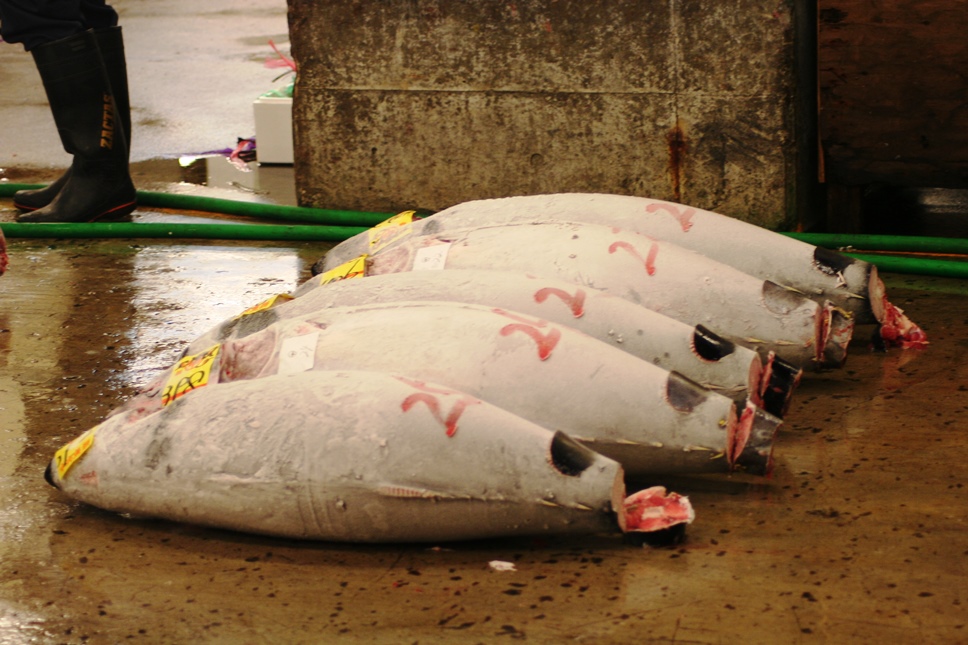
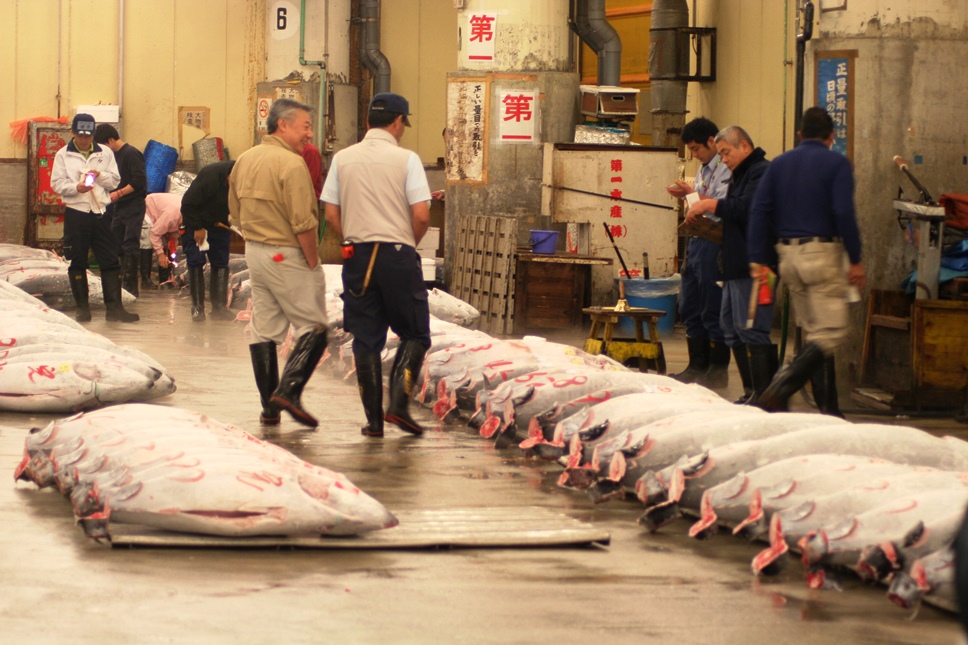
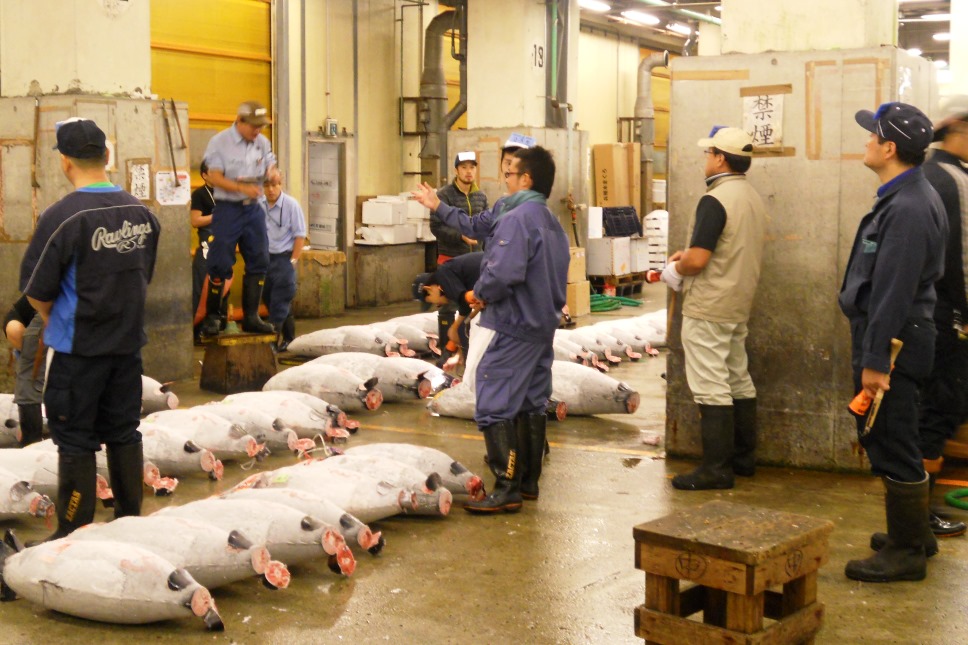
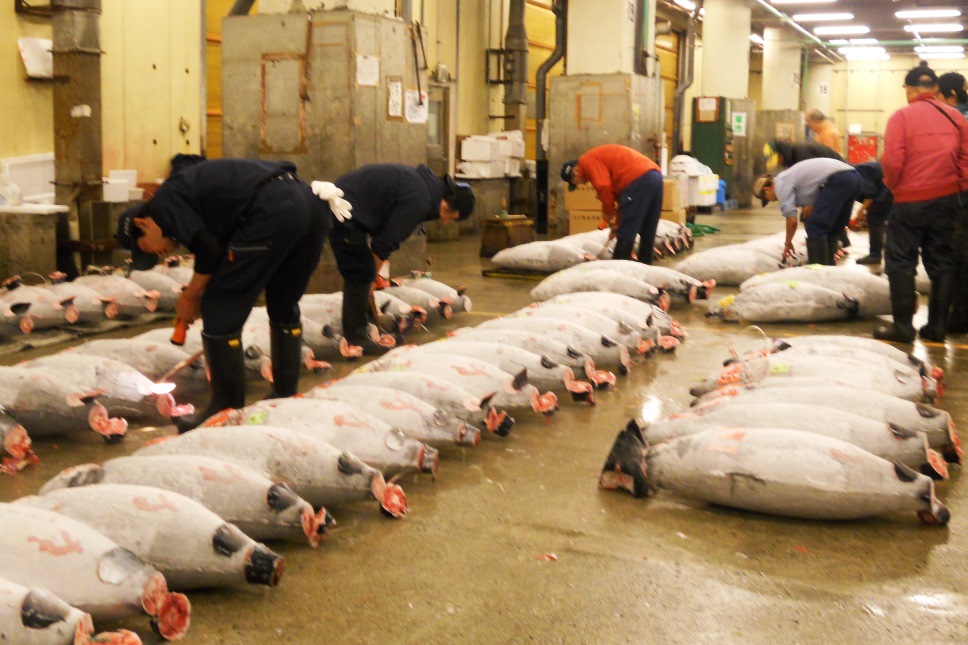
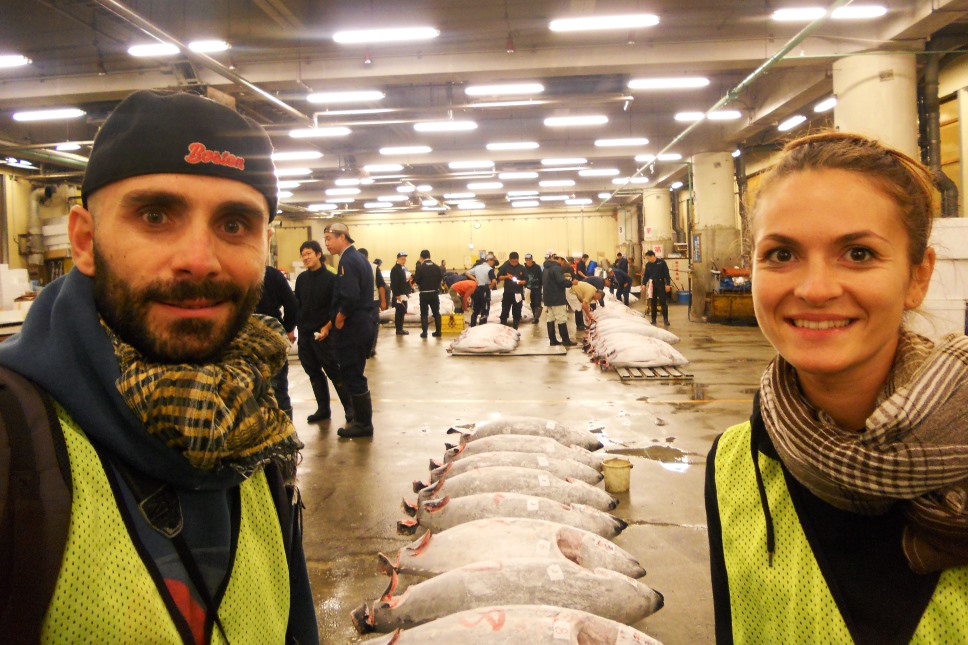
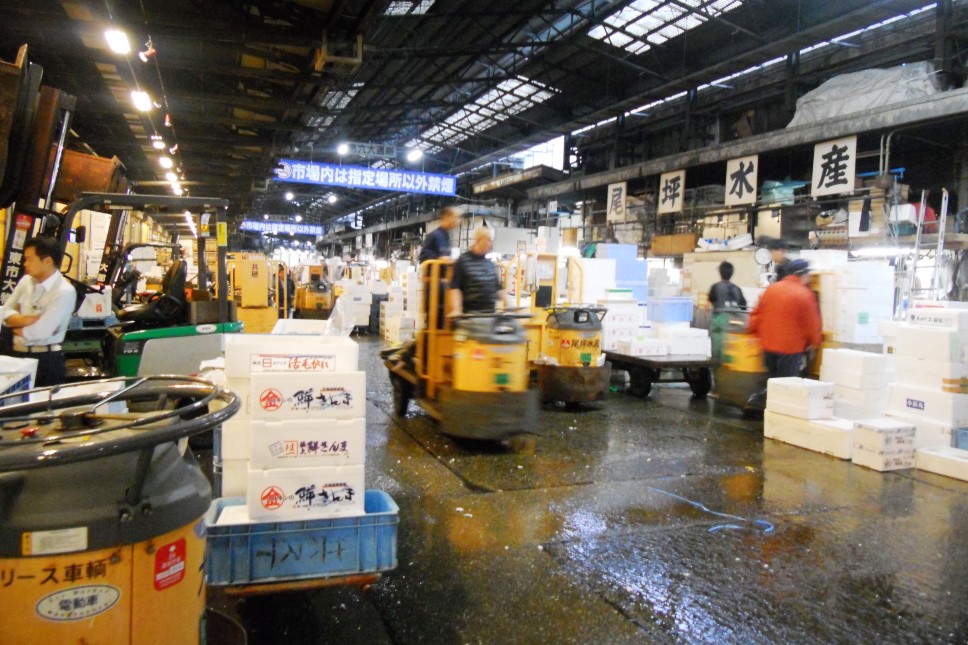
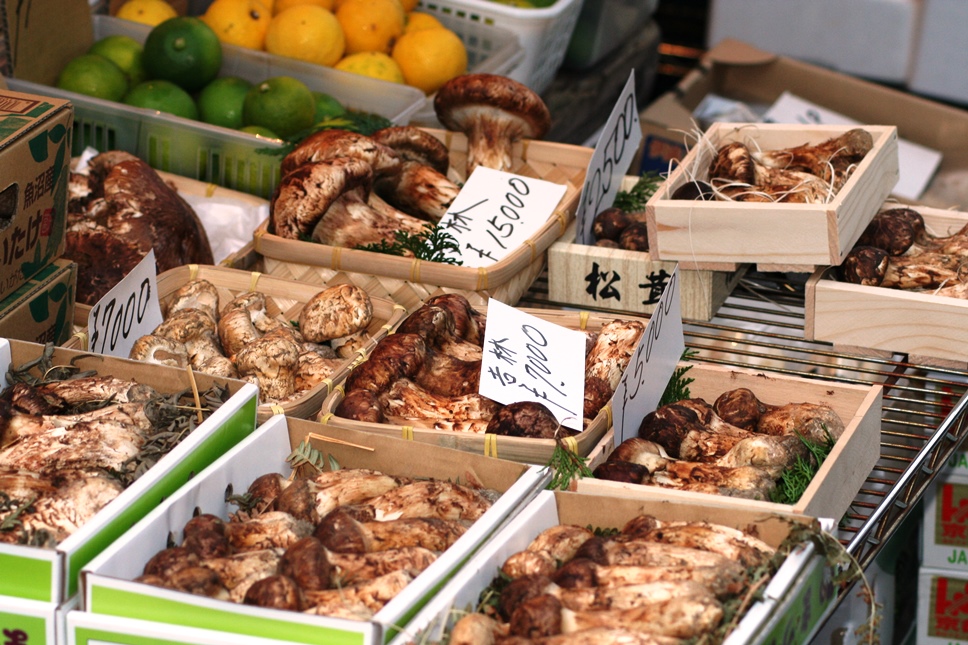
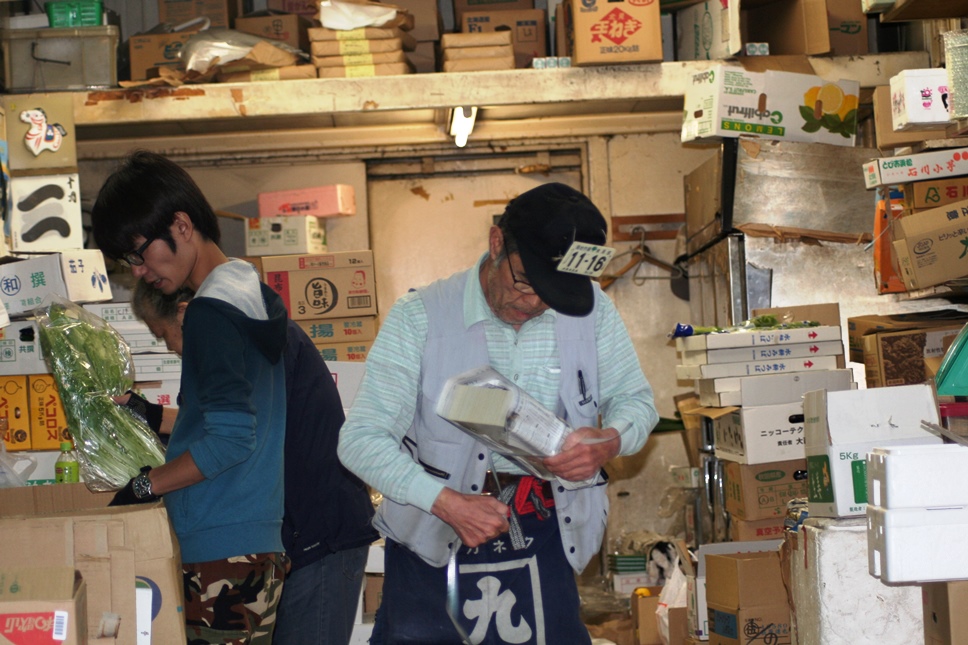
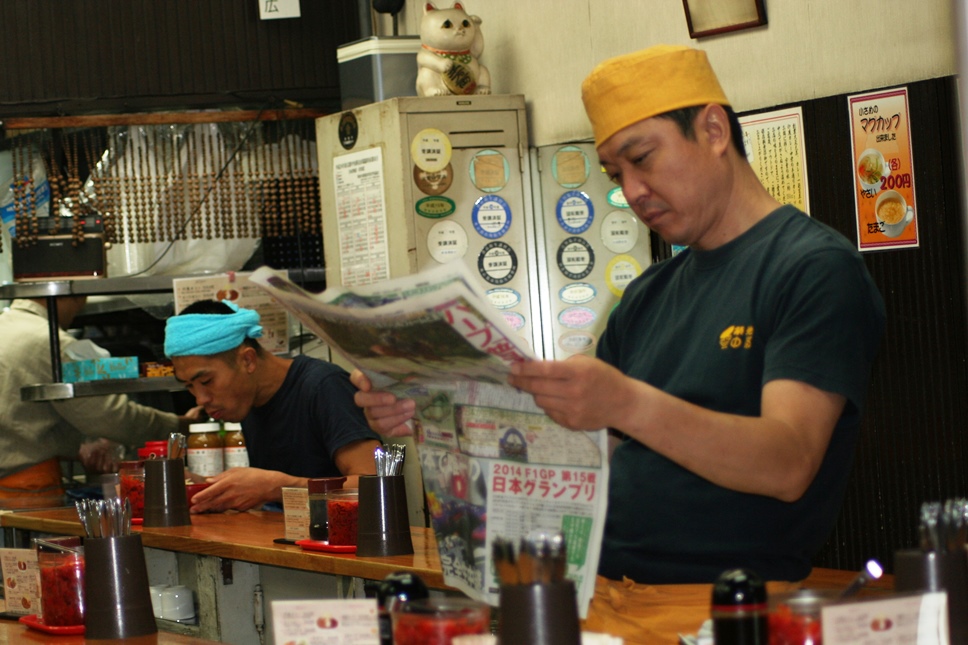
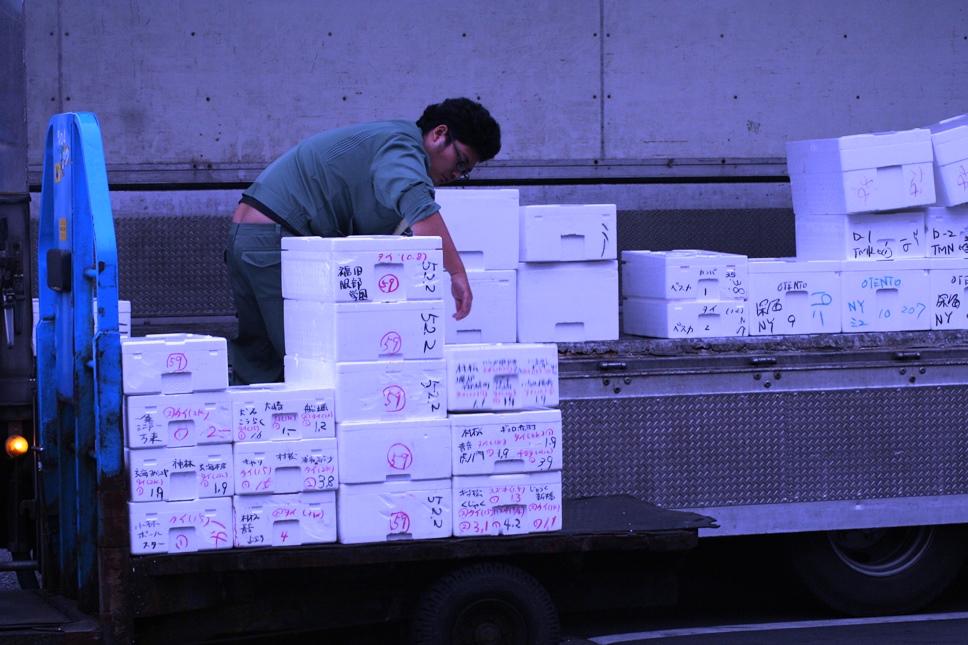
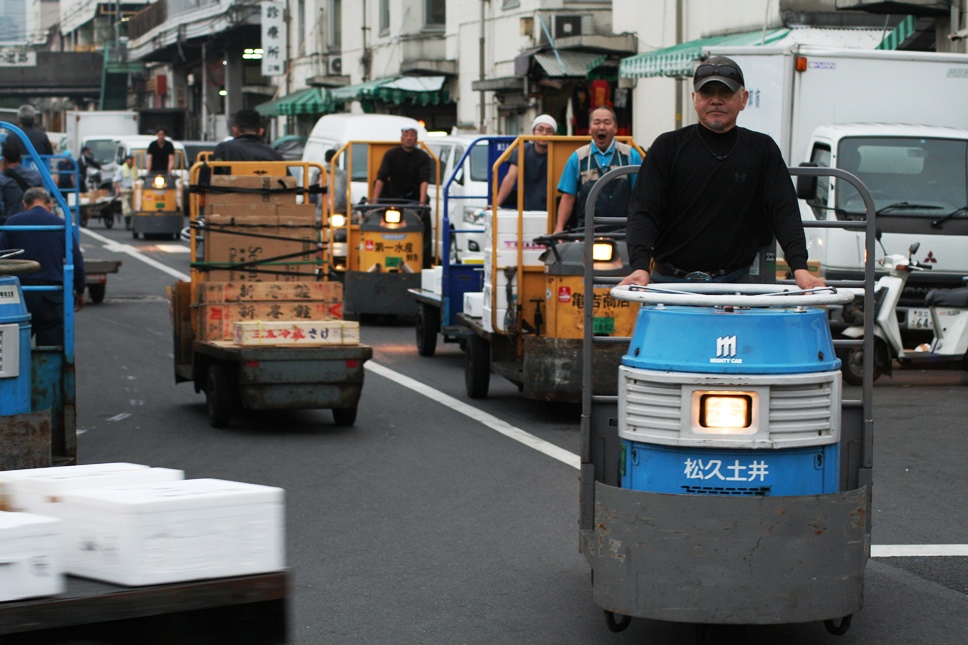
Ueno. Leaving the subway station, we blend in with the market crowd selling clothes, fresh fish, games ... A deafening mess especially because of the inevitable casinos scattered everywhere in the city!
Asakusa. After passing the "gate of the Thunder God Kaminarimon", you find yourself in a tunnel of "Nakamise-Dori" shops up to the entrance of the "Senso-Ji" temple with a large five-storey pagoda beside it. The temple houses the golden statue of Kammon (Buddhist goddess of mercy).
Akihabara. Also referred to as the "electric city", it is the super technological district of Tokyo.
We dive into a world of lights, colors and videogames among skyscrapers with gigantic manga and anime advertisements! What fun! We went in search of a camera to take manga-style photos! I even tried on different Sailor Moon cartoon clothes etc.! I didn't want to go away from there anymore!

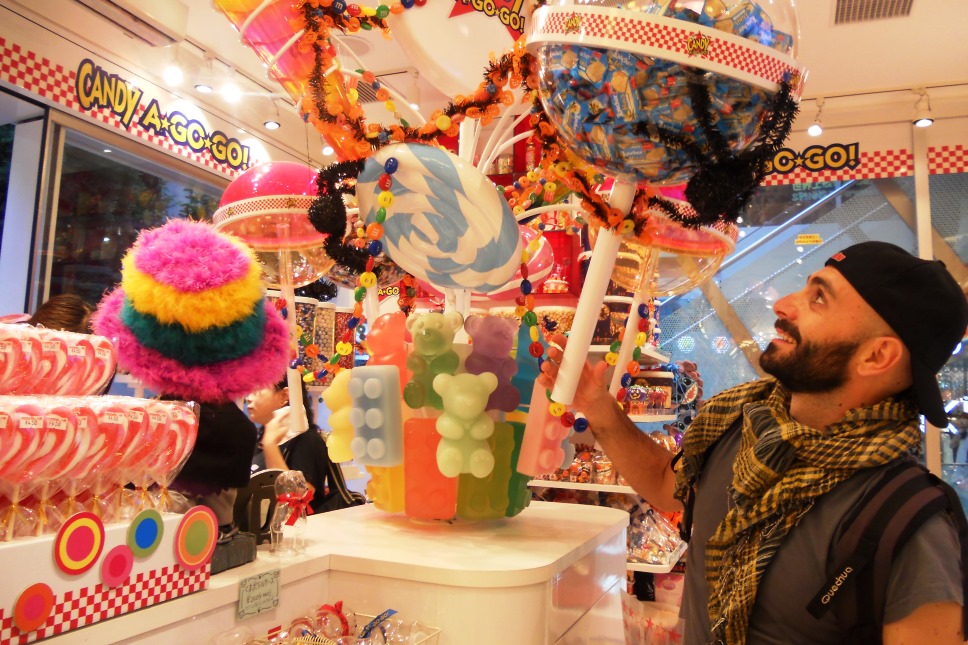
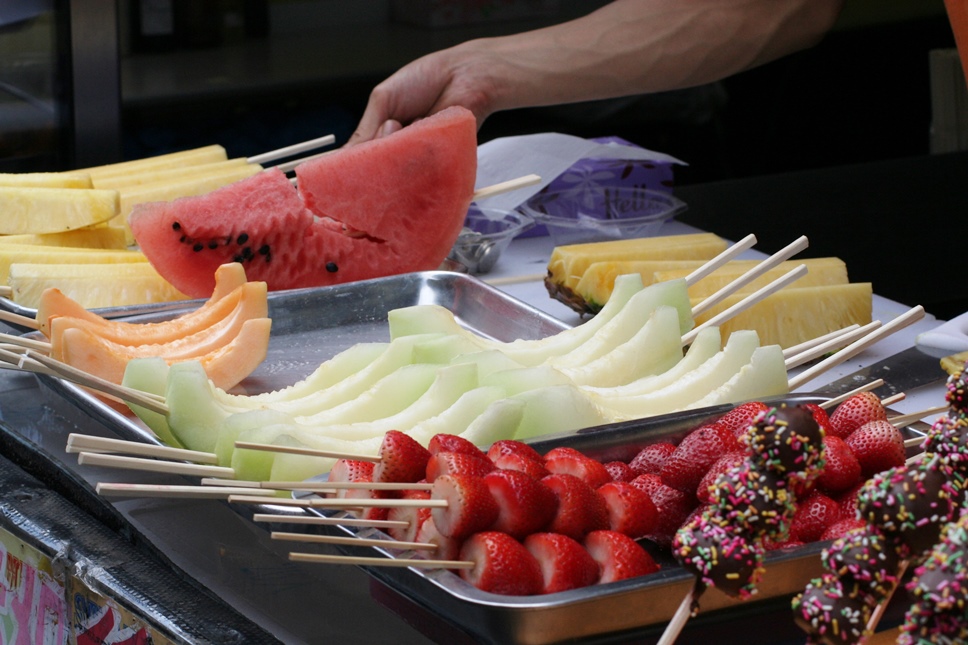
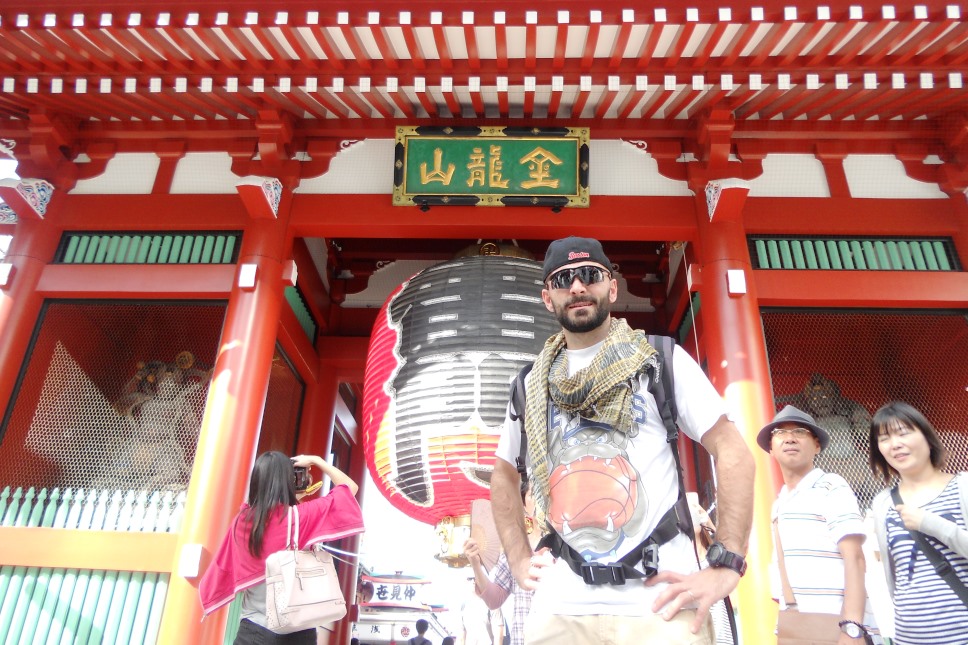
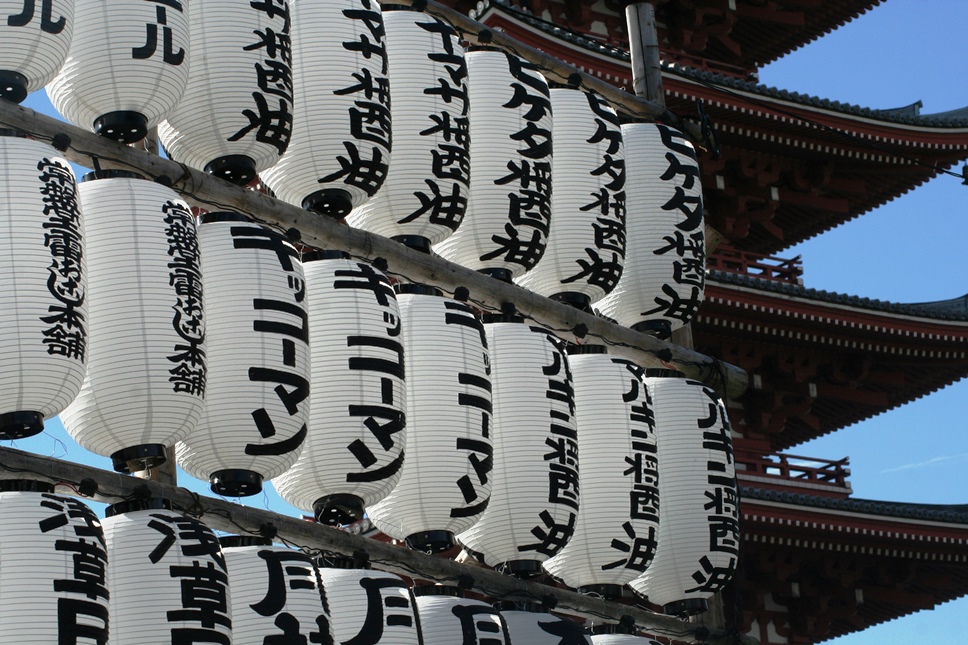
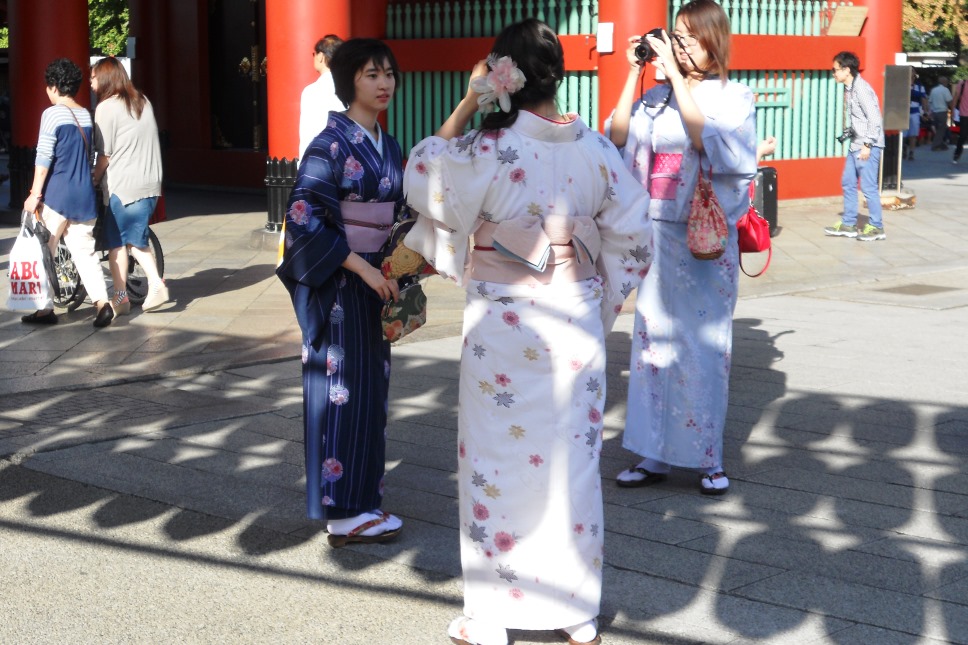
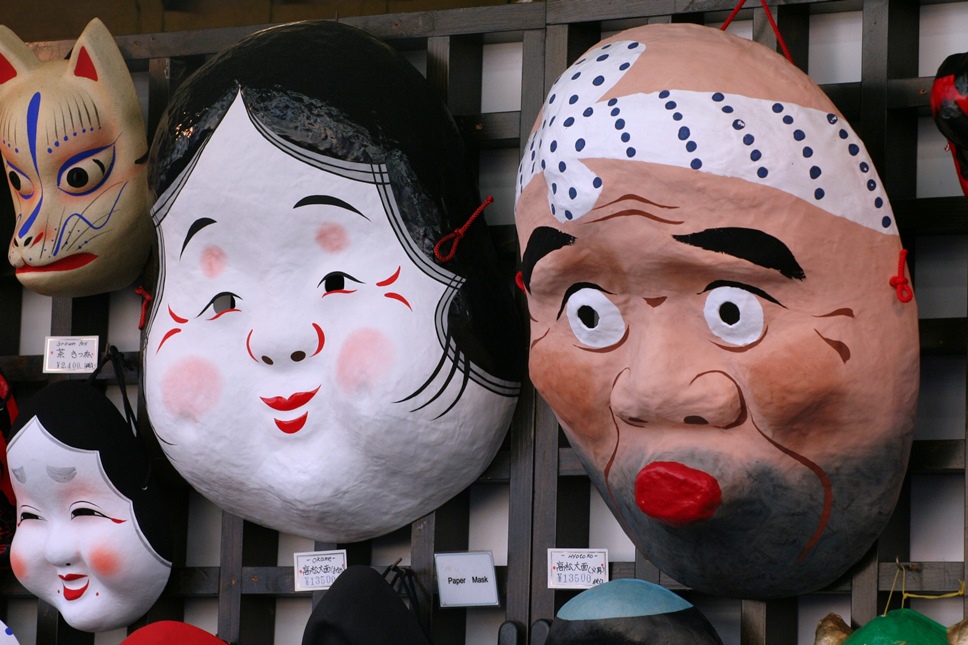
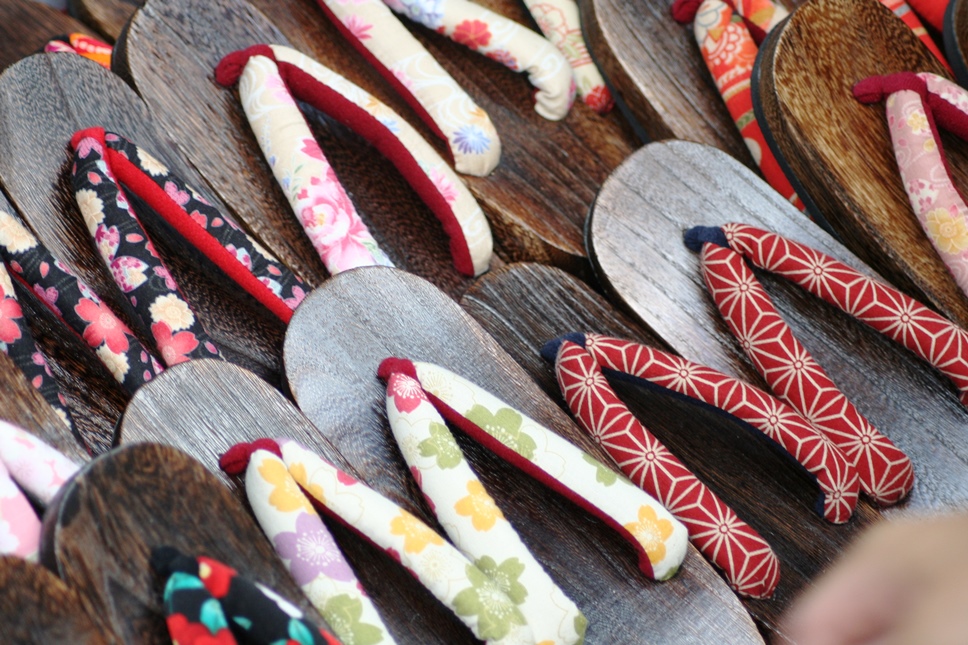
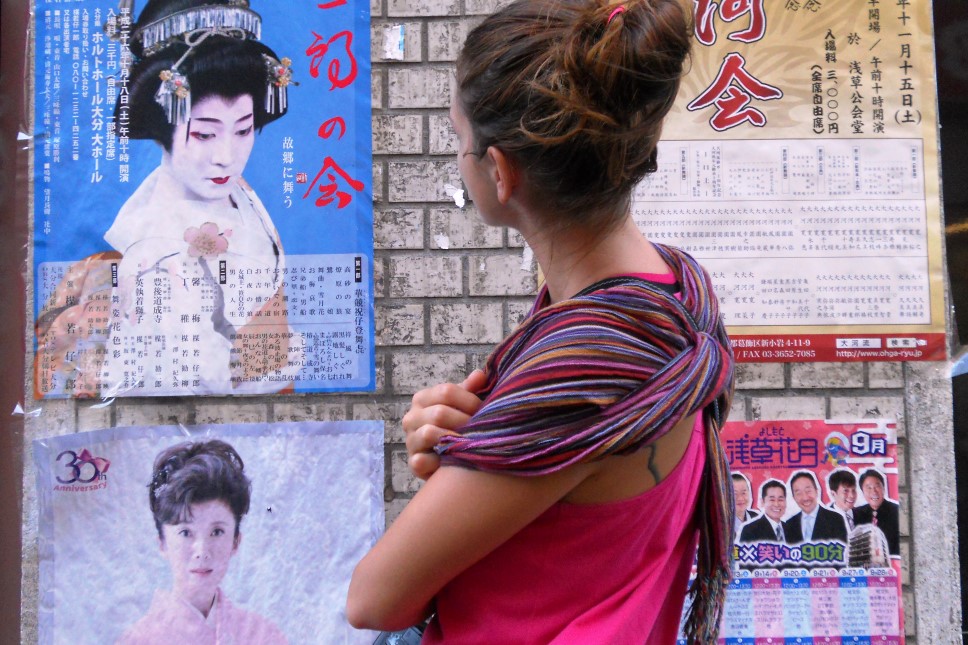
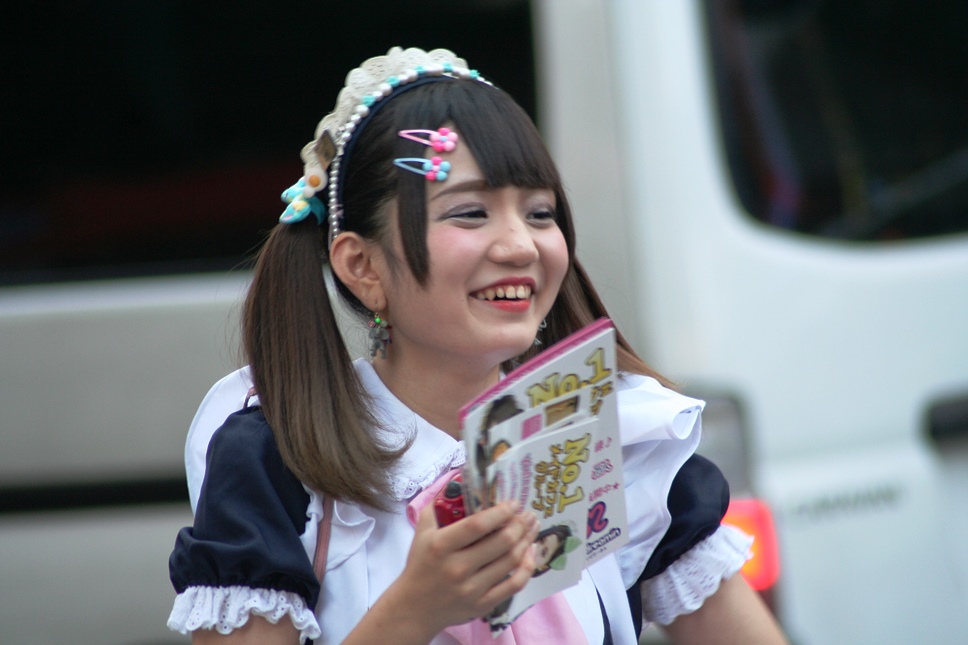
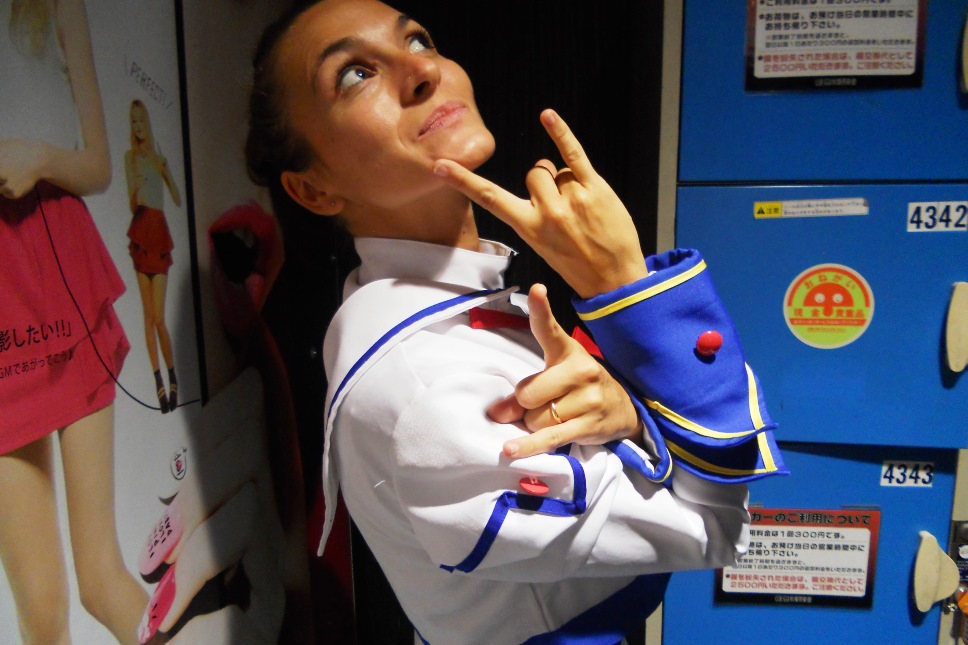

In the evening we reach the building of the "Tokyo Metropolitan Government" and from the 45th floor we enjoy one of the most spectacular views!
An endless carpet of lights all around us ... without end!
What better way to say goodbye to such a magical city!
Error: No feed found.
Please go to the Instagram Feed settings page to create a feed.
4 Responses
Beautiful looks amazing fantastic write up.
Thanks,i’m glad you liked it…it might be a nice start if you decide to visit this amazing land
Fukuoka is in Kyushuu island…
It’s a pity that you have missed the WASABI manufactury after Matsumoto en route to Nagano…
And Hakuba the famous winter sports resorts
unfortunatey we have skipped it this time… great tip for our next trip there. thanks